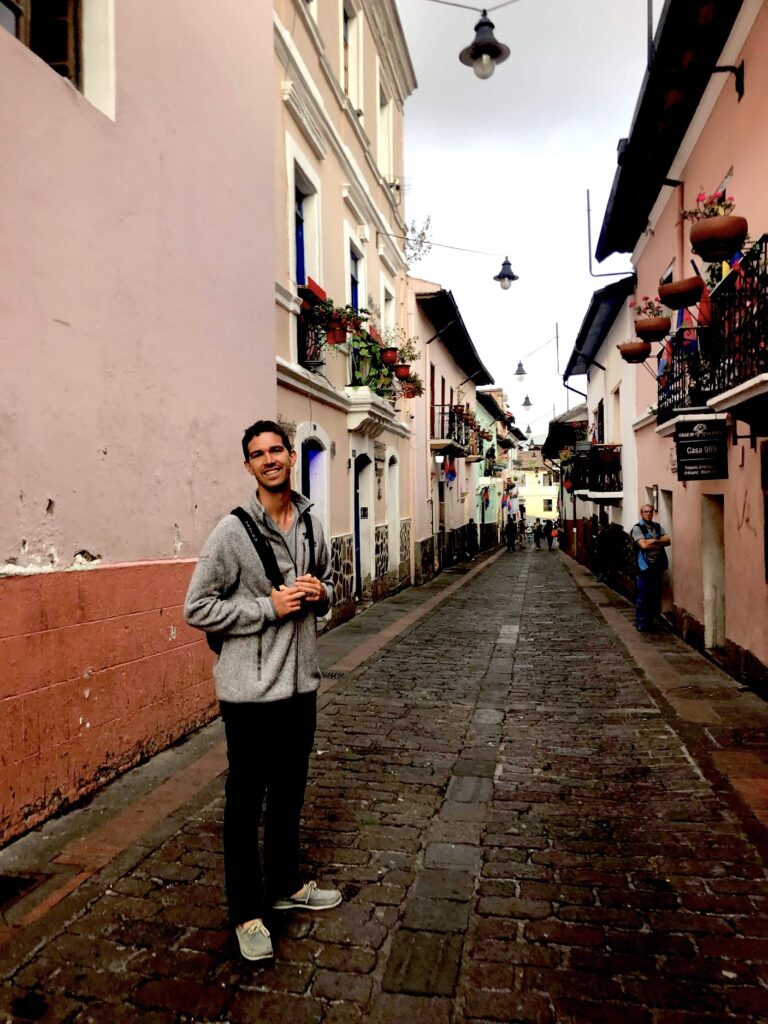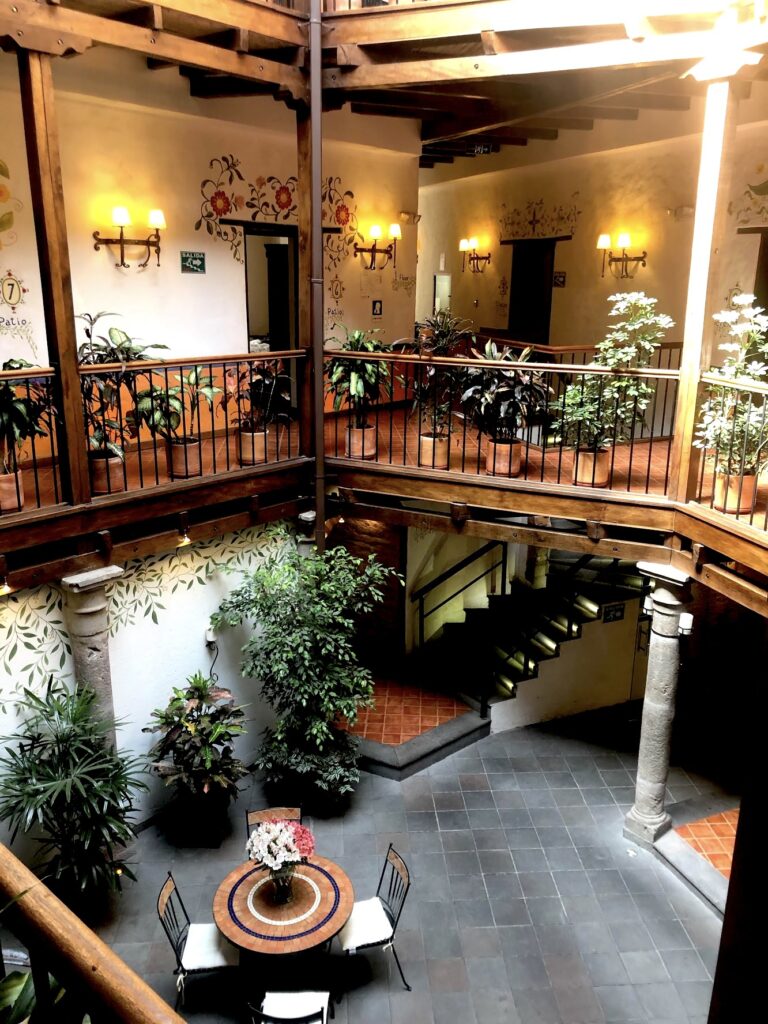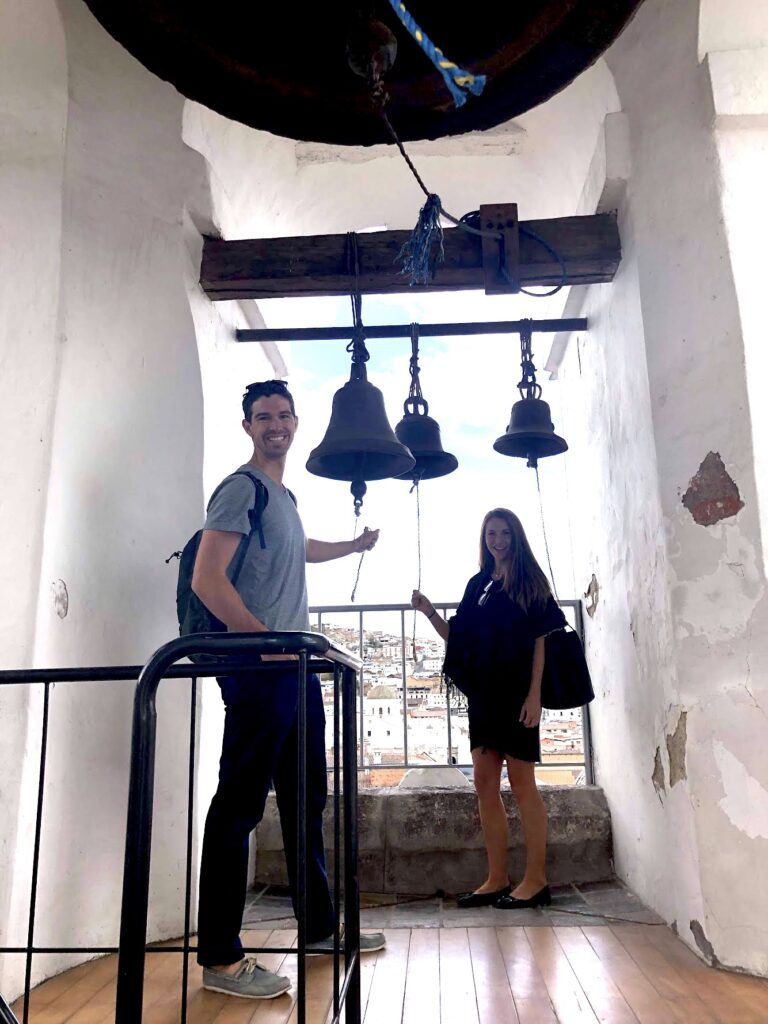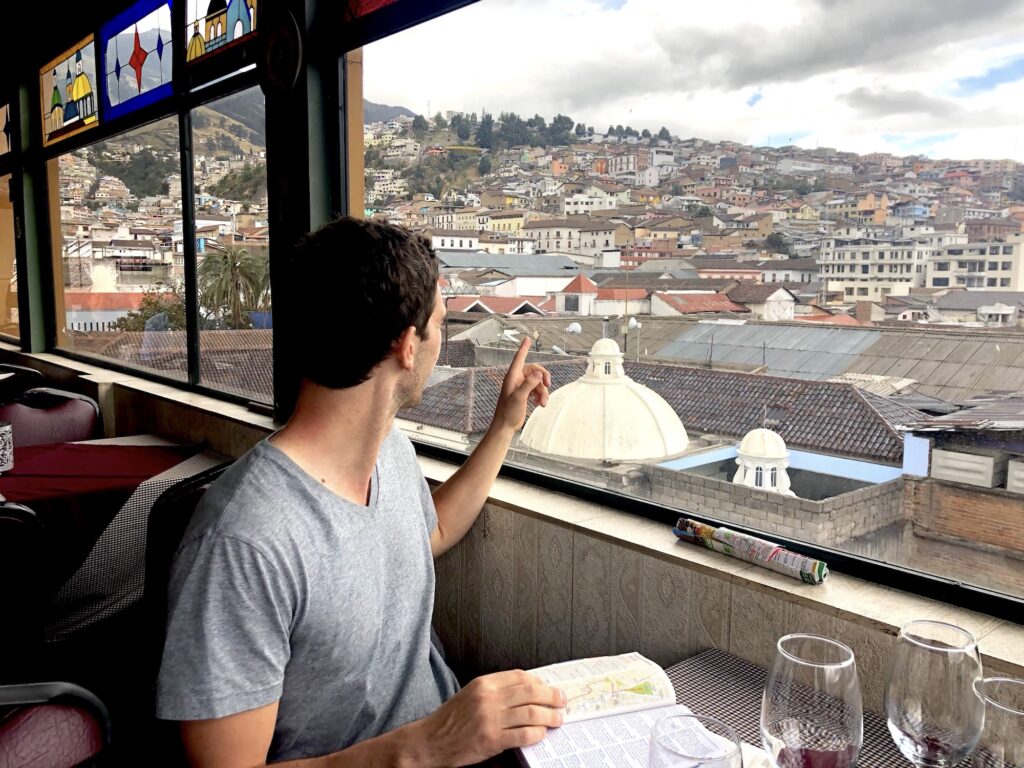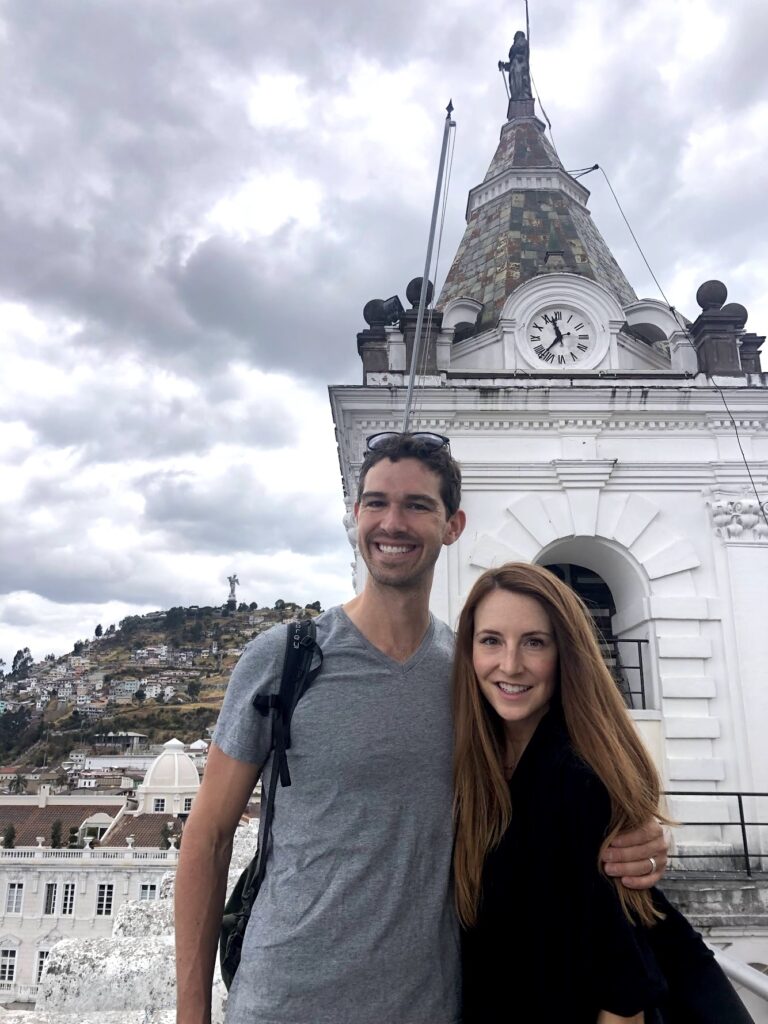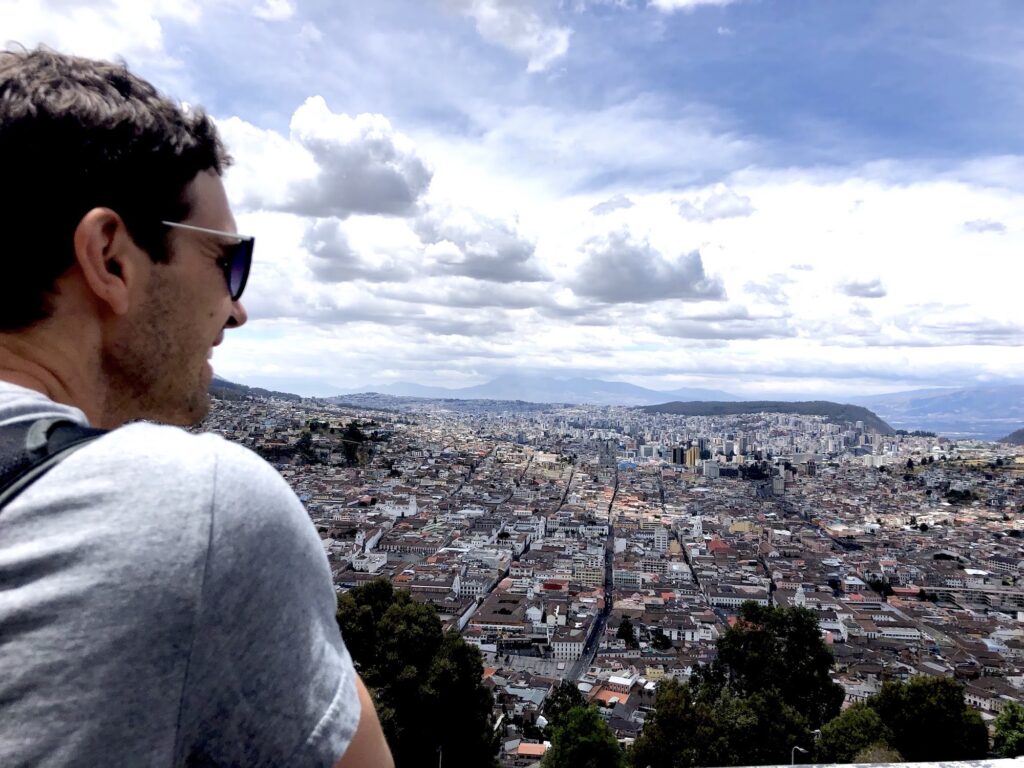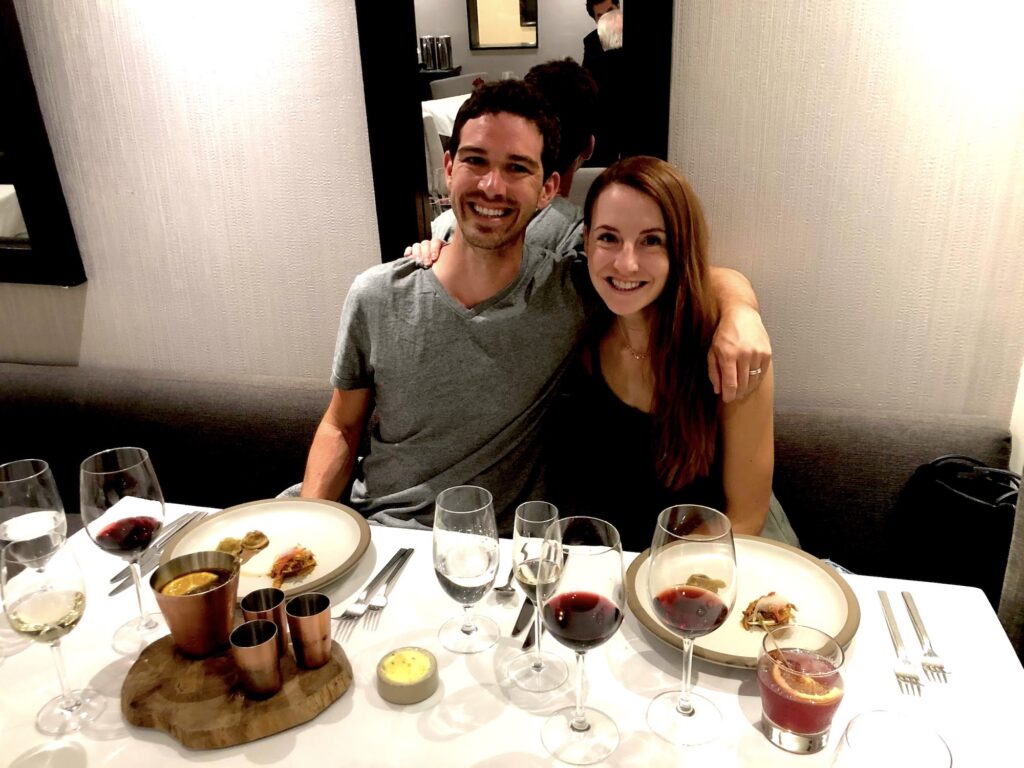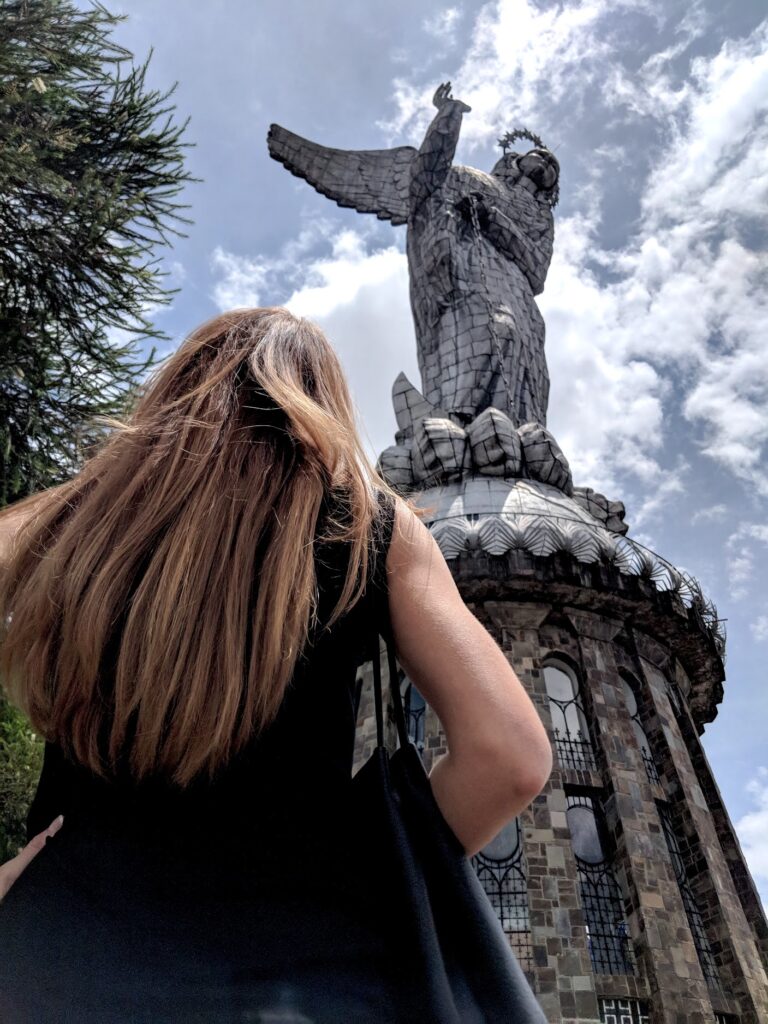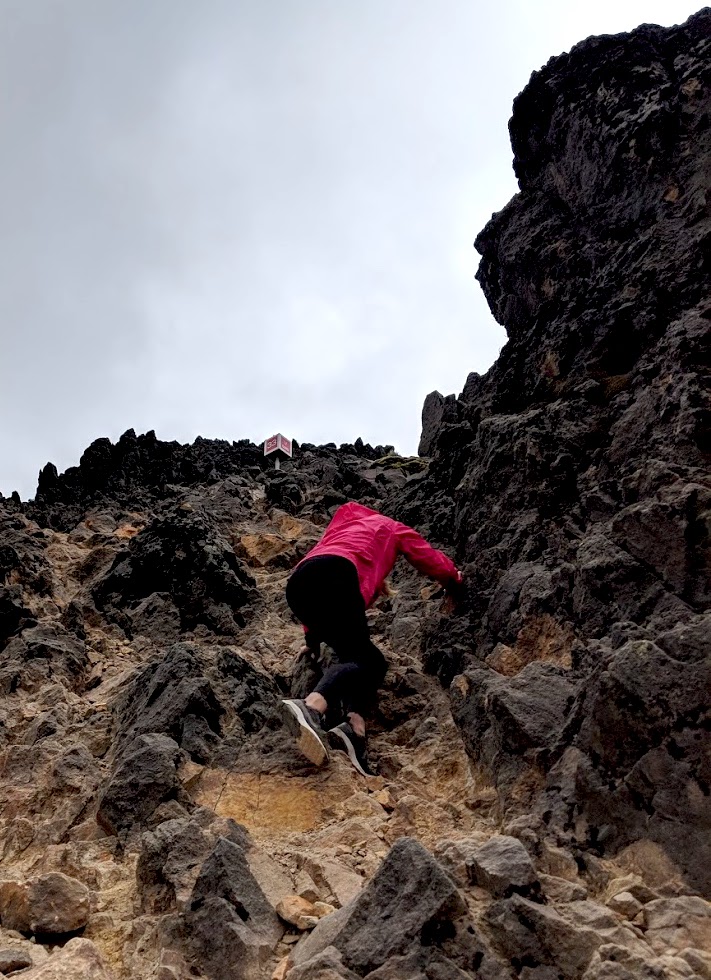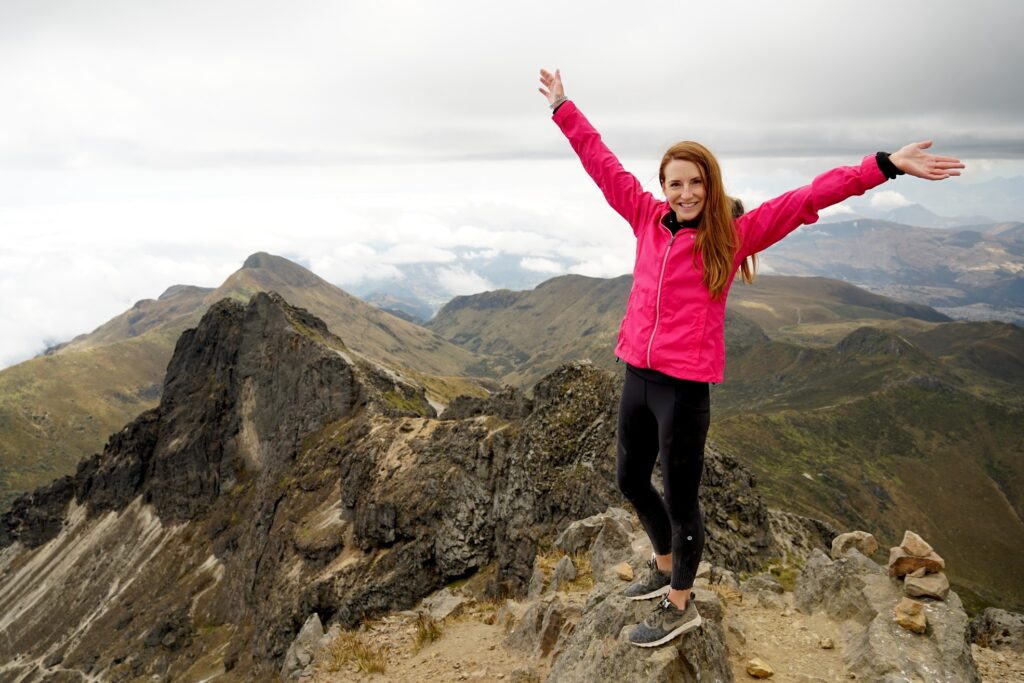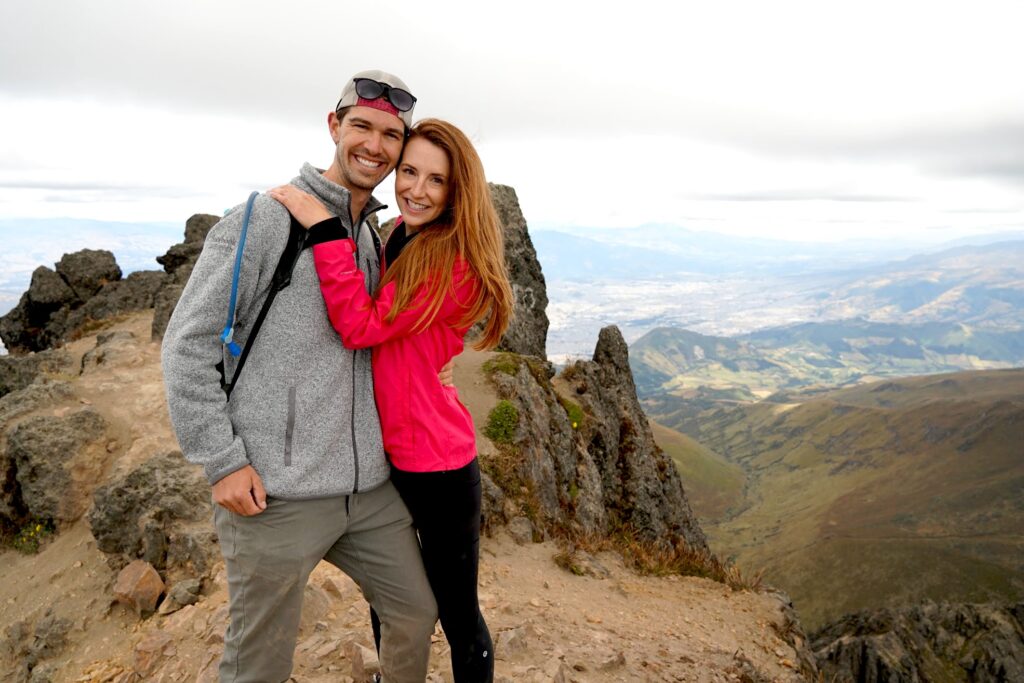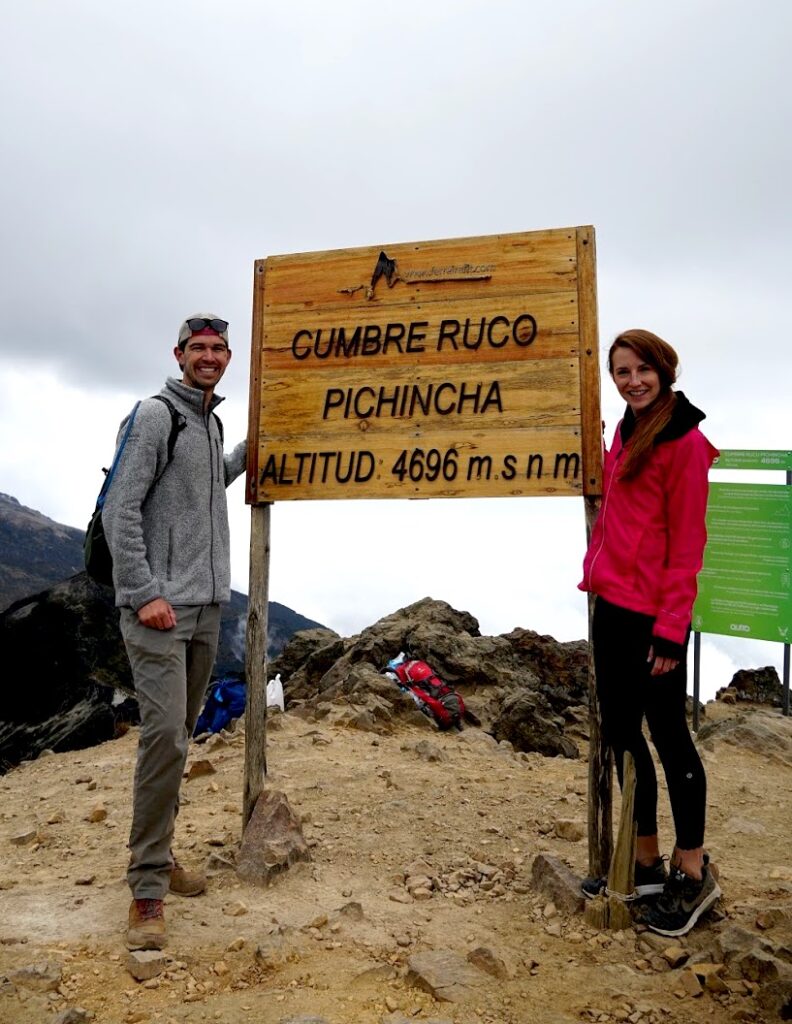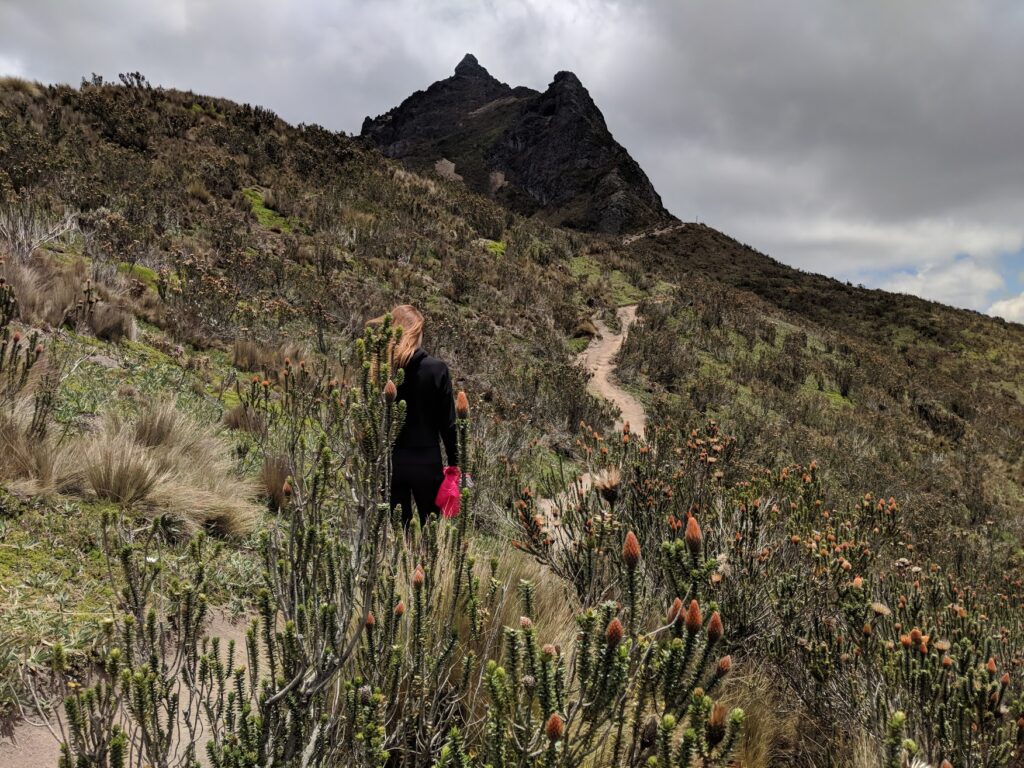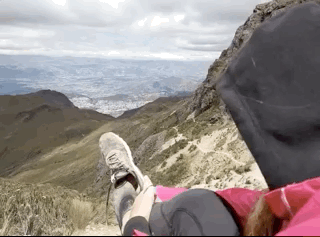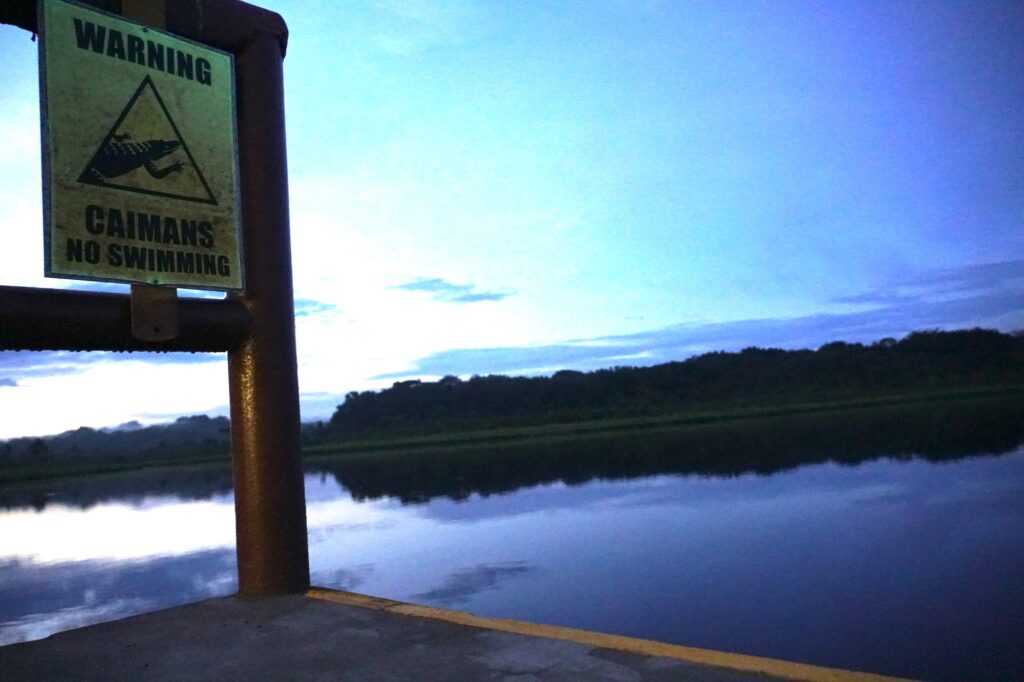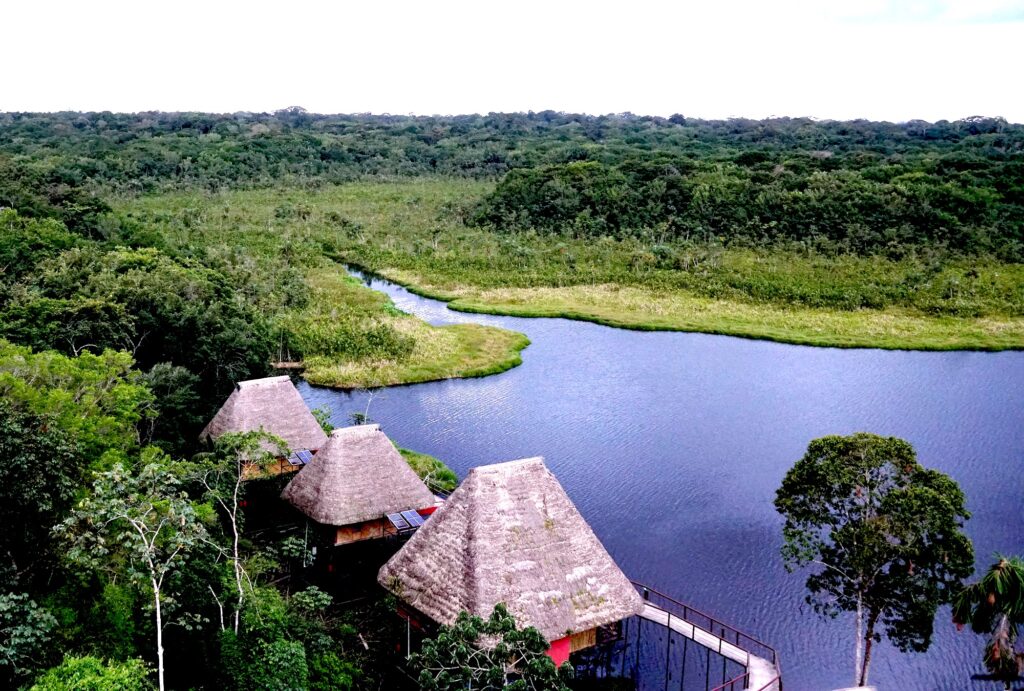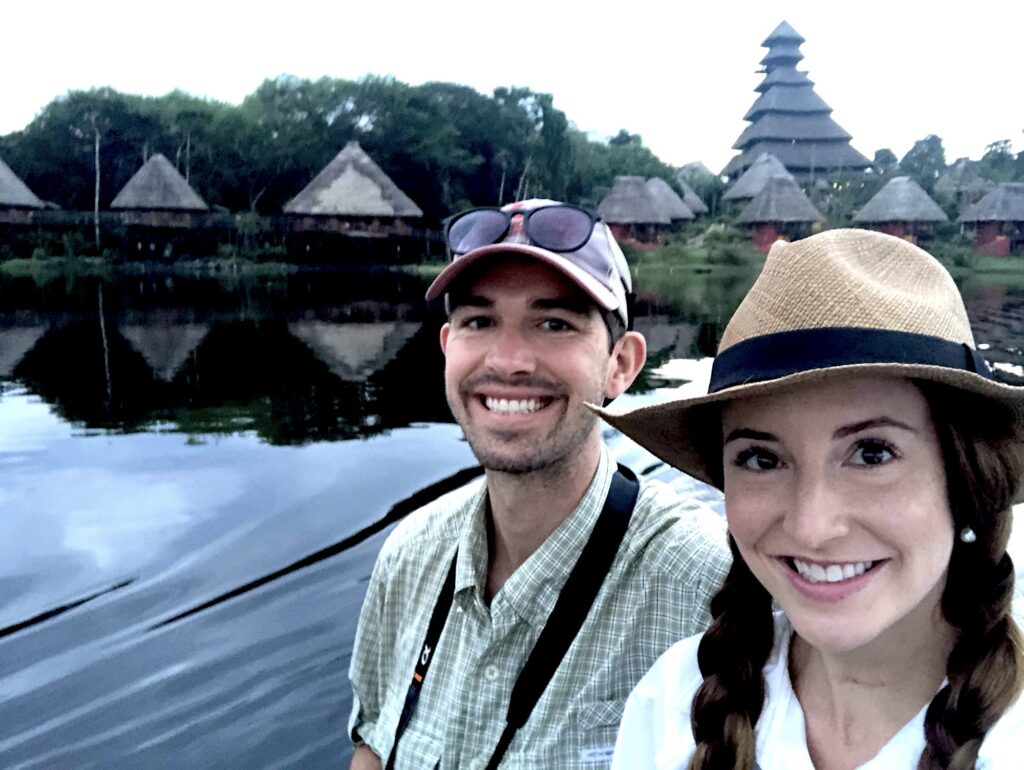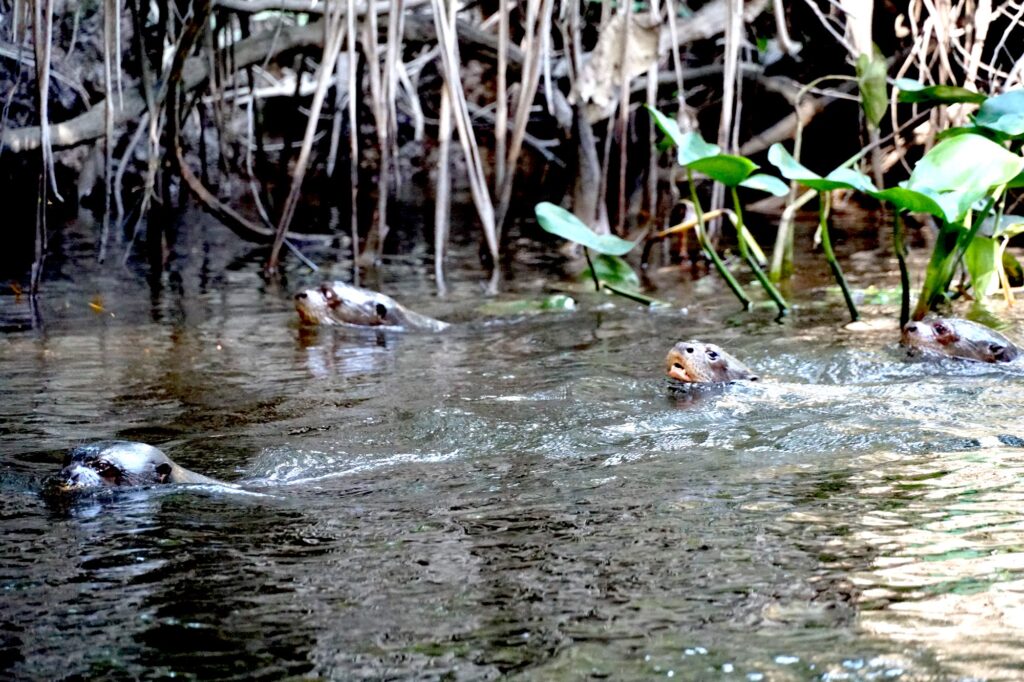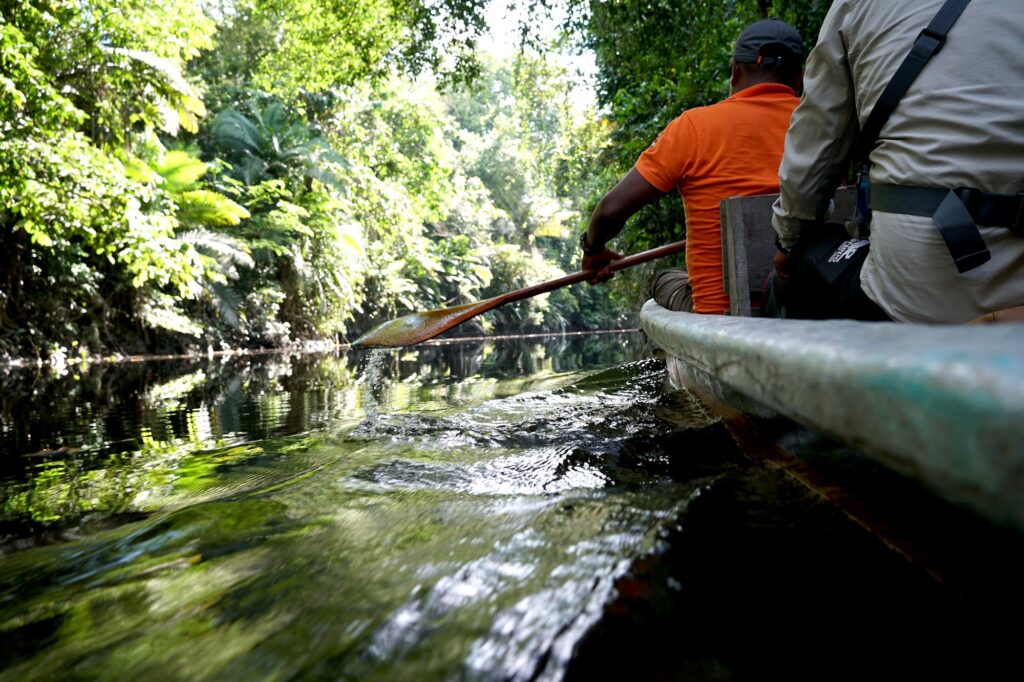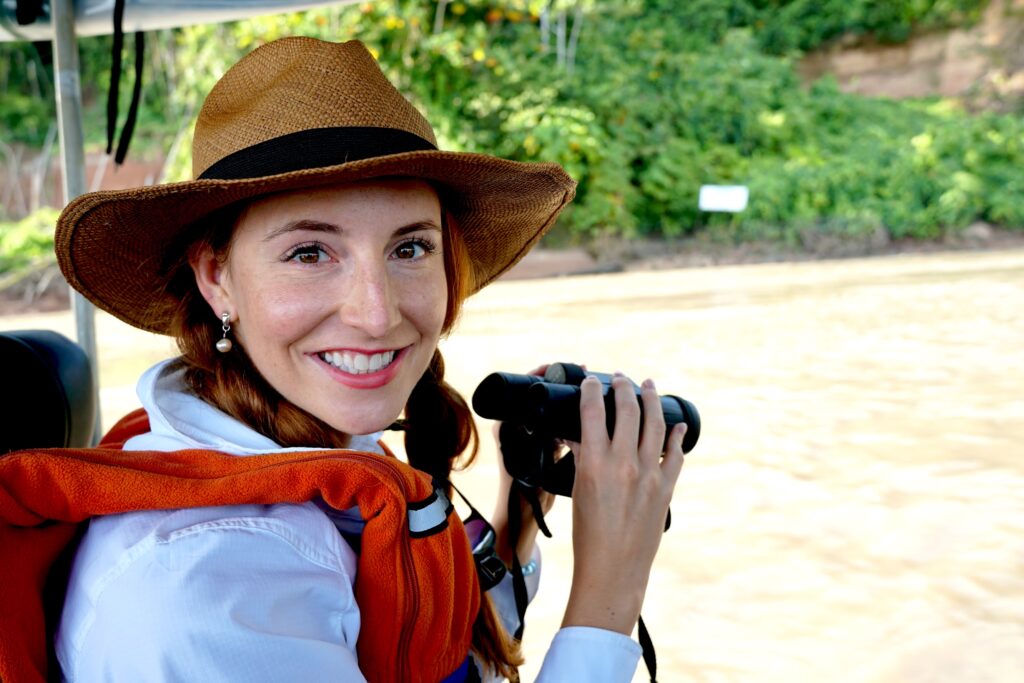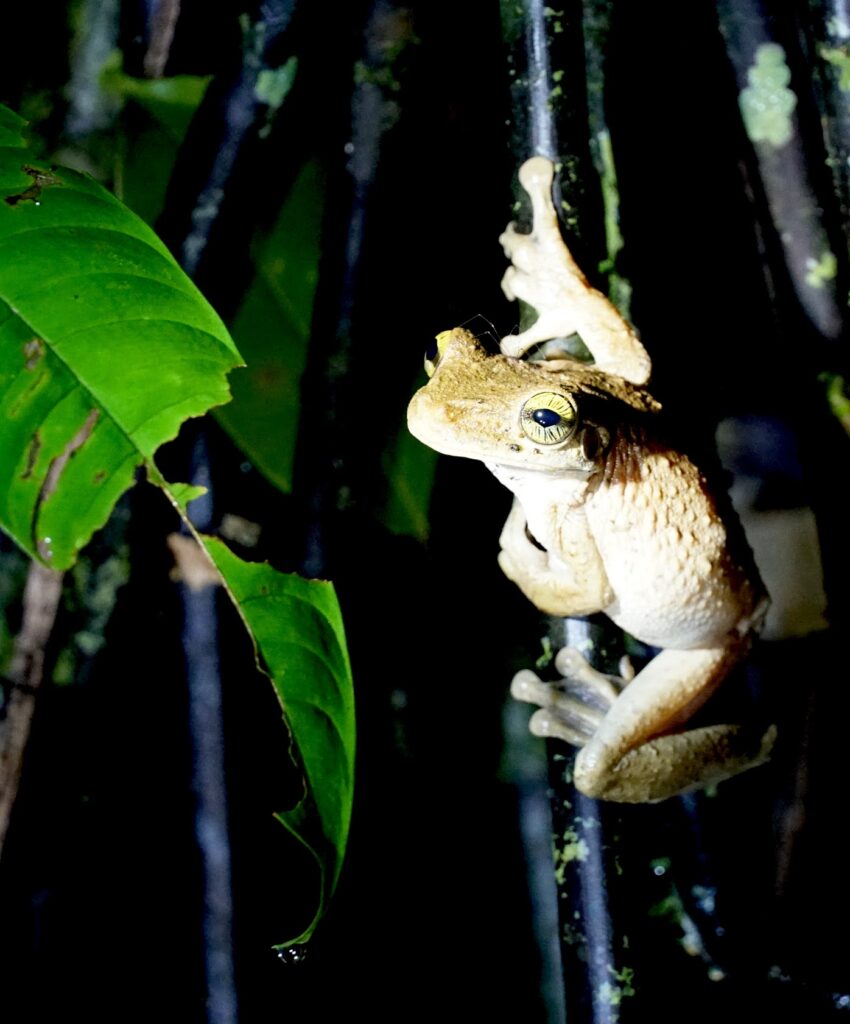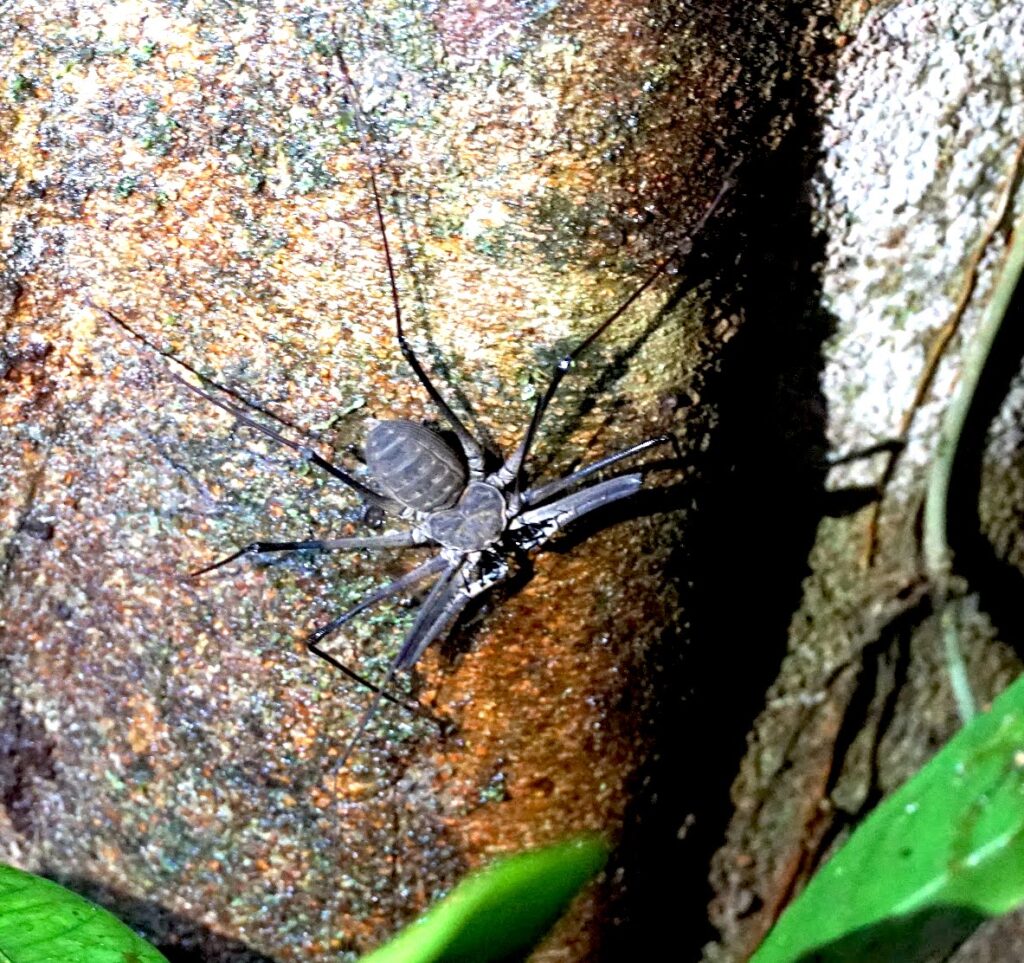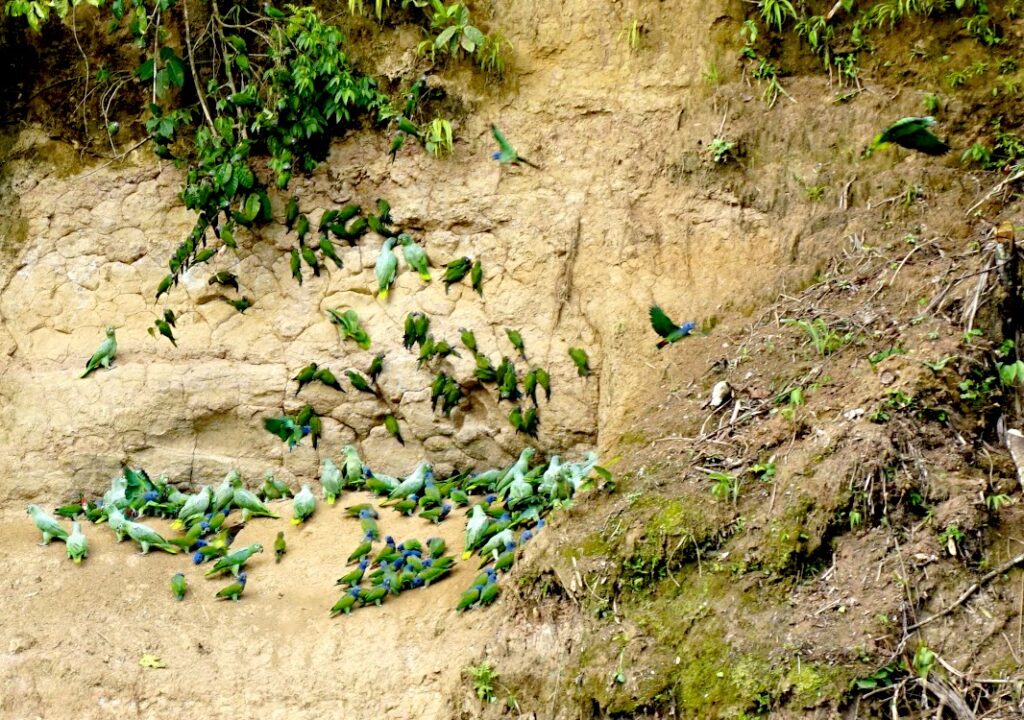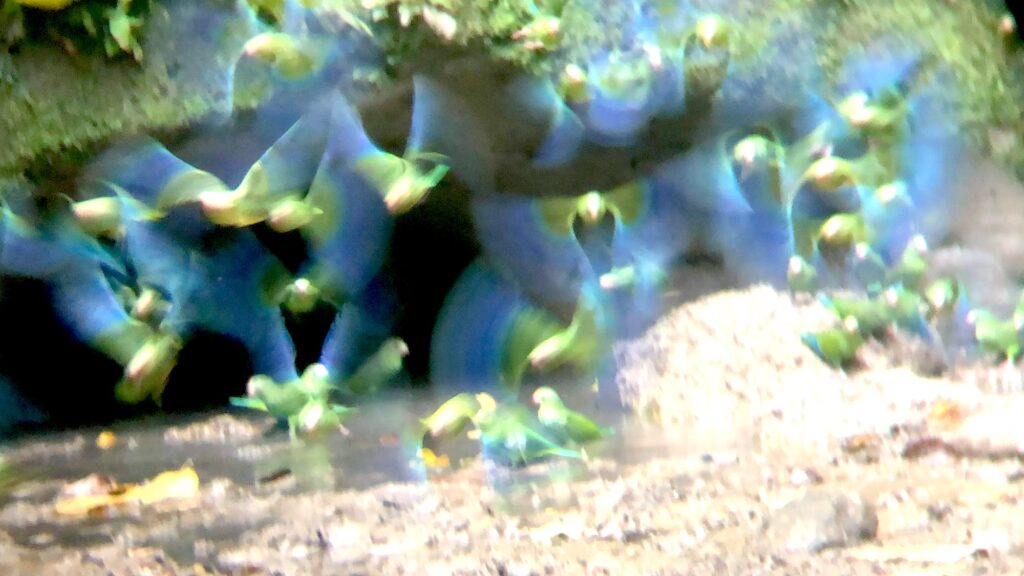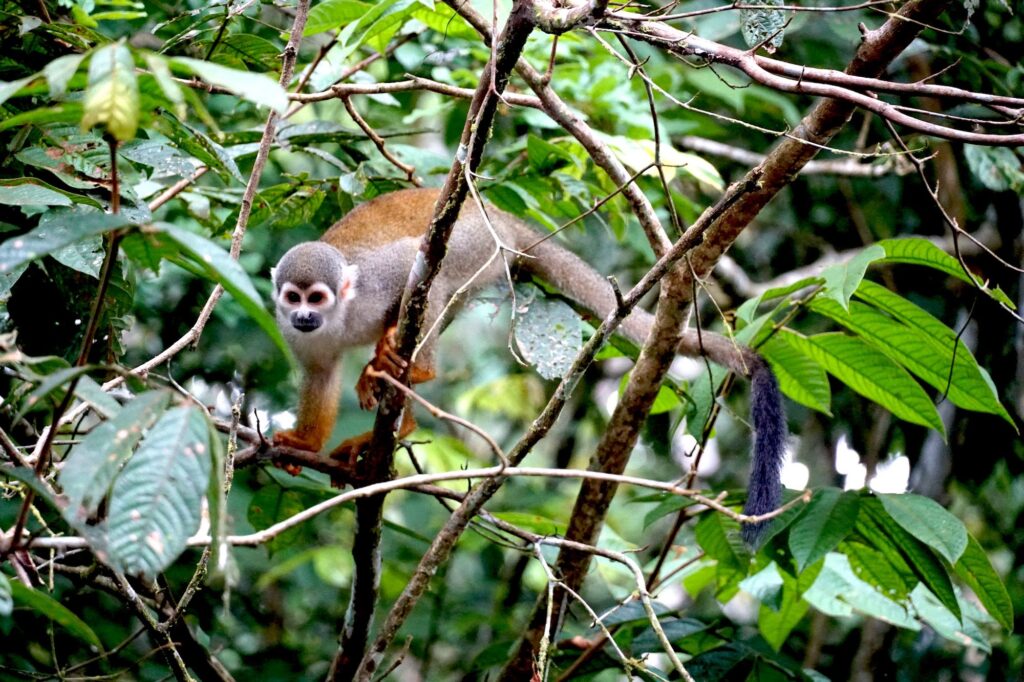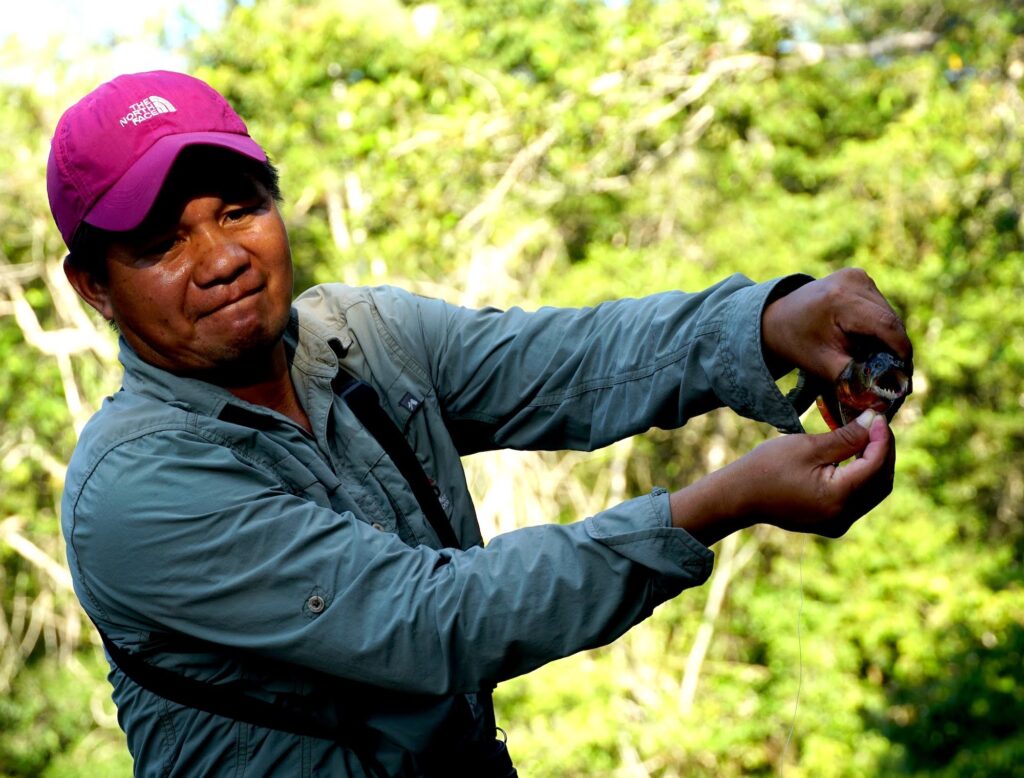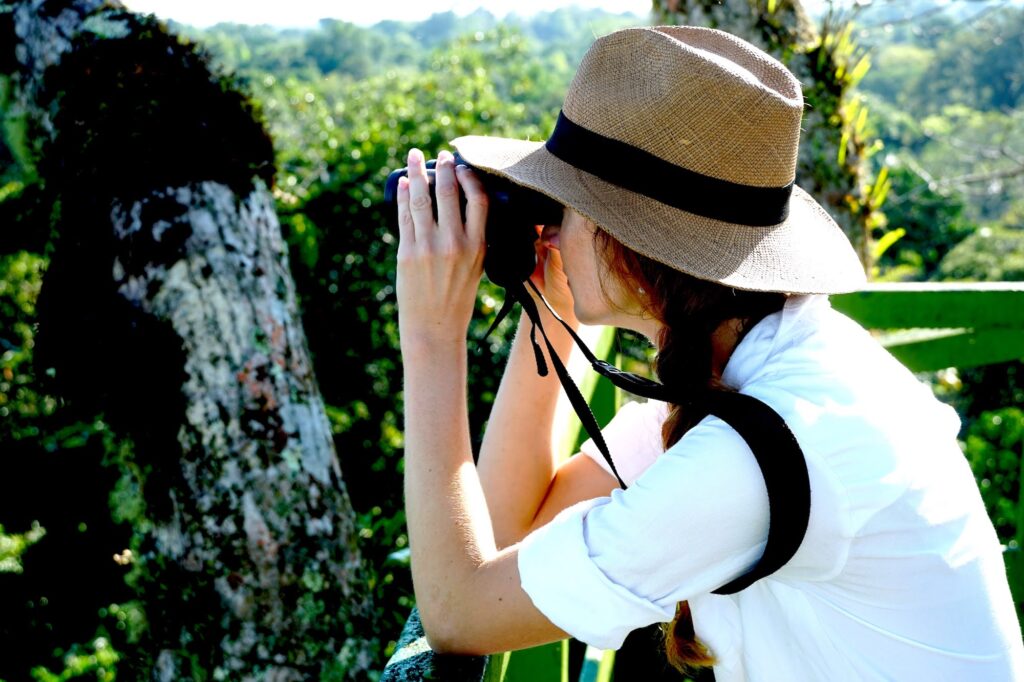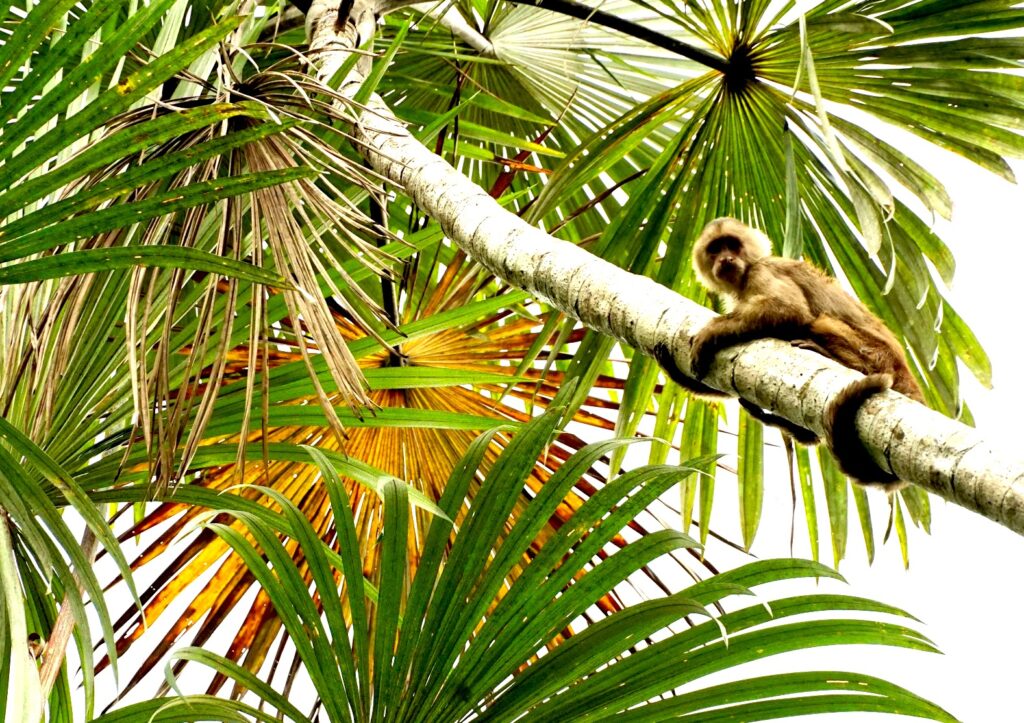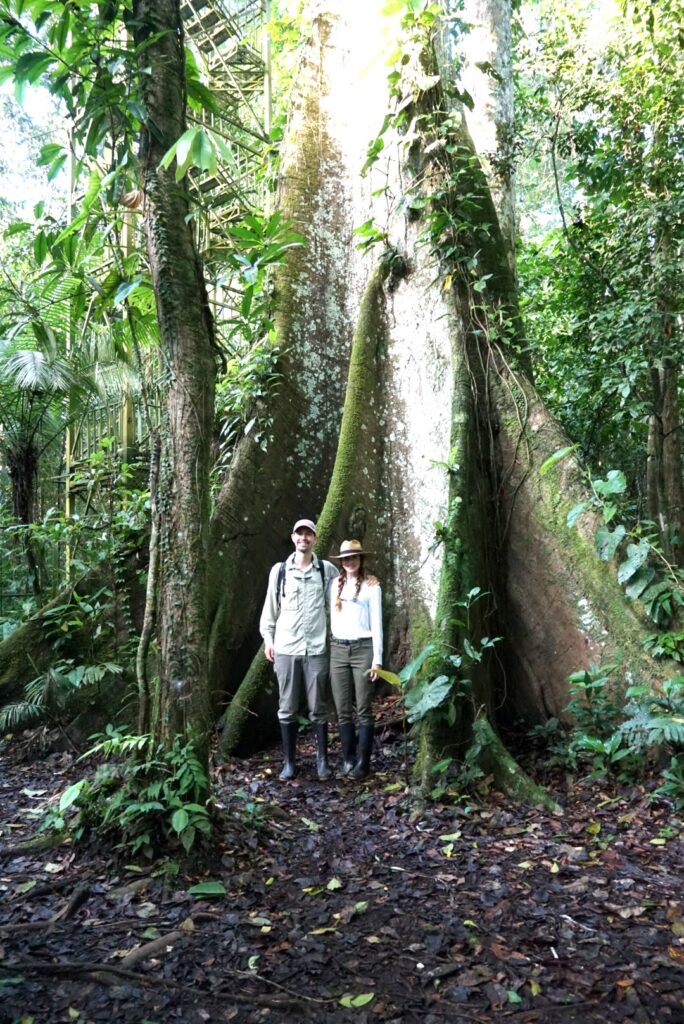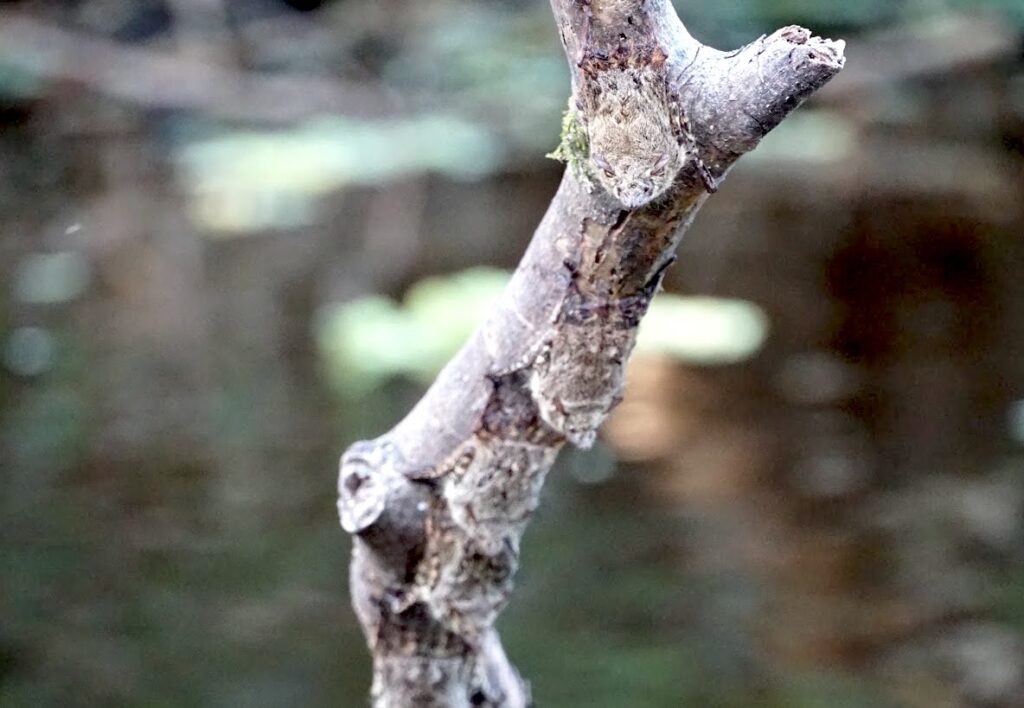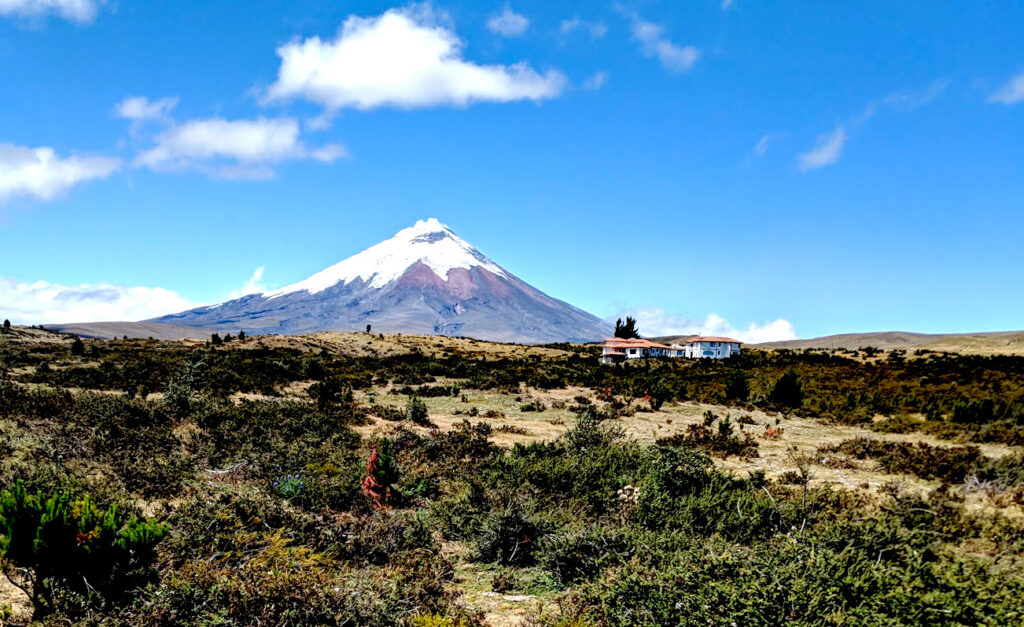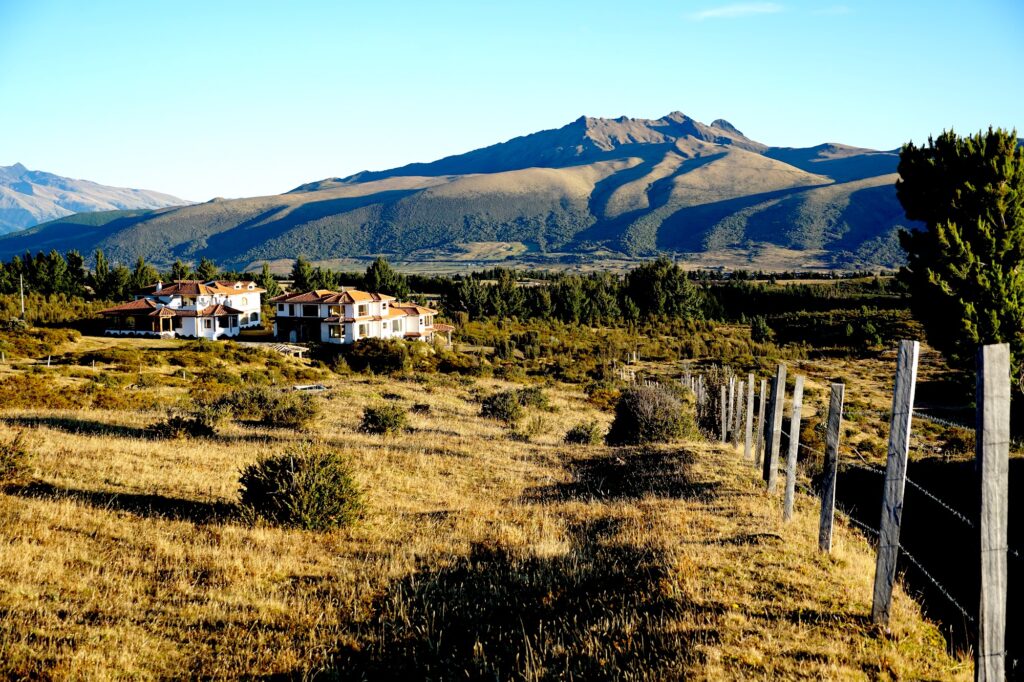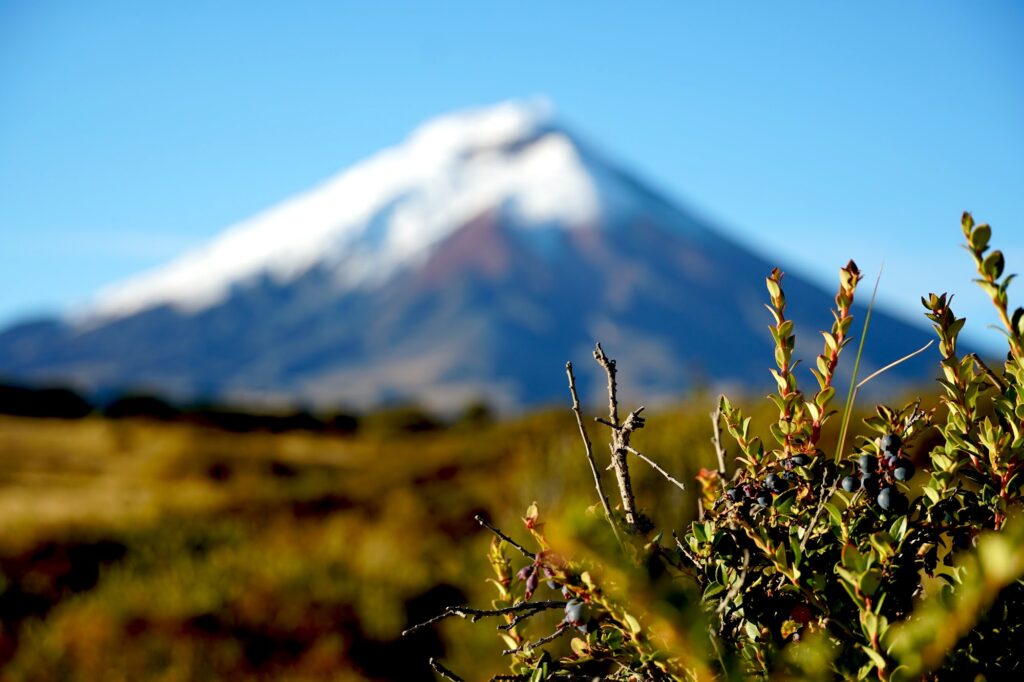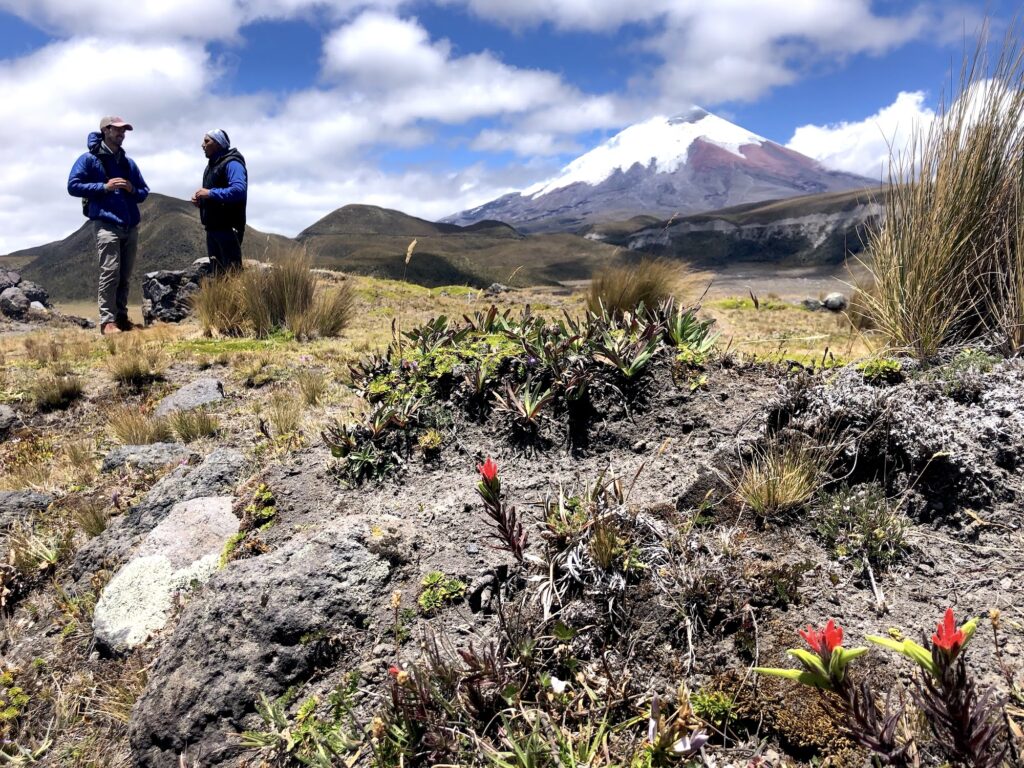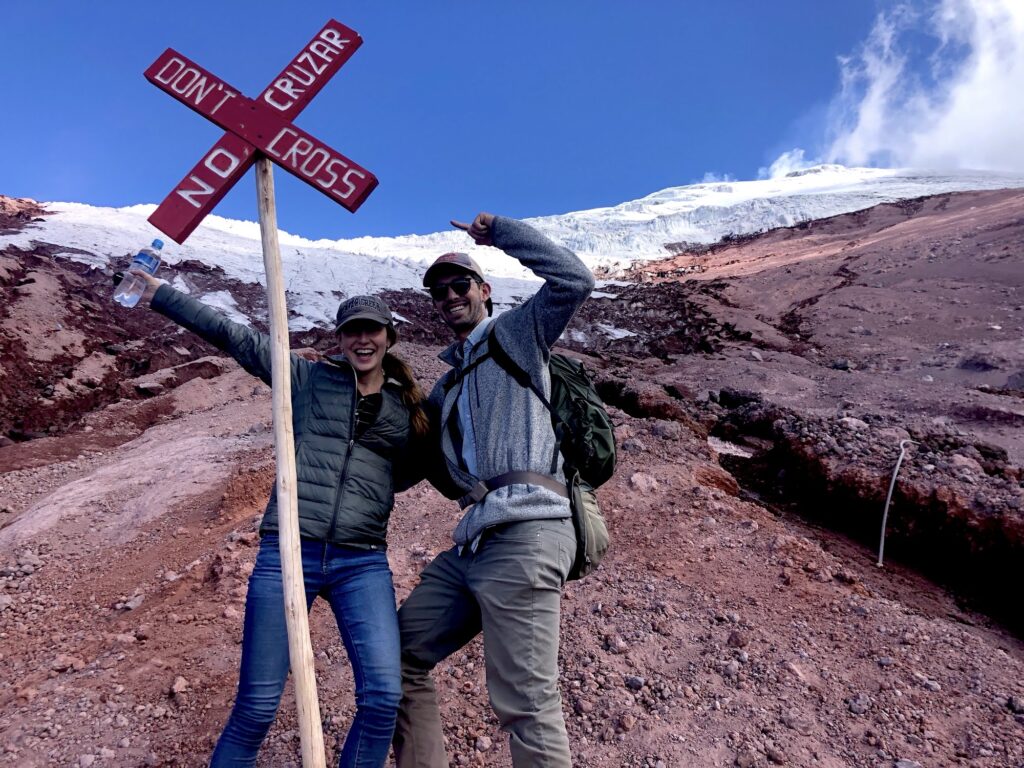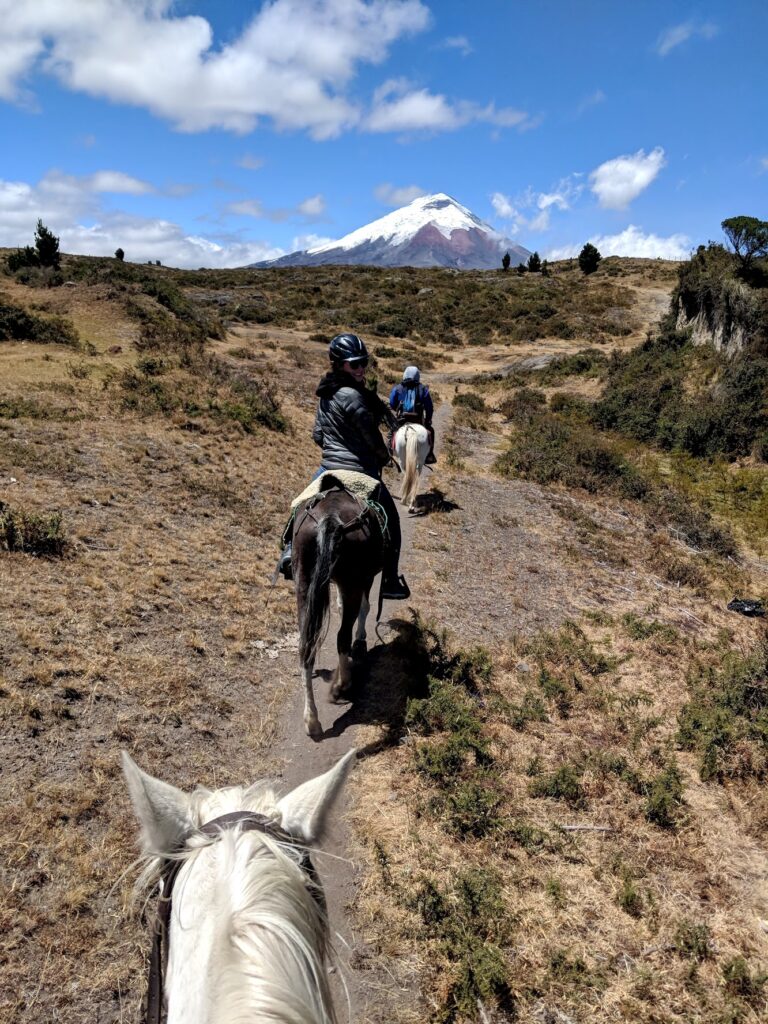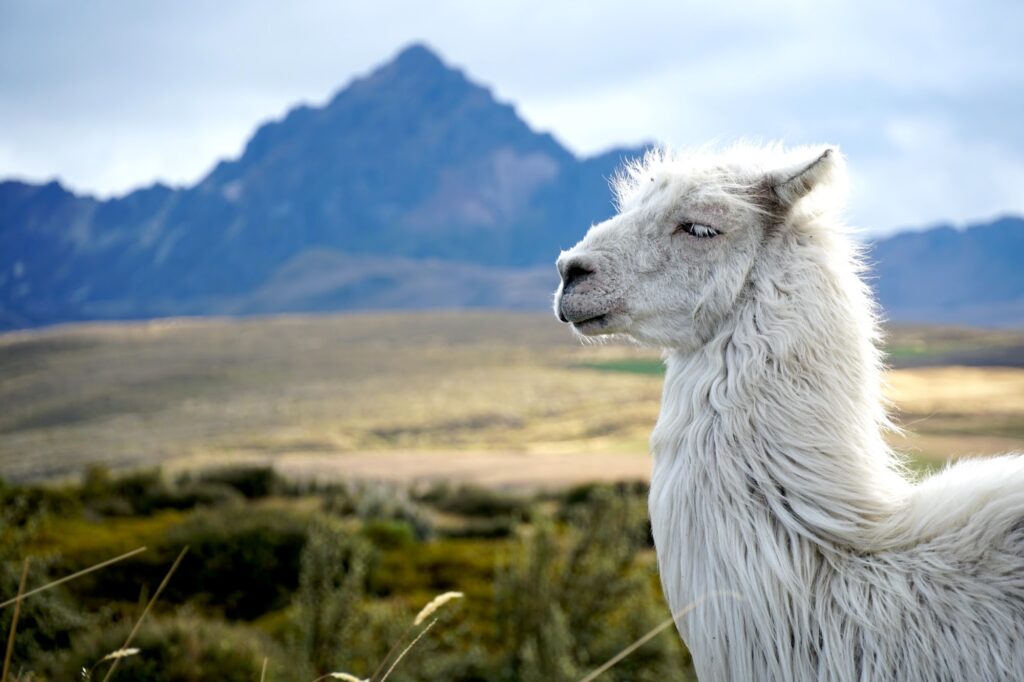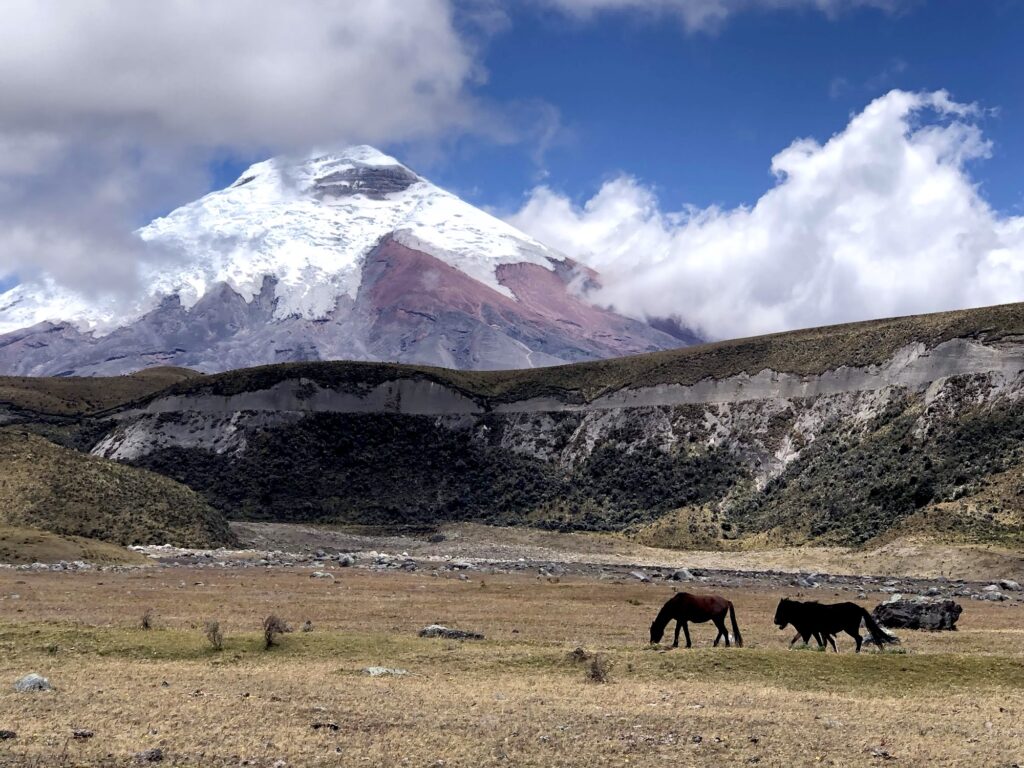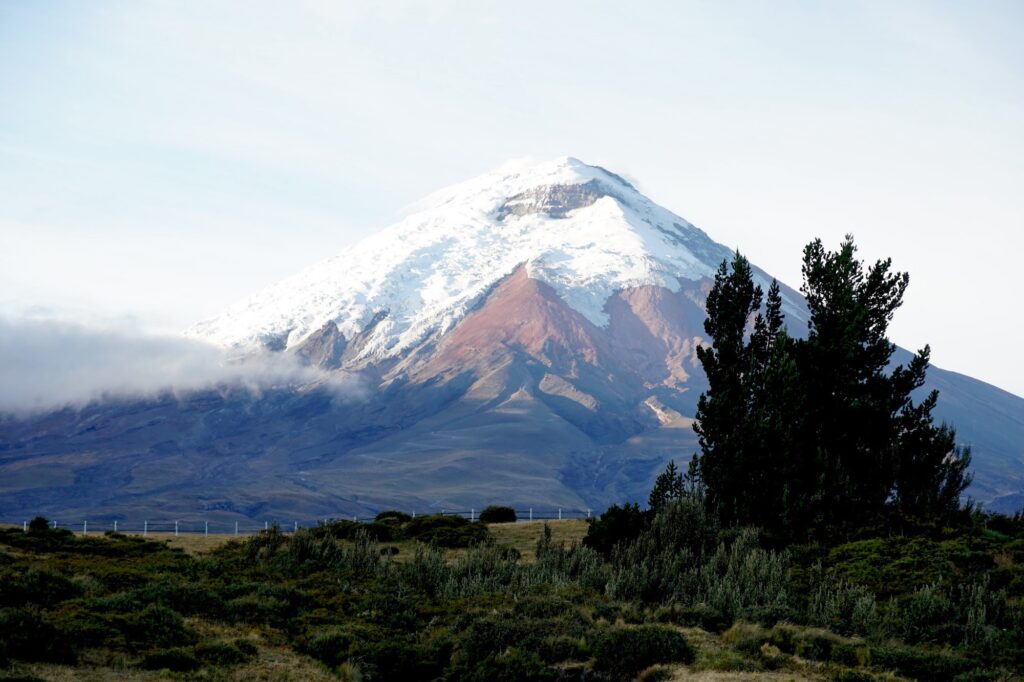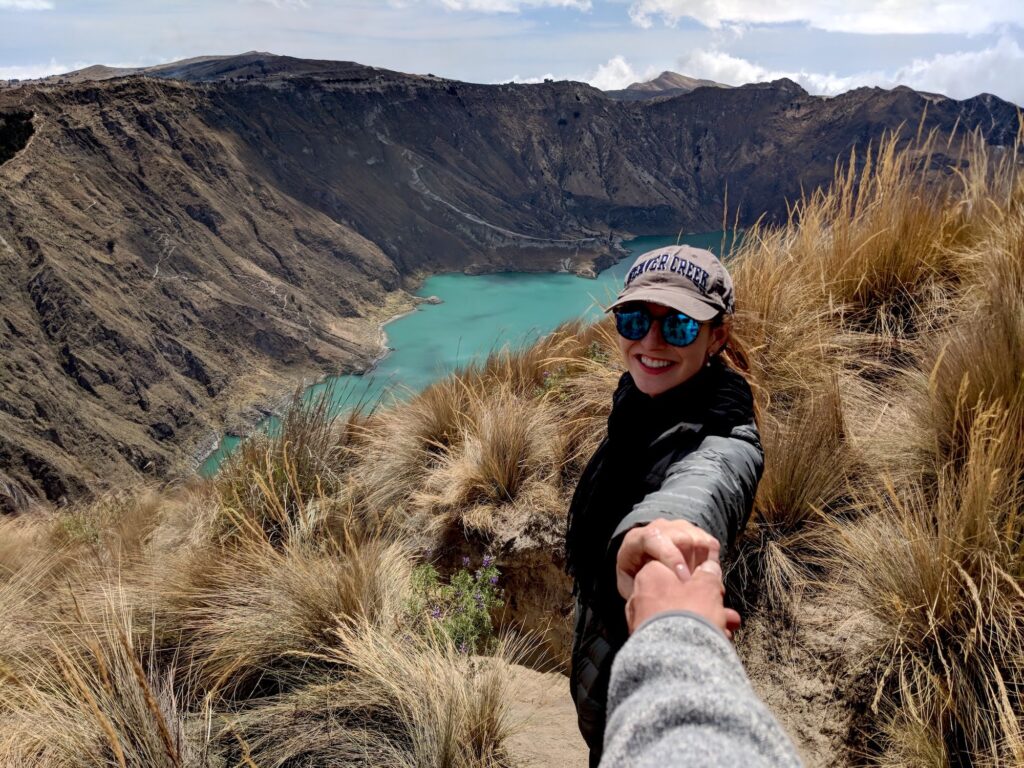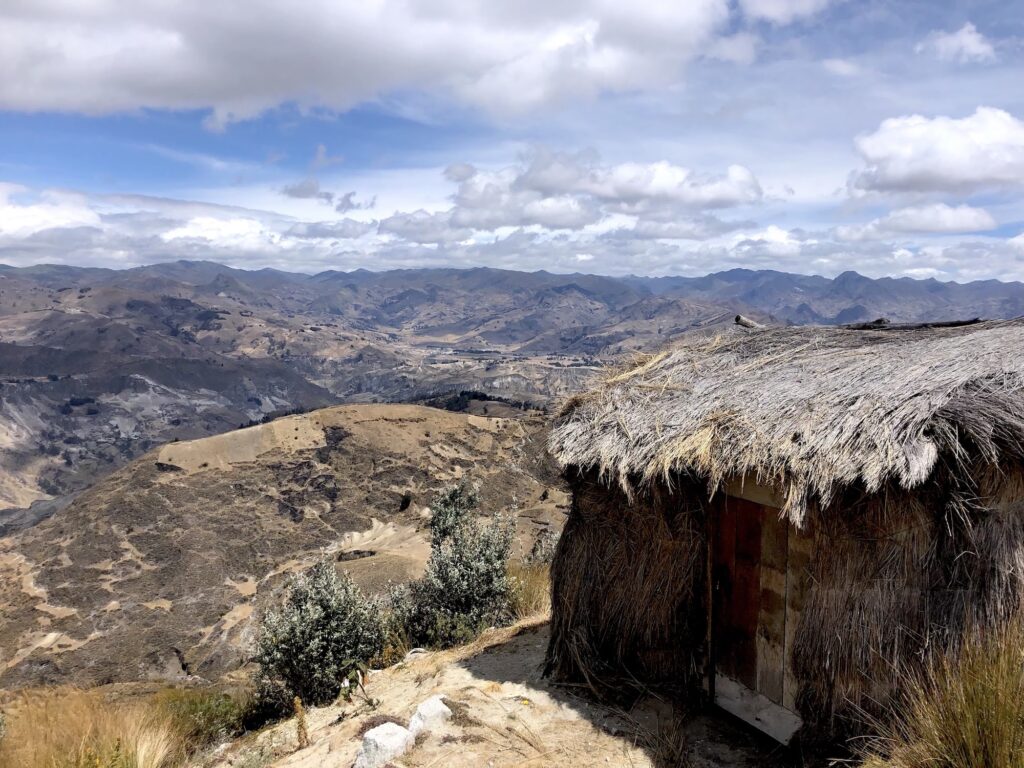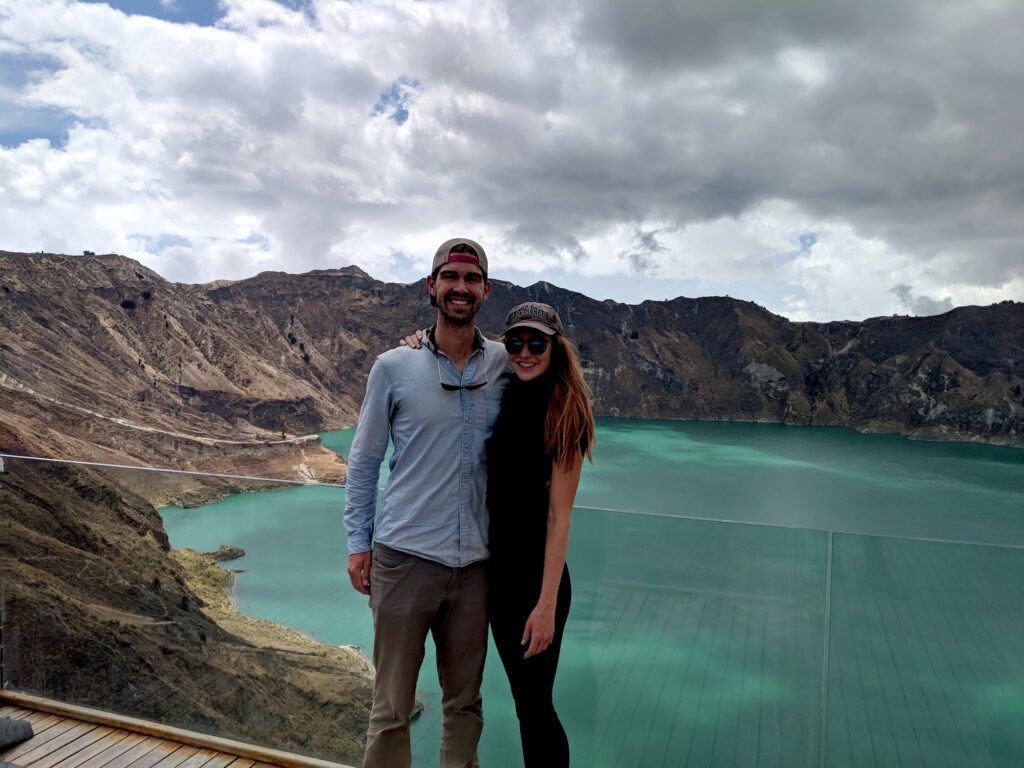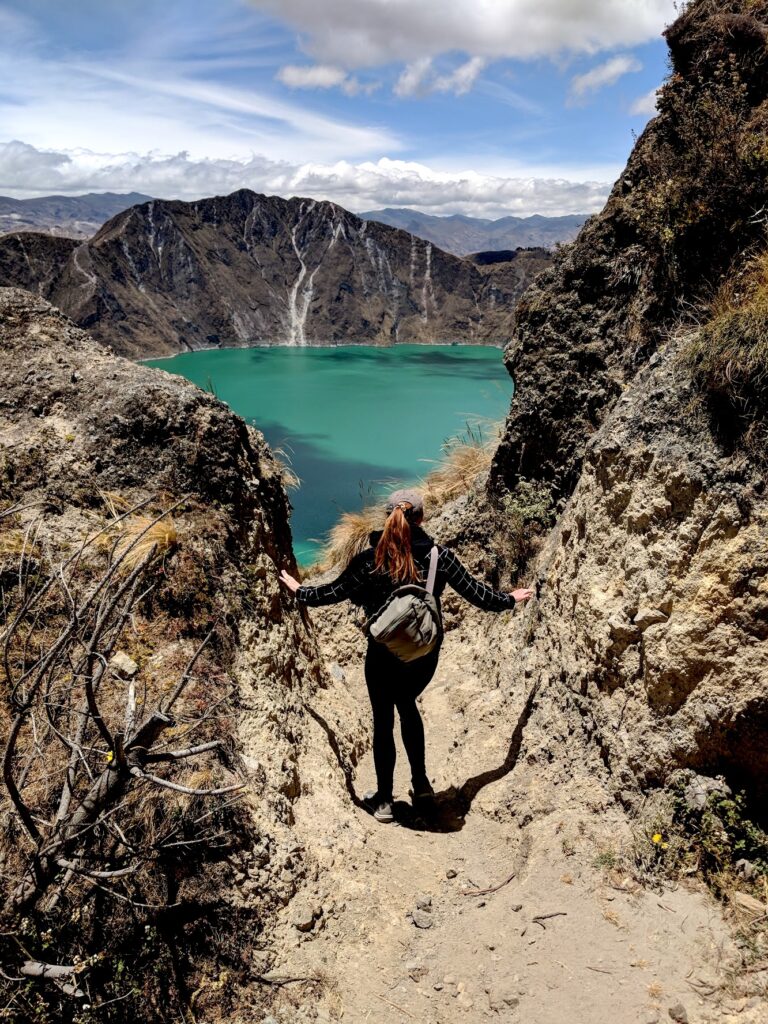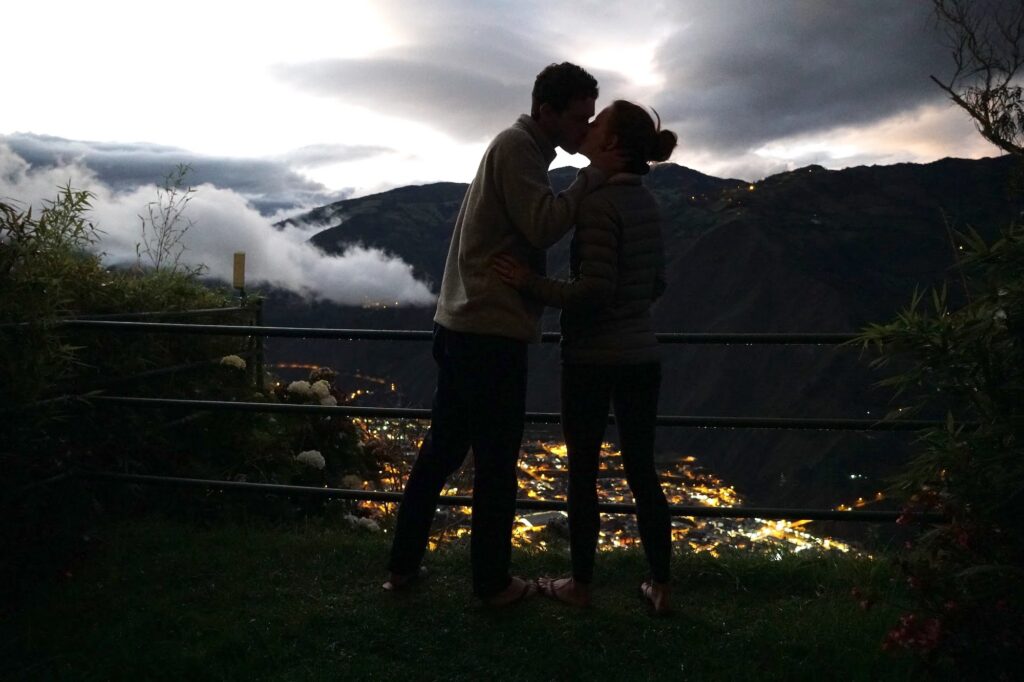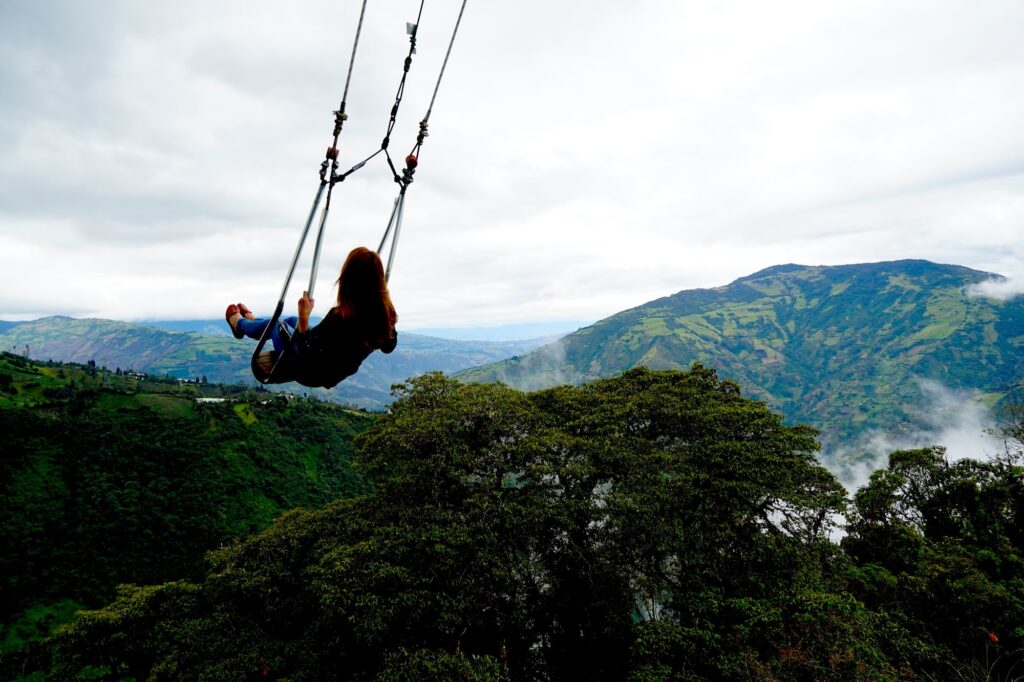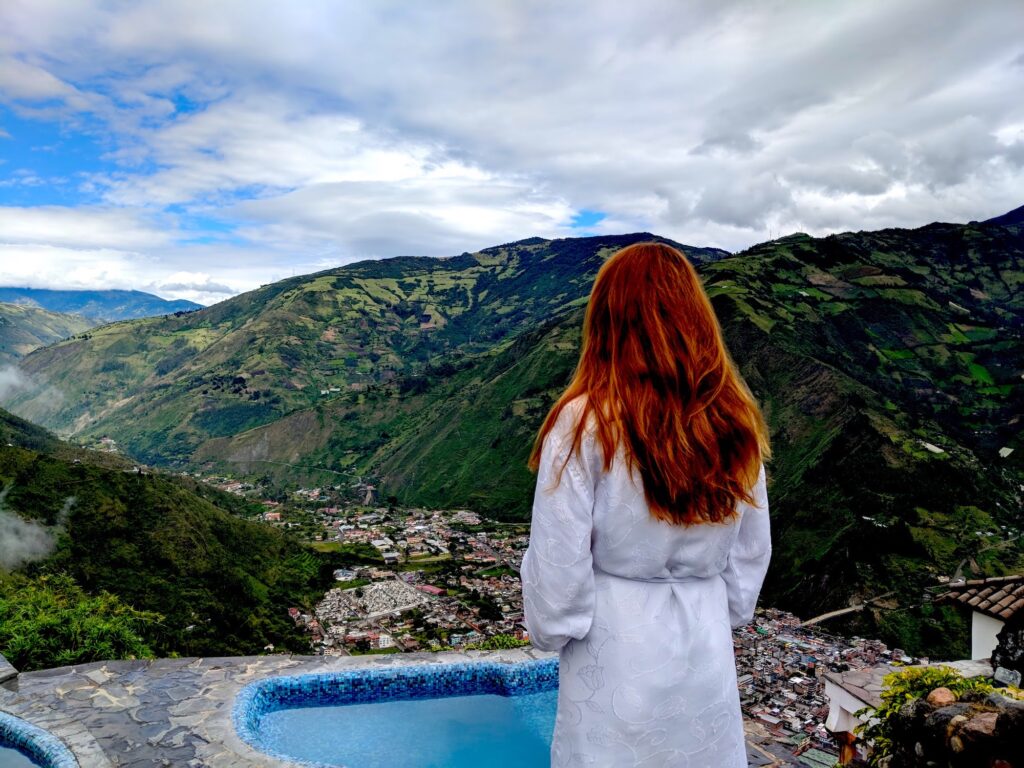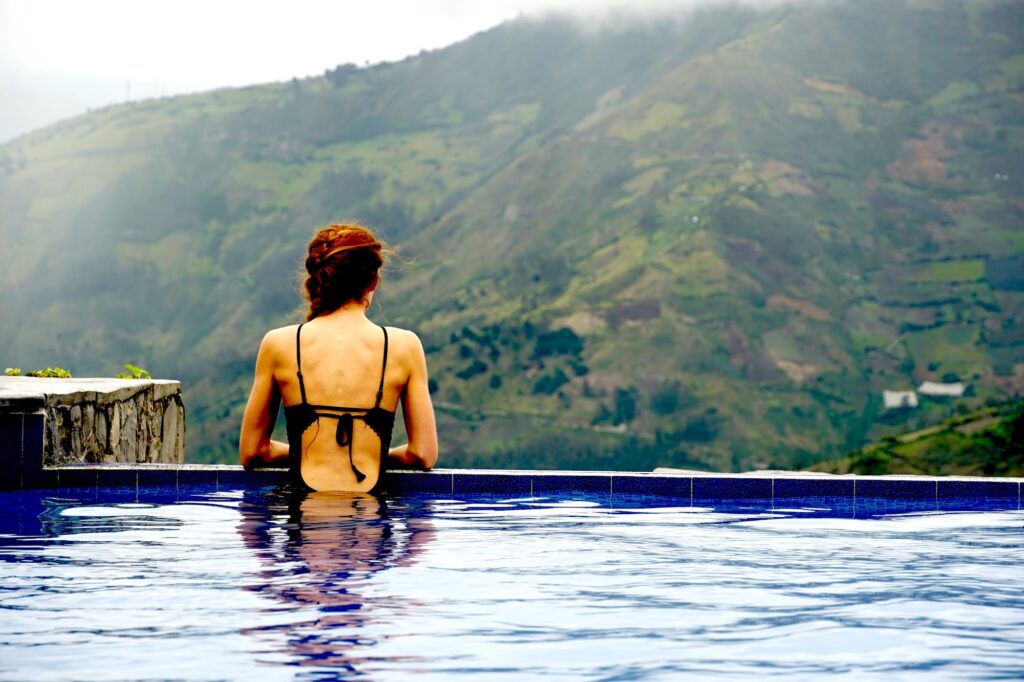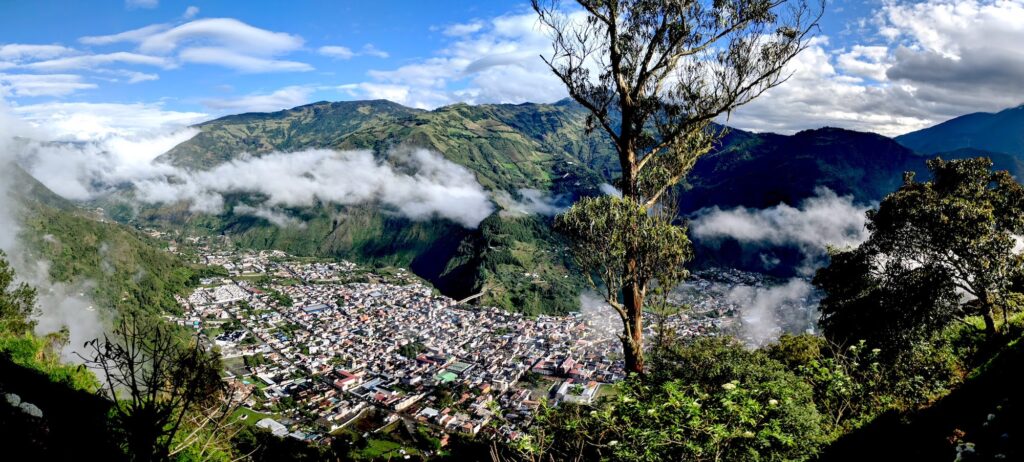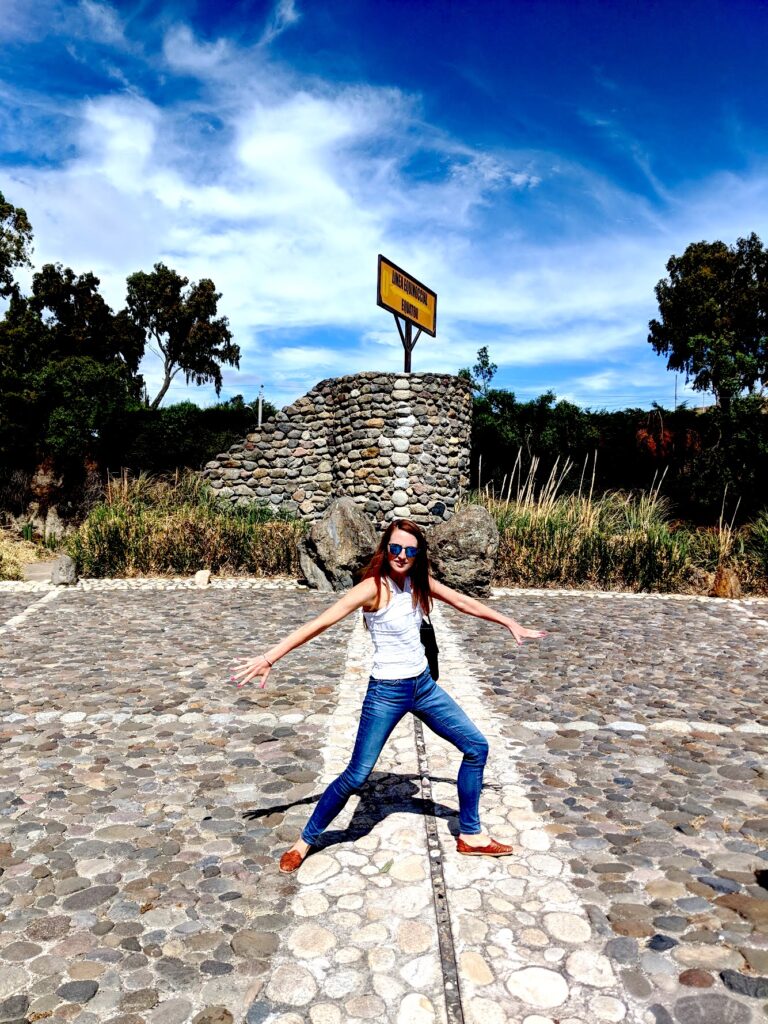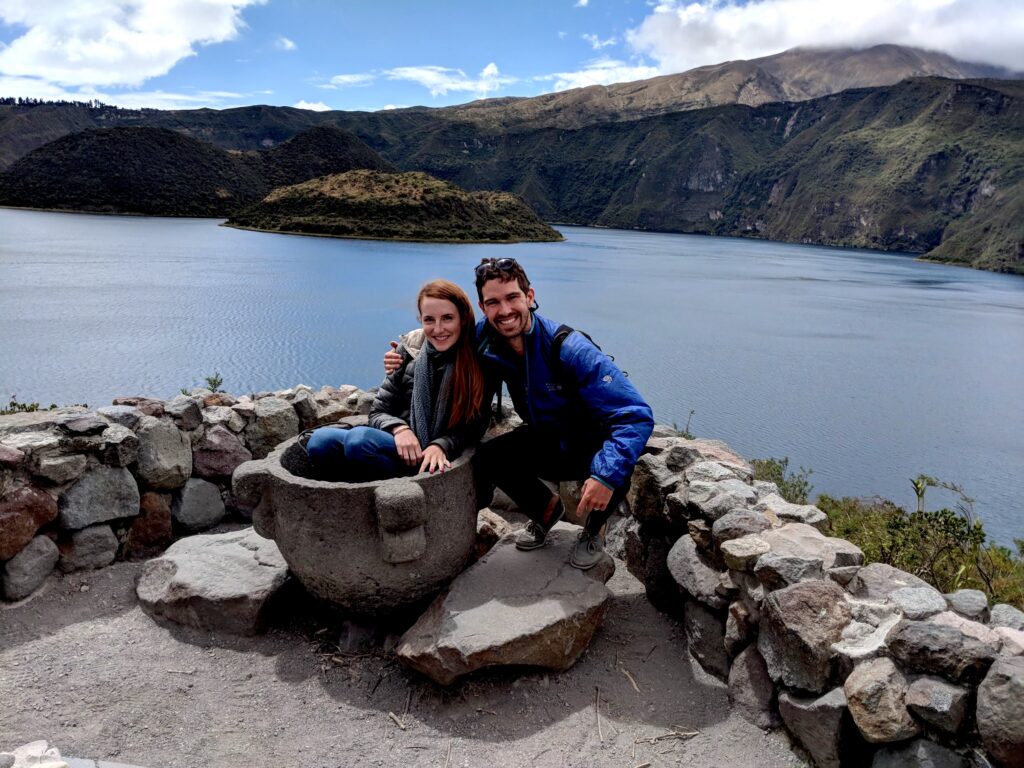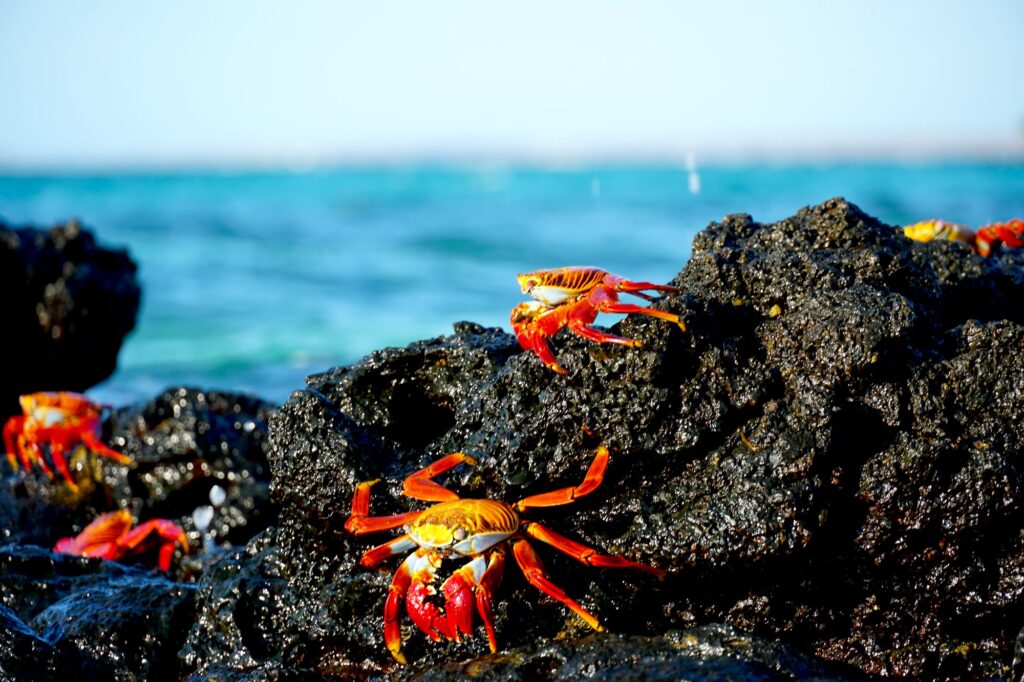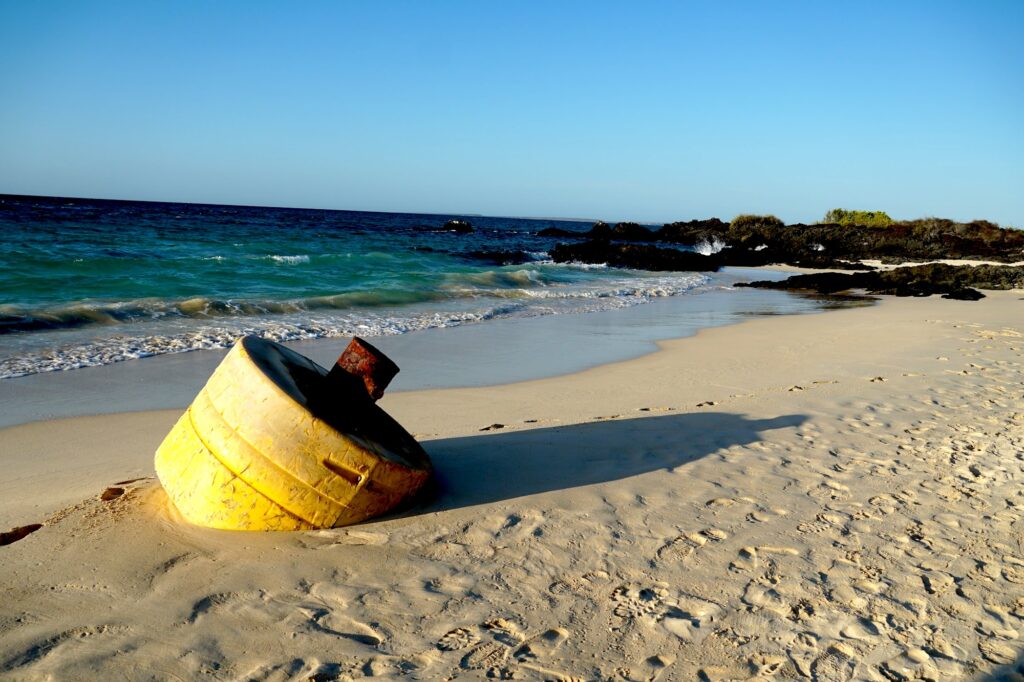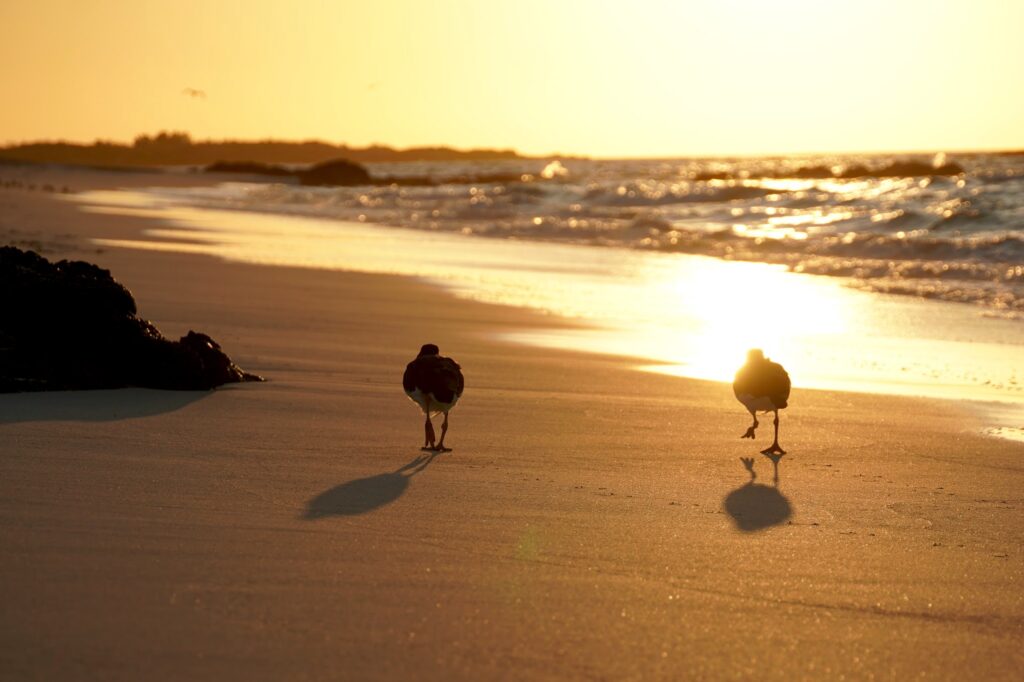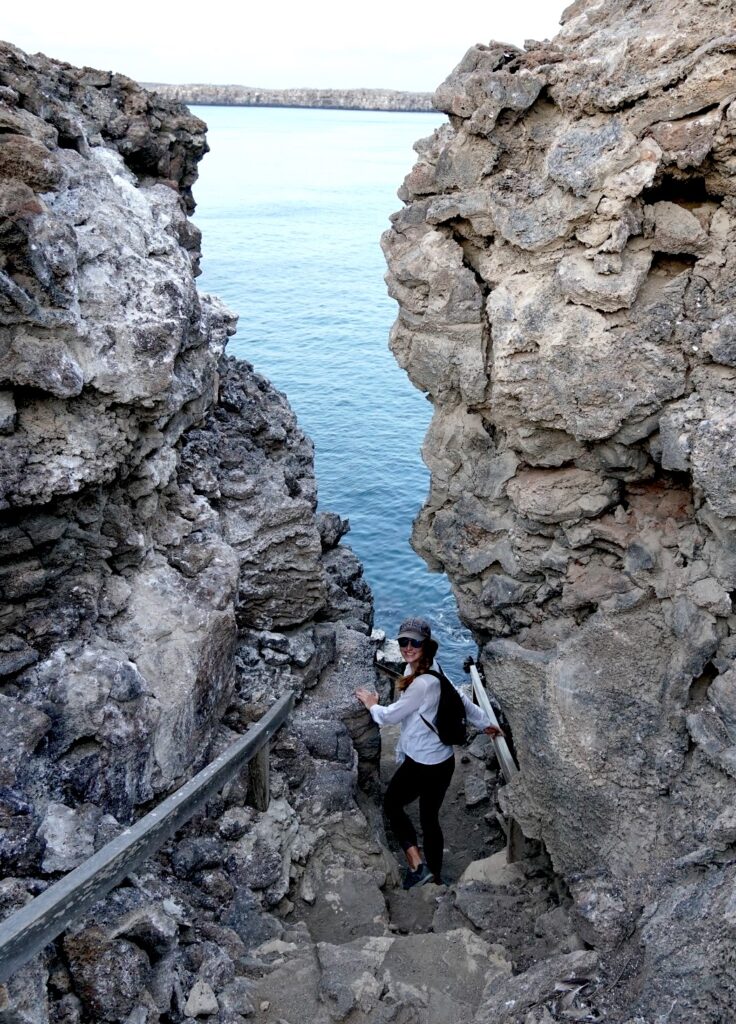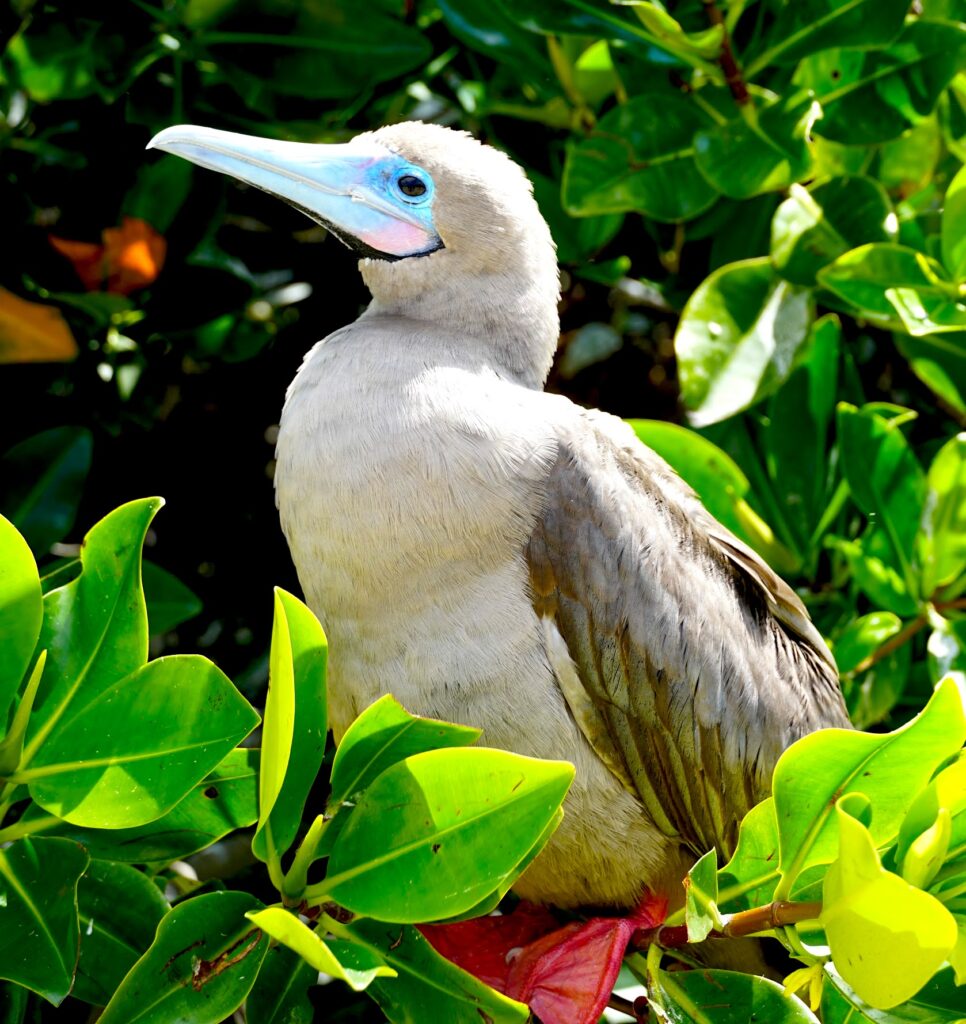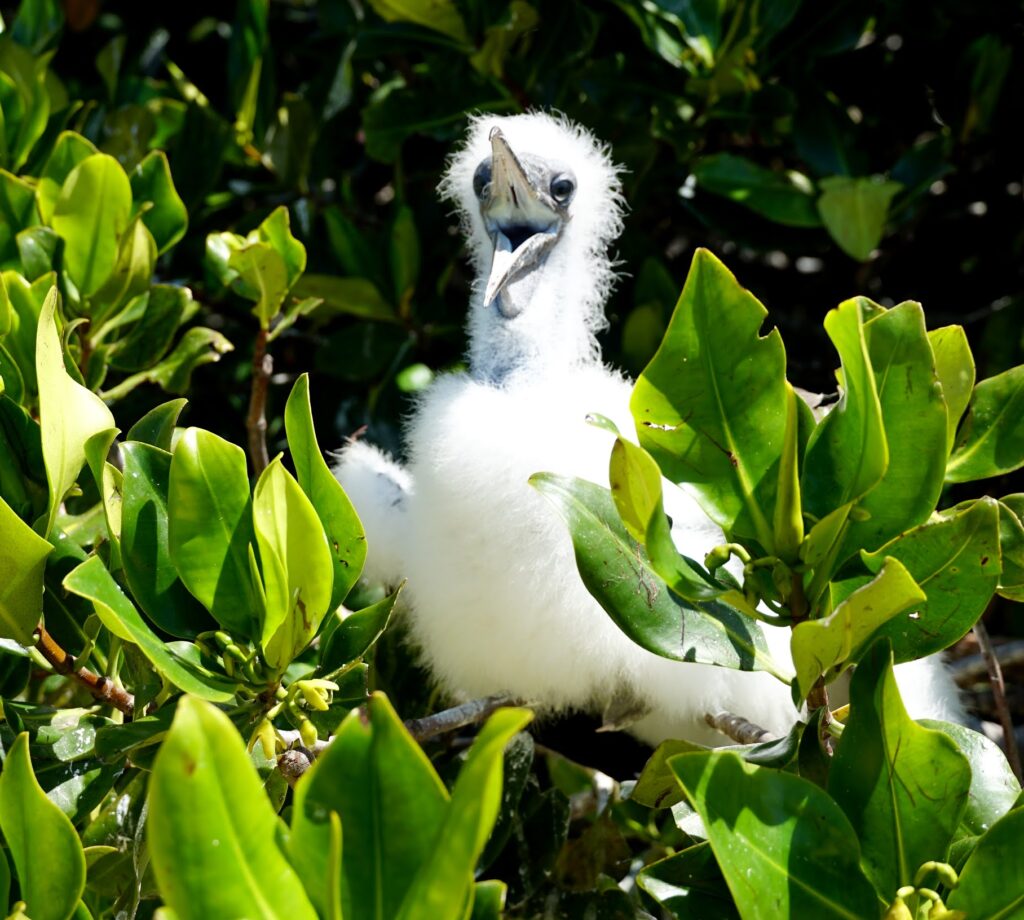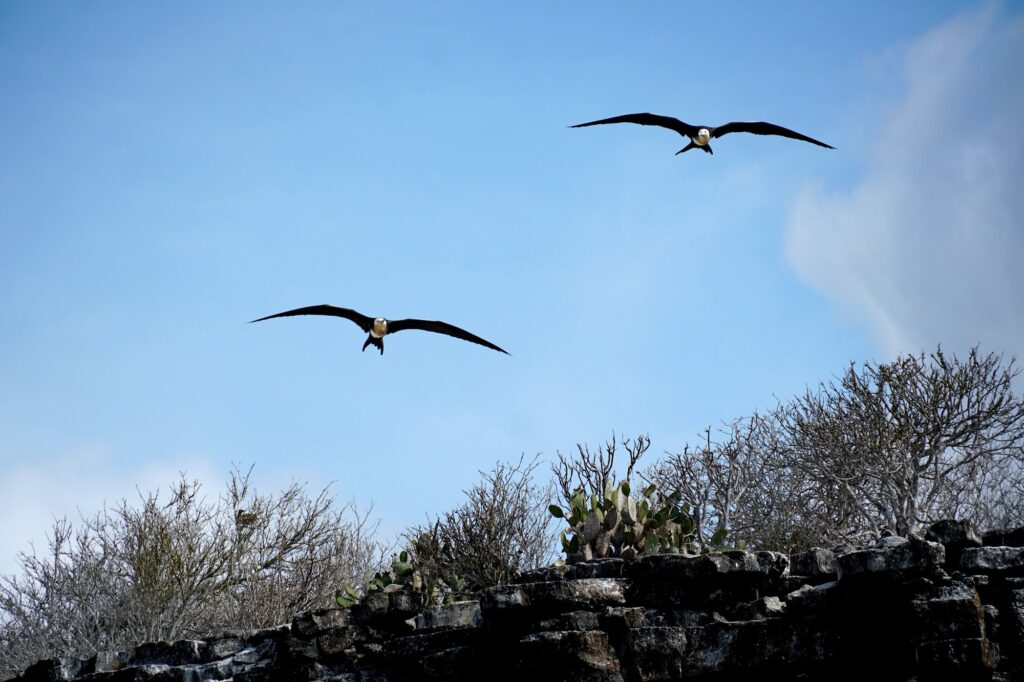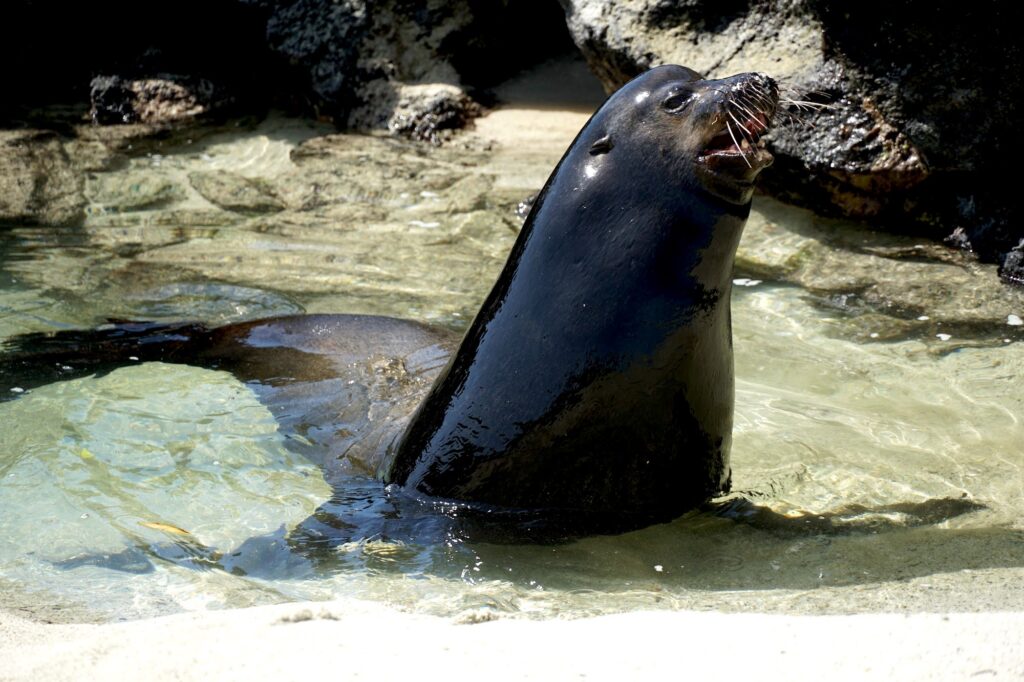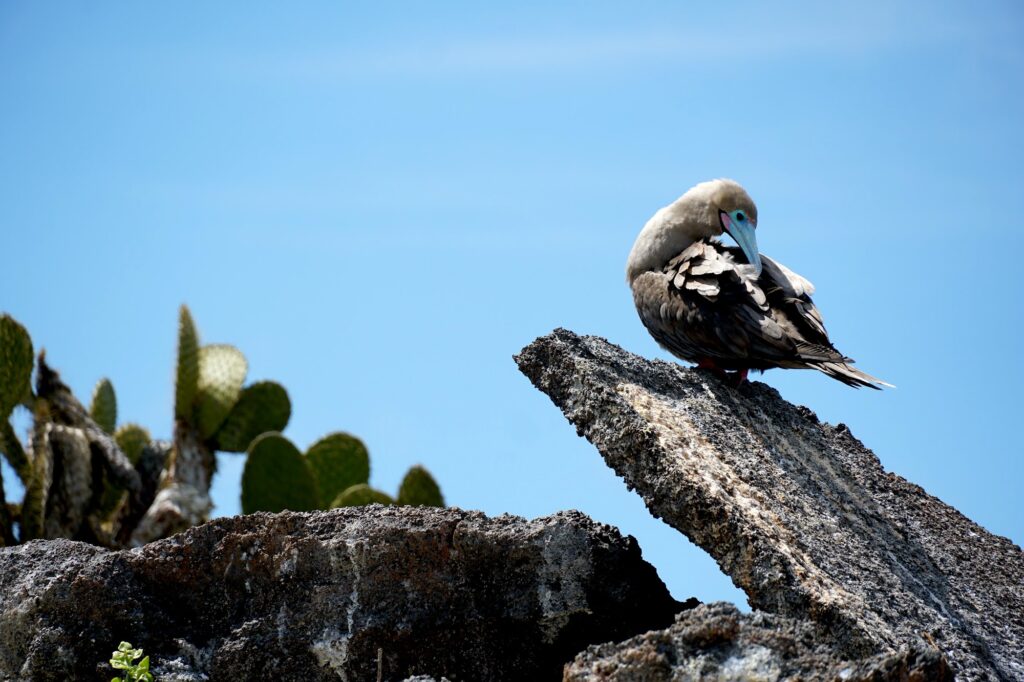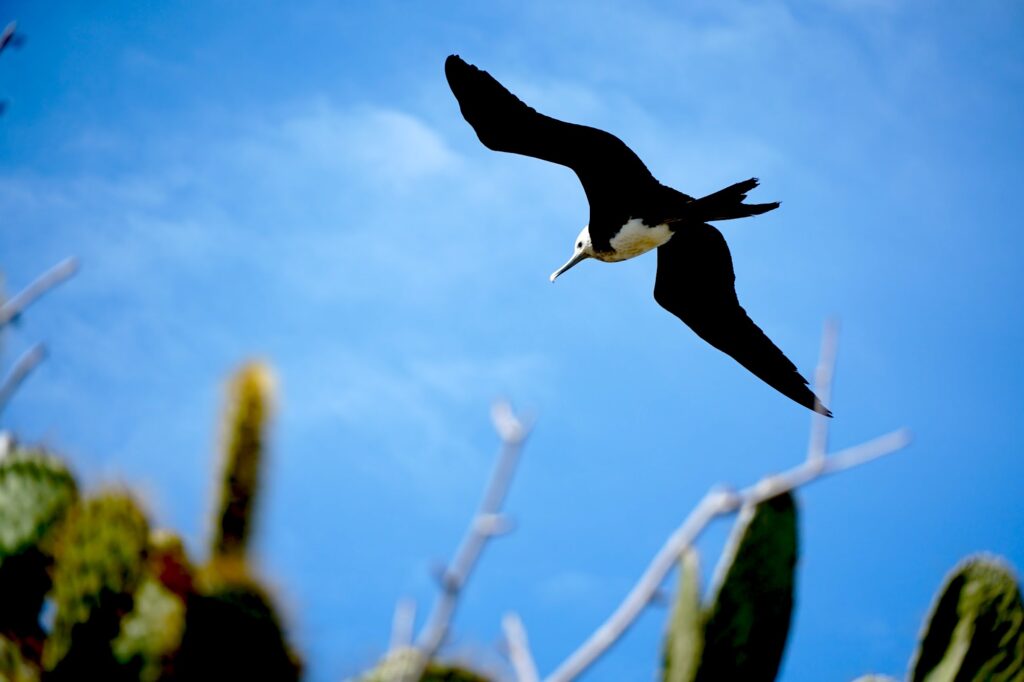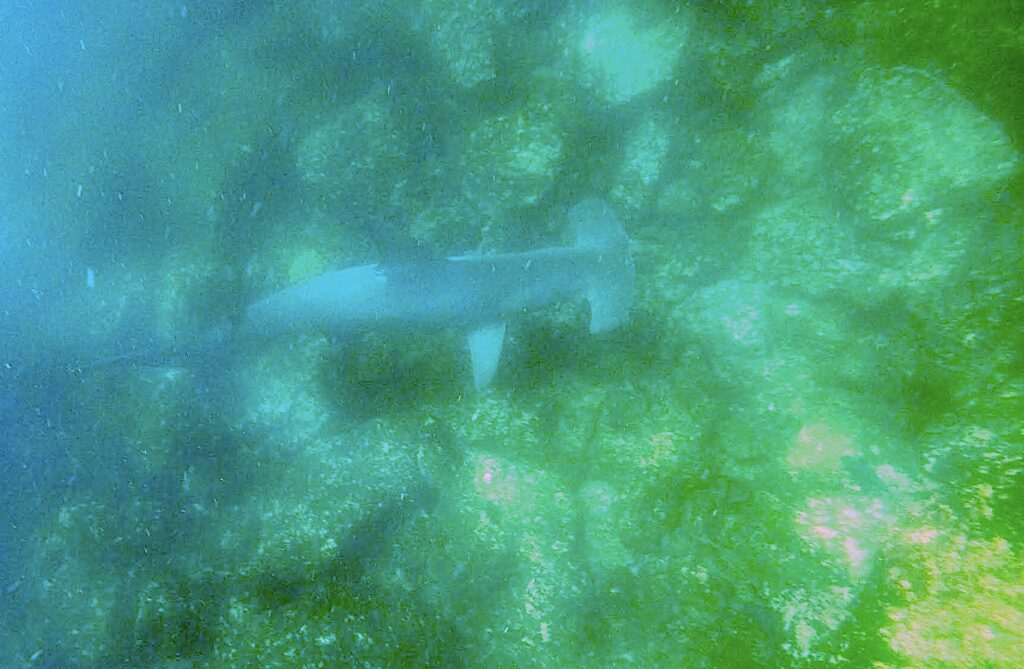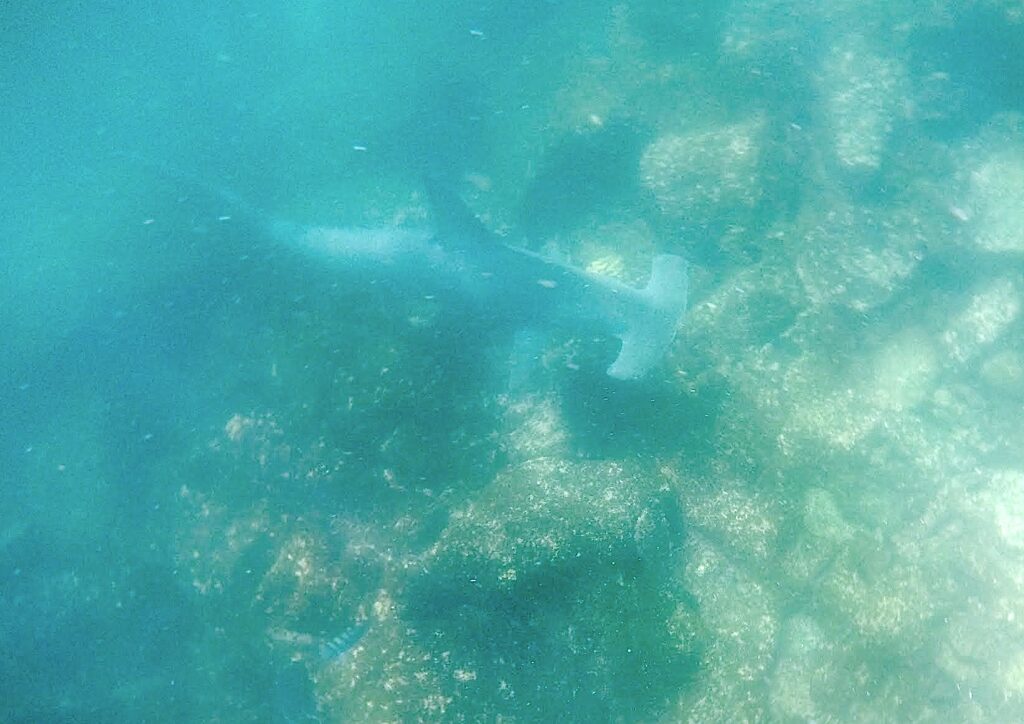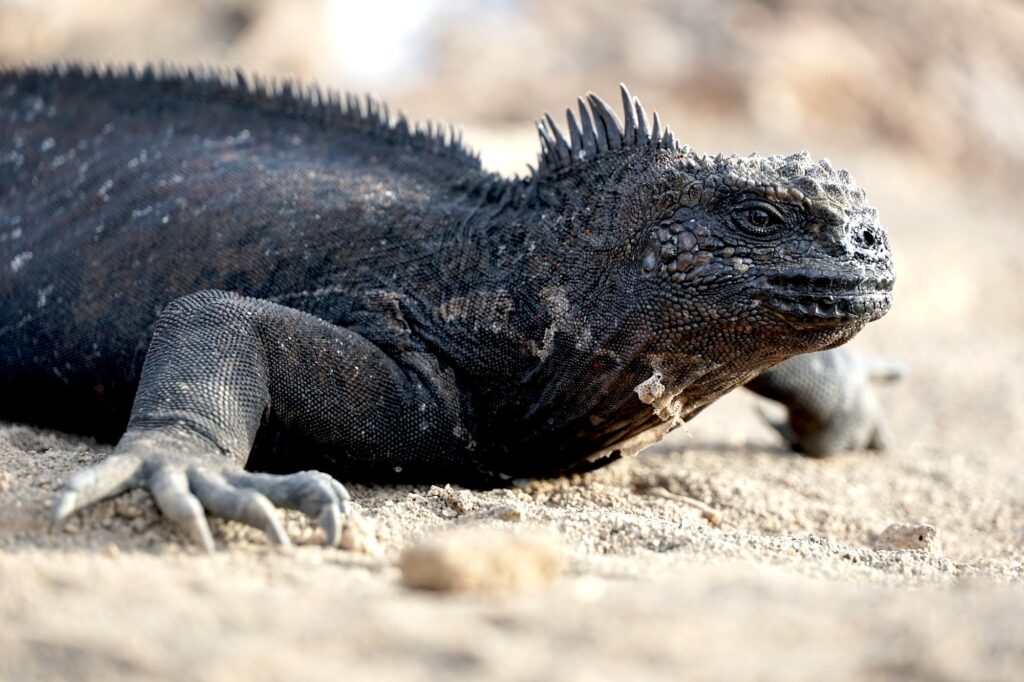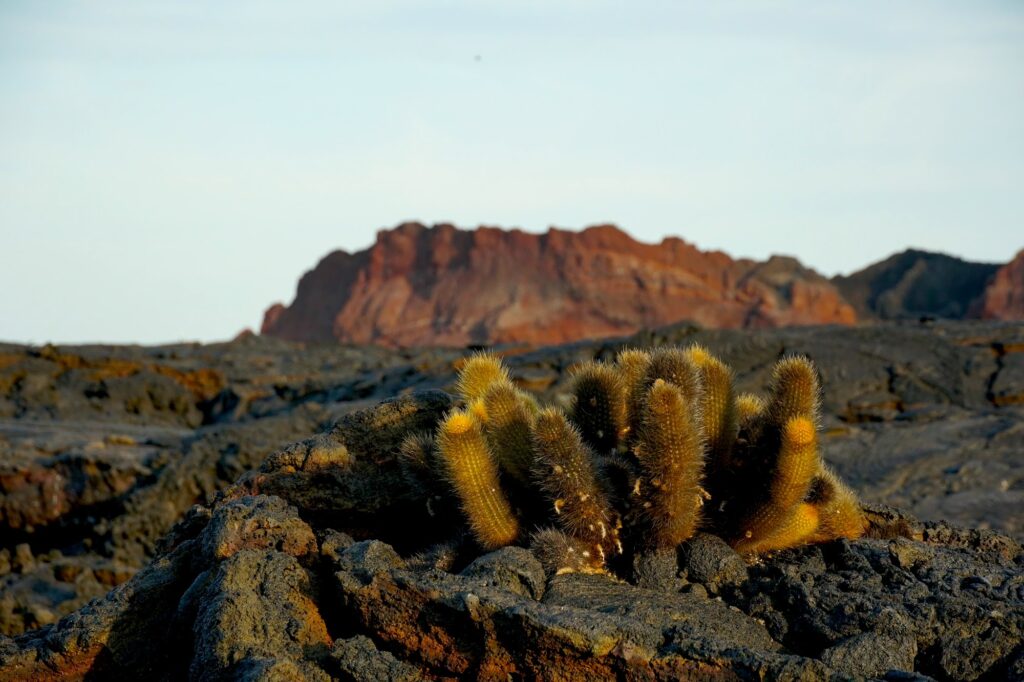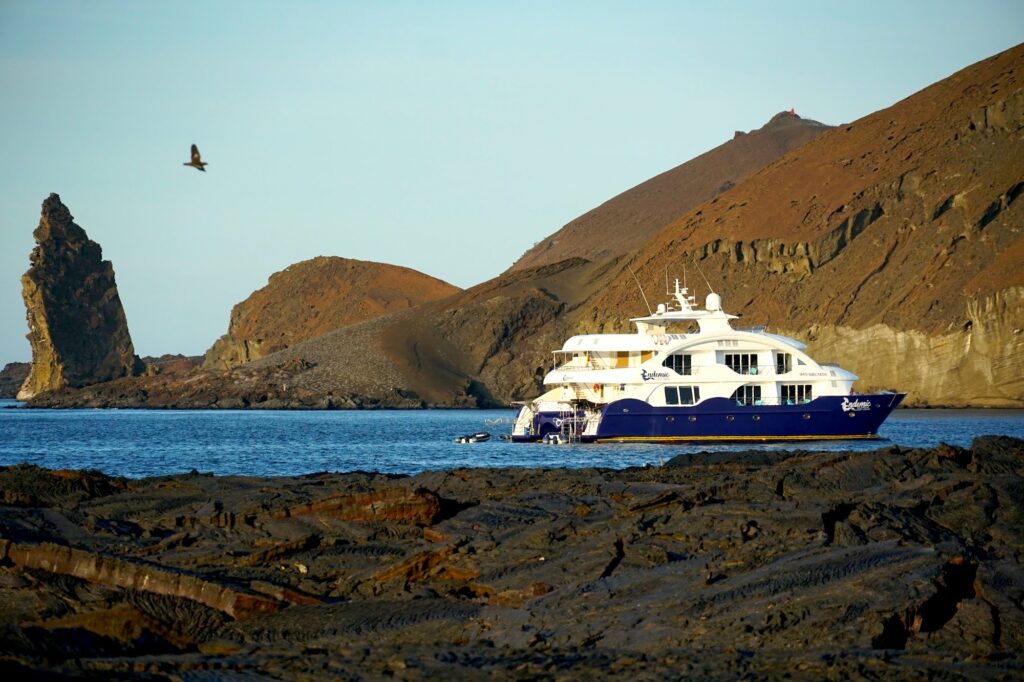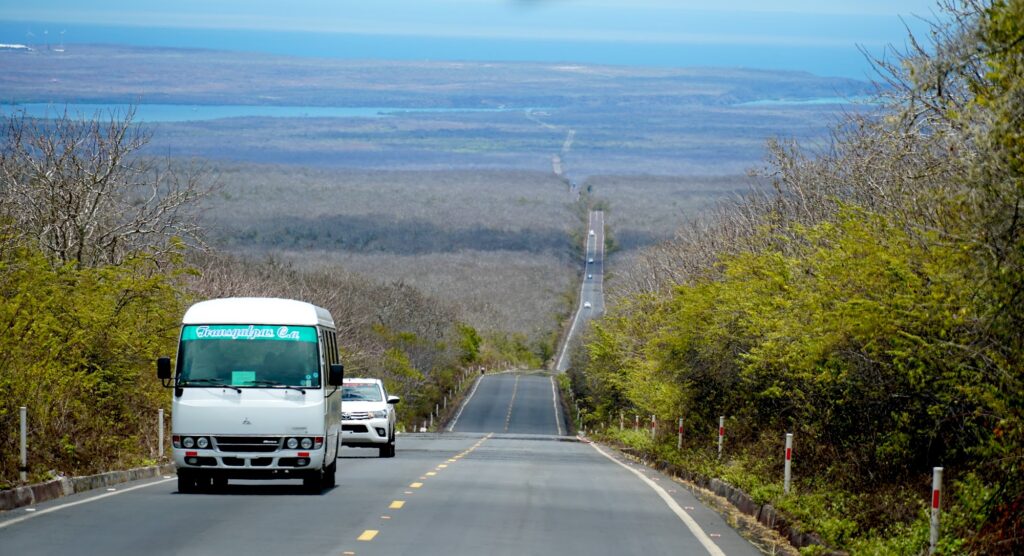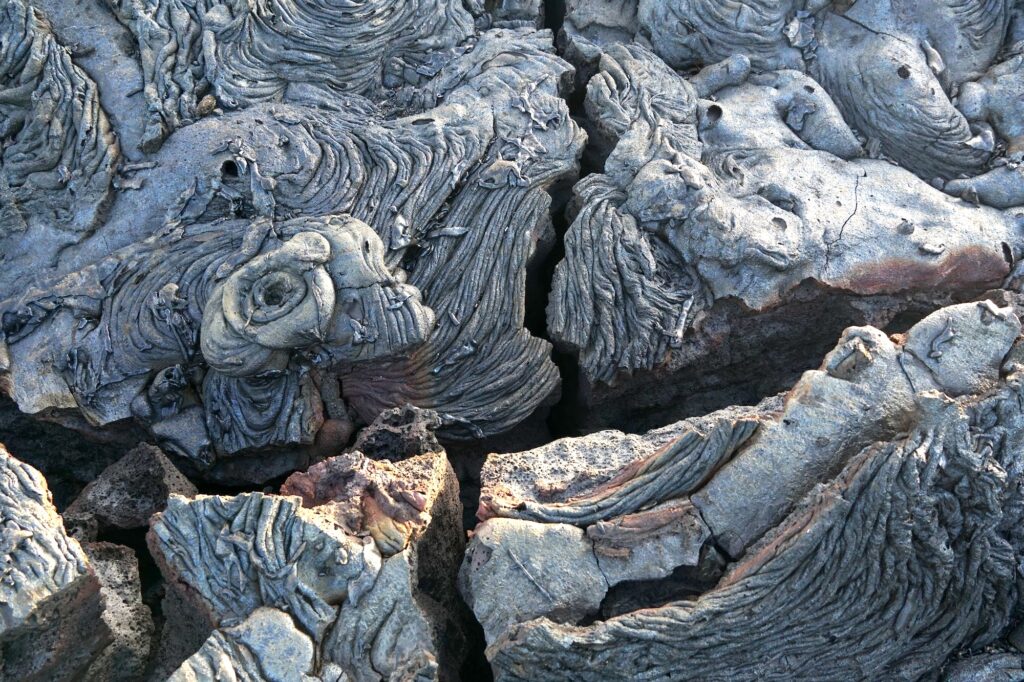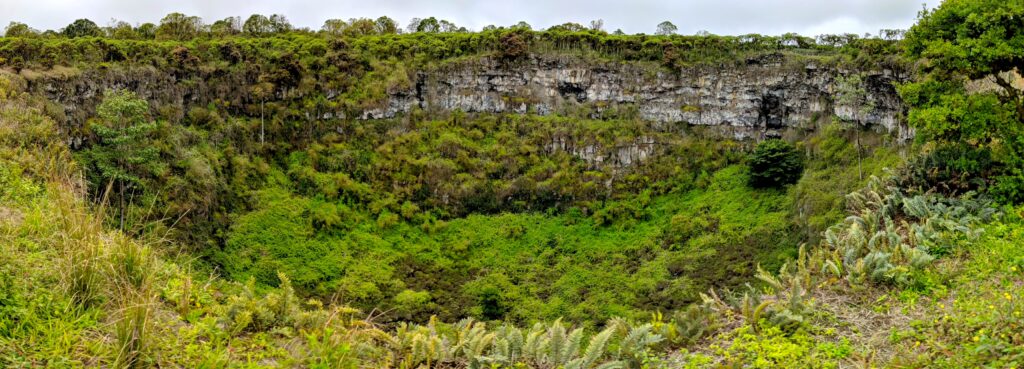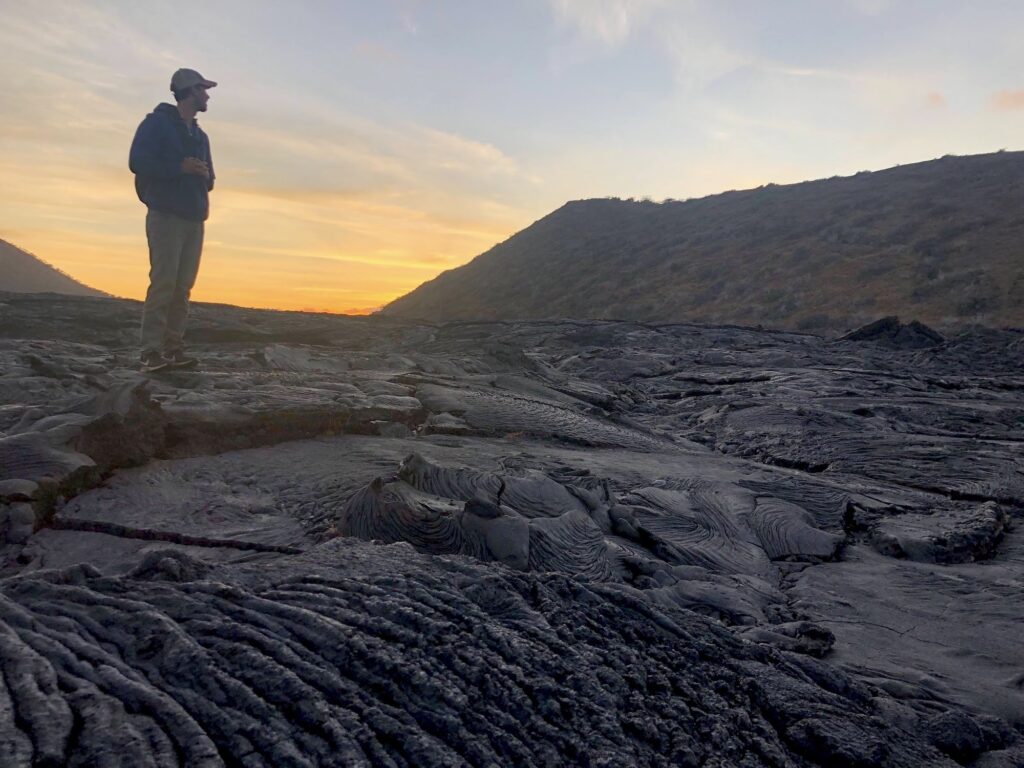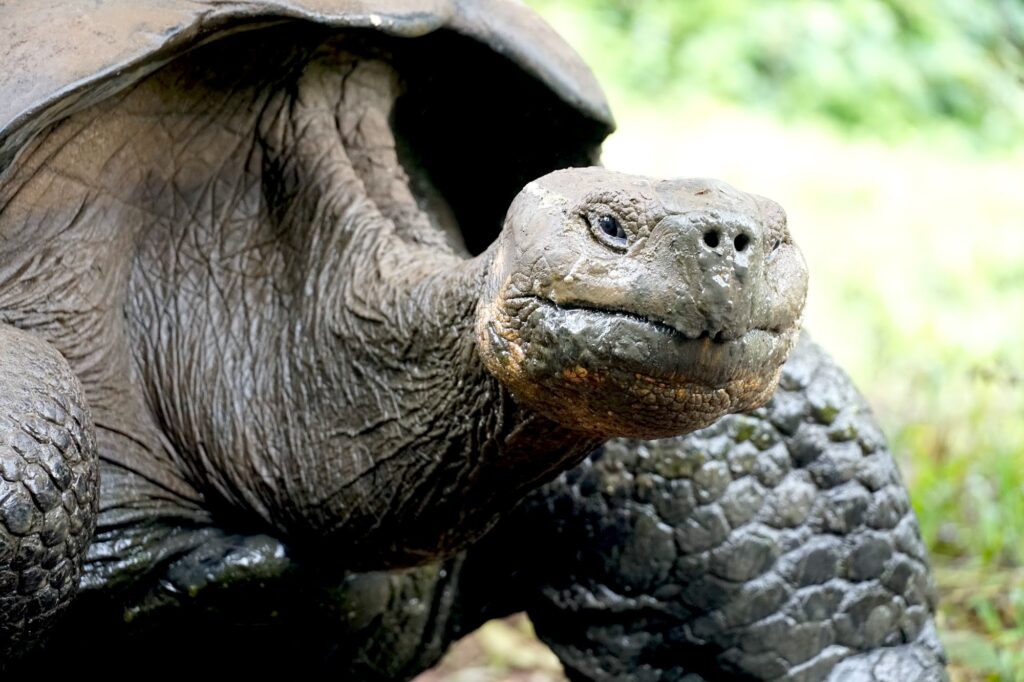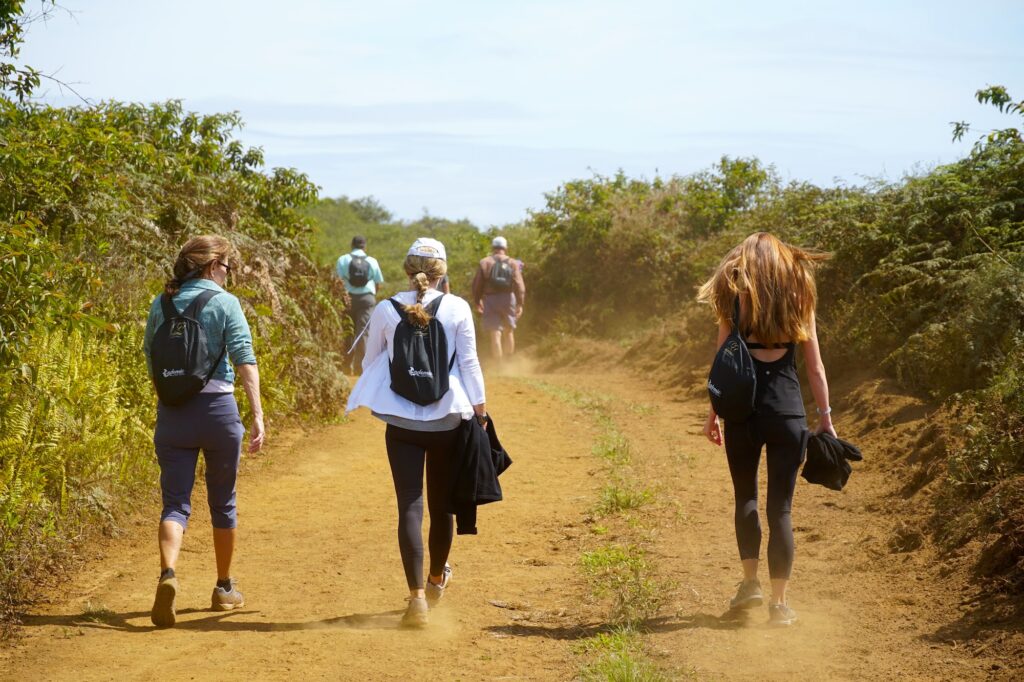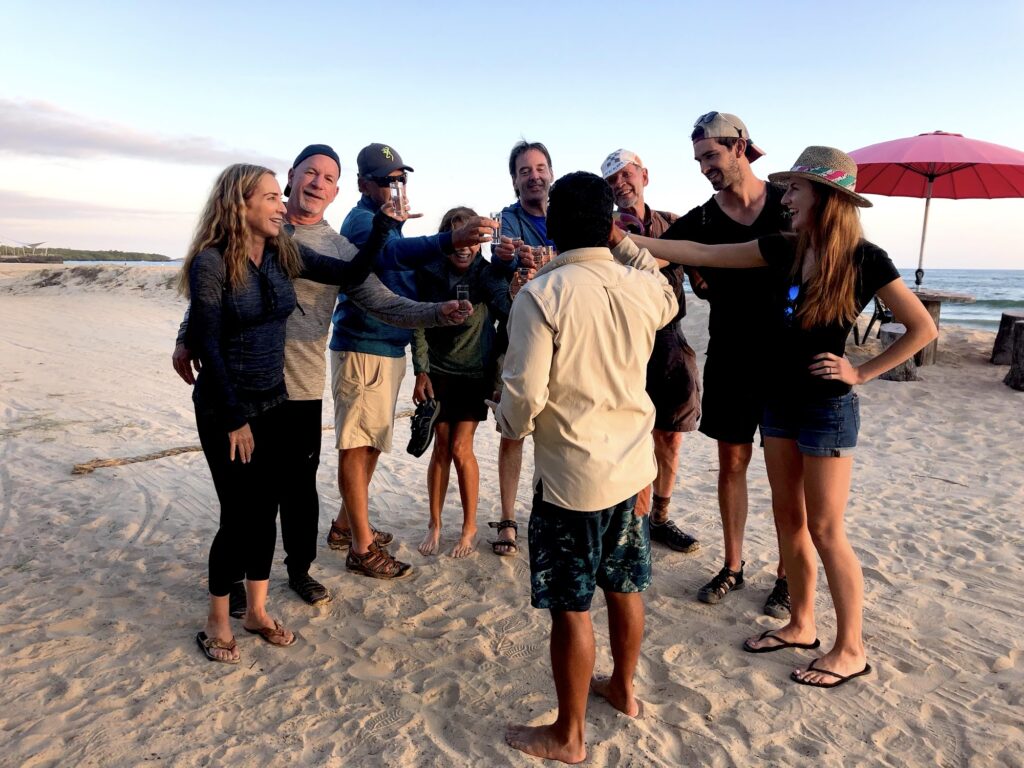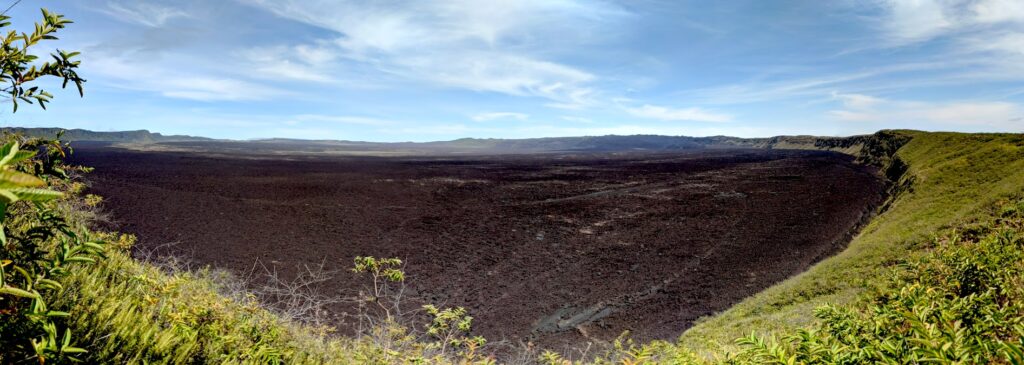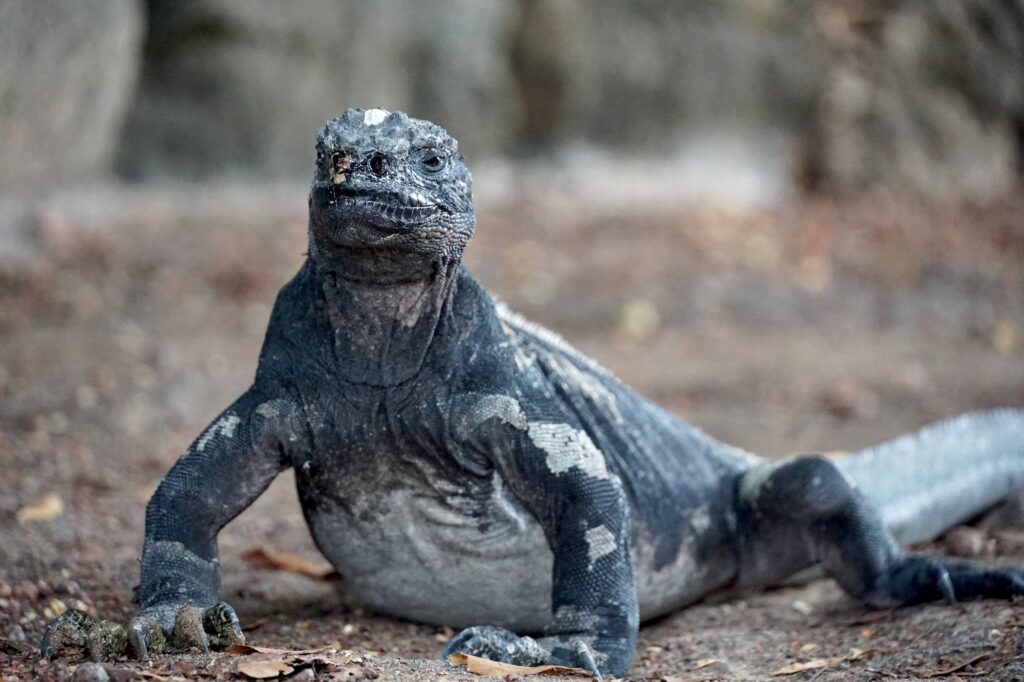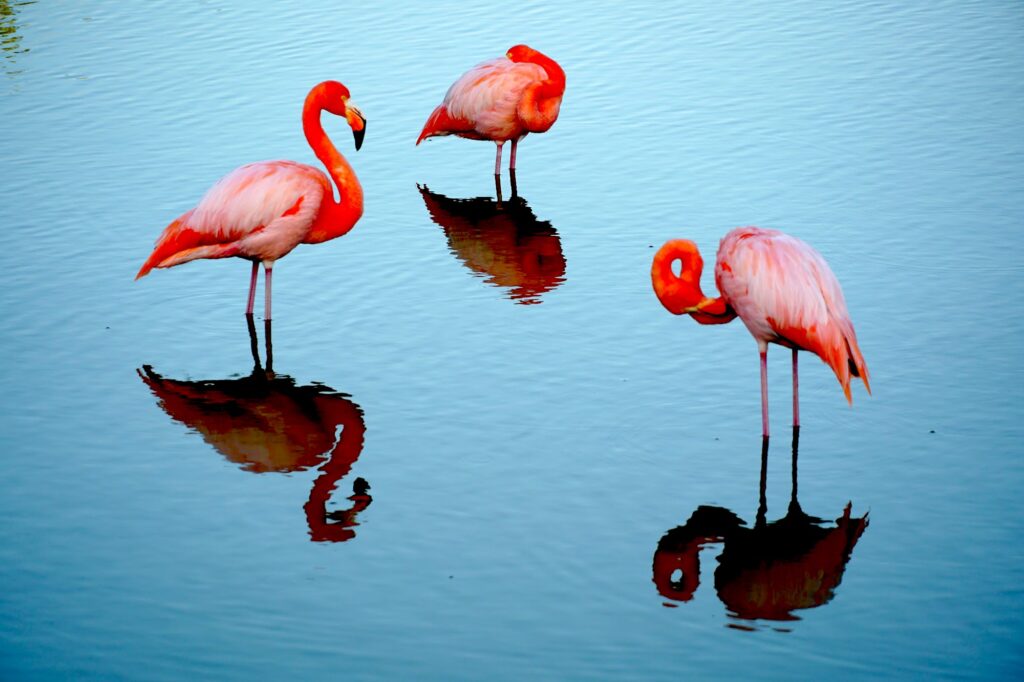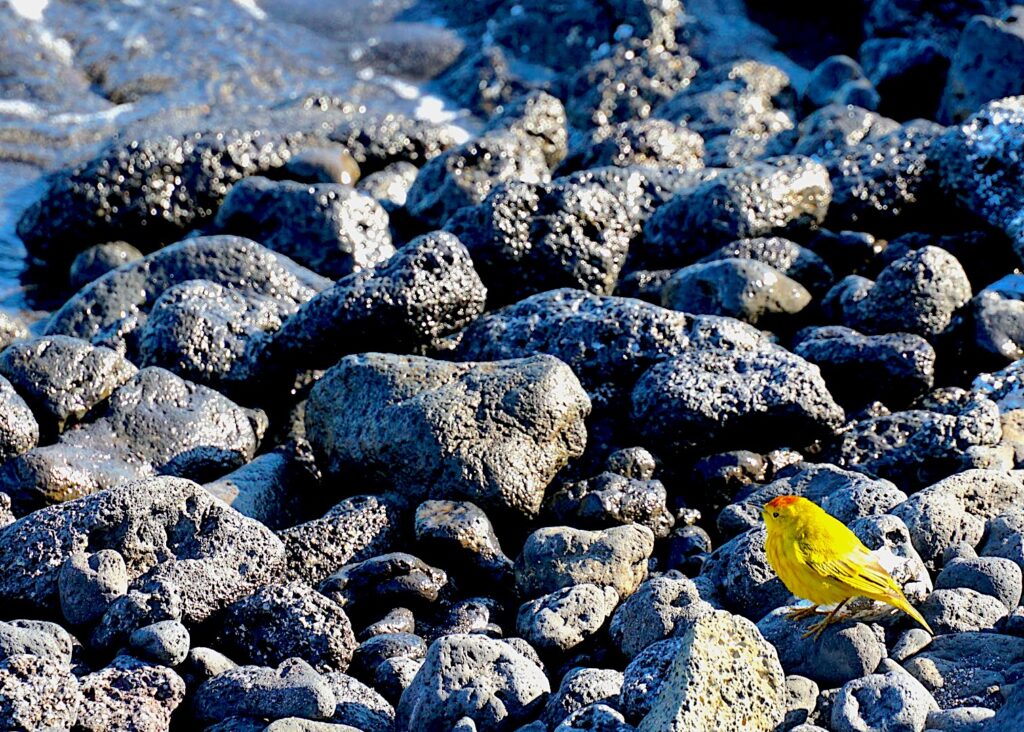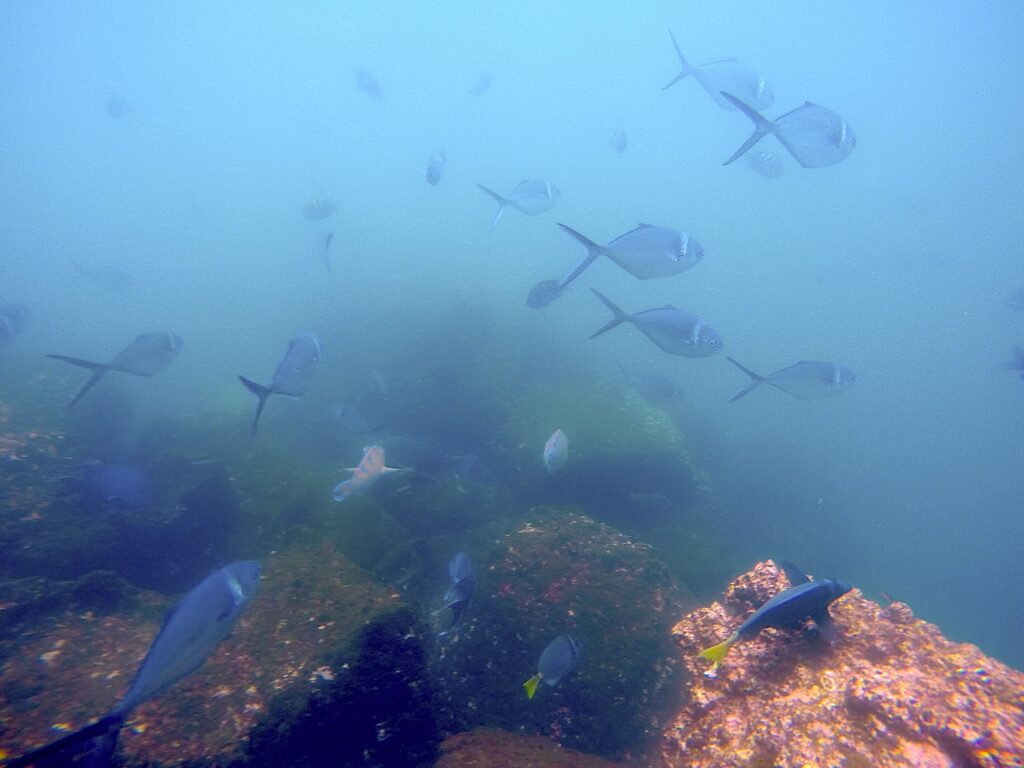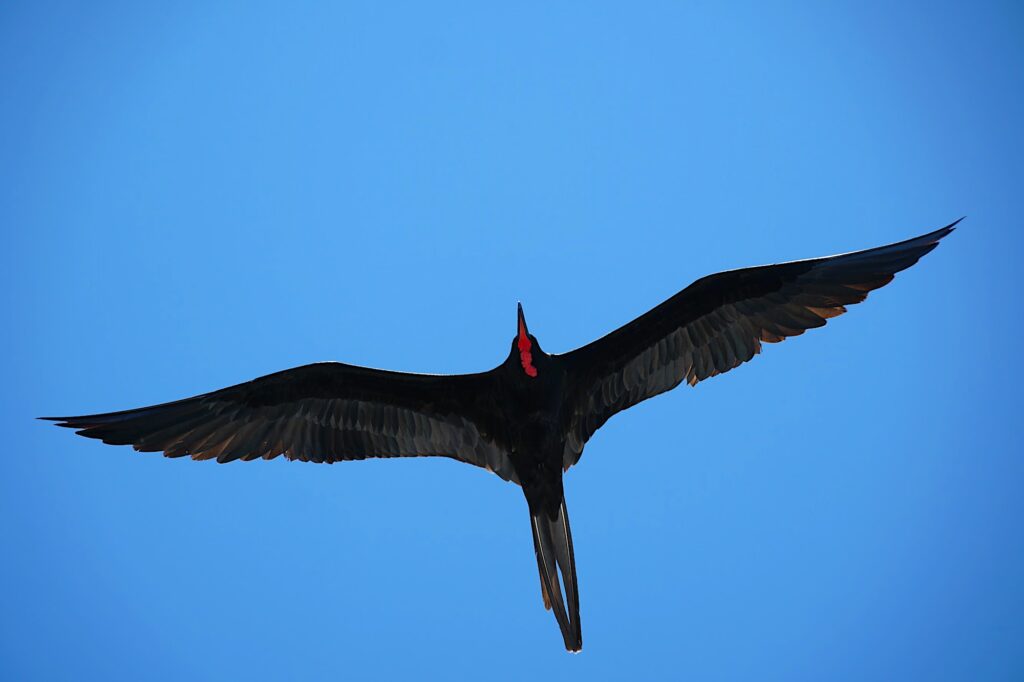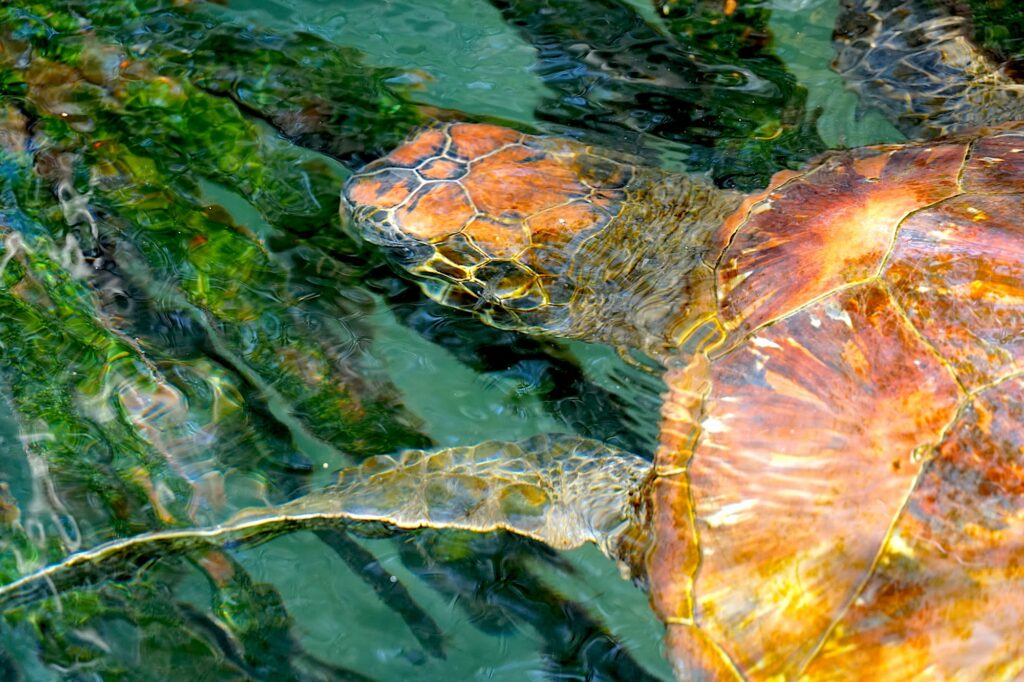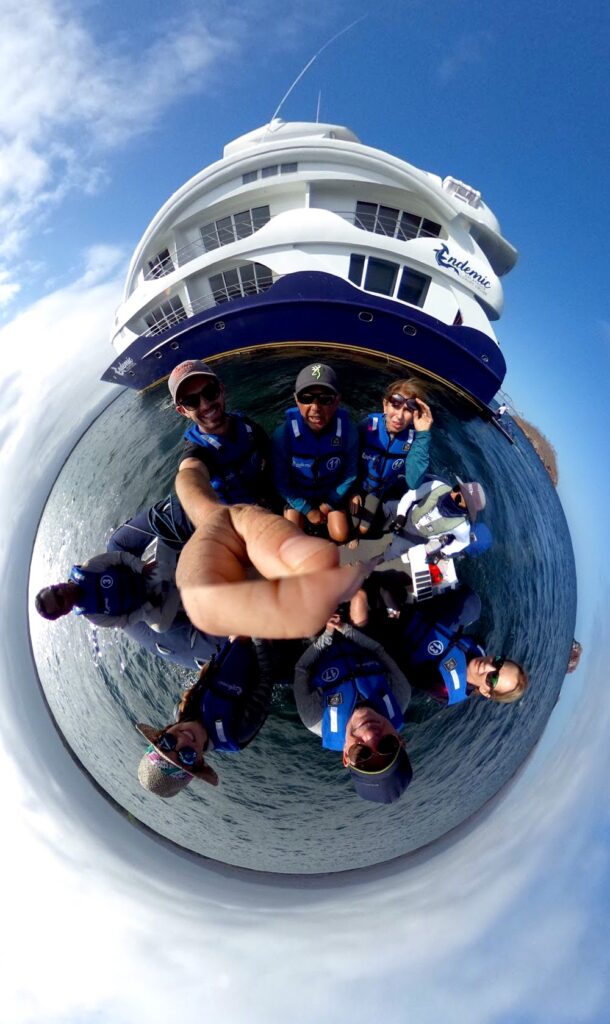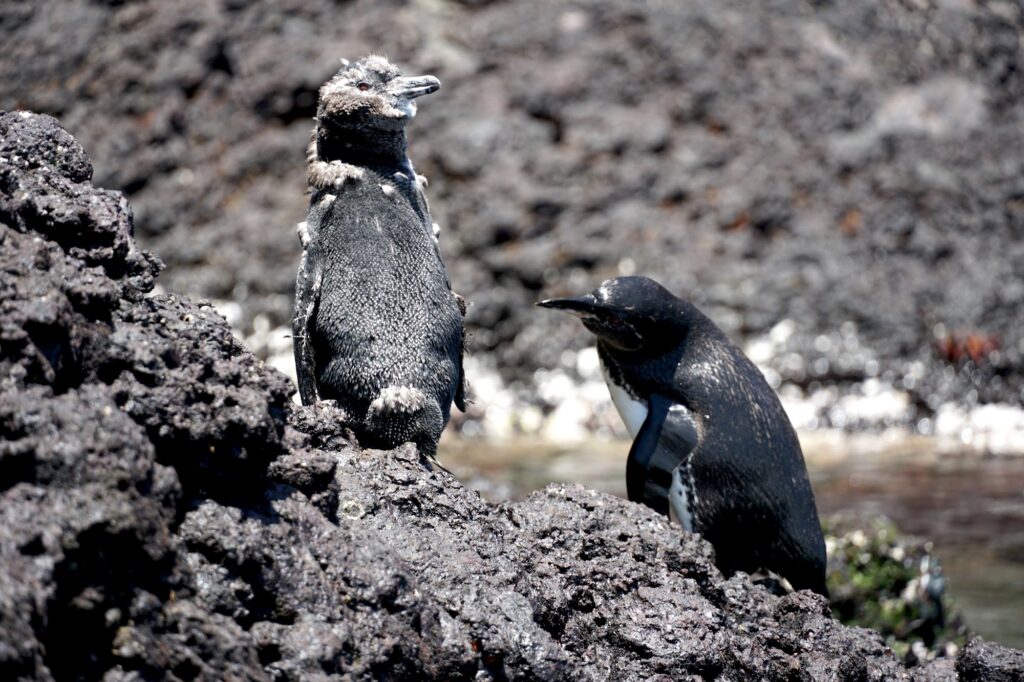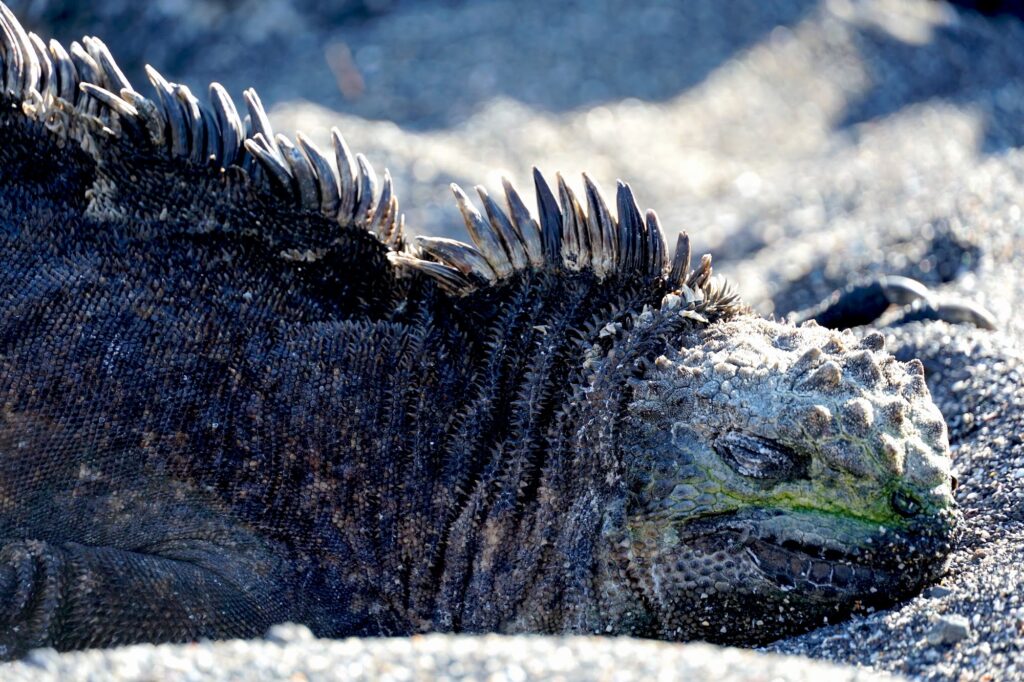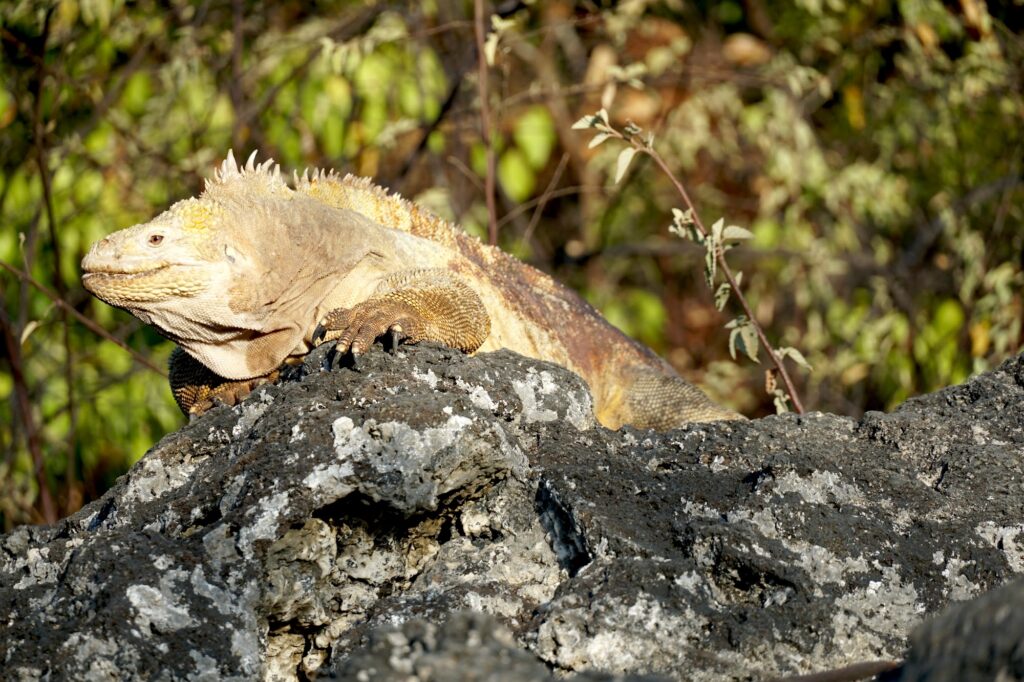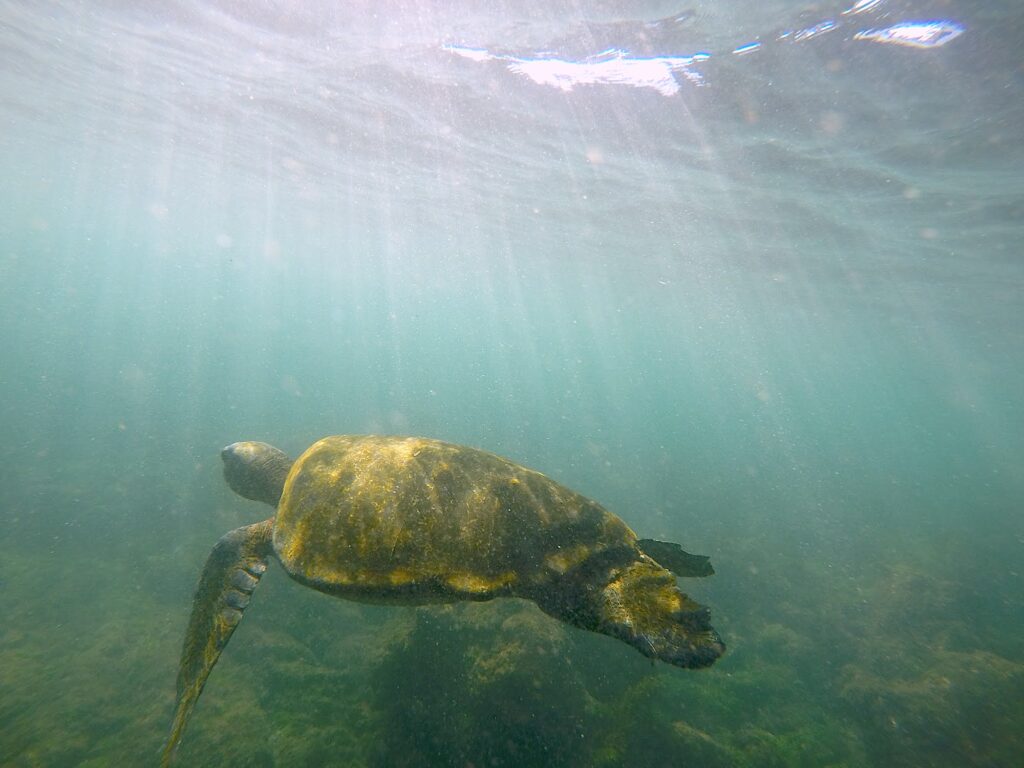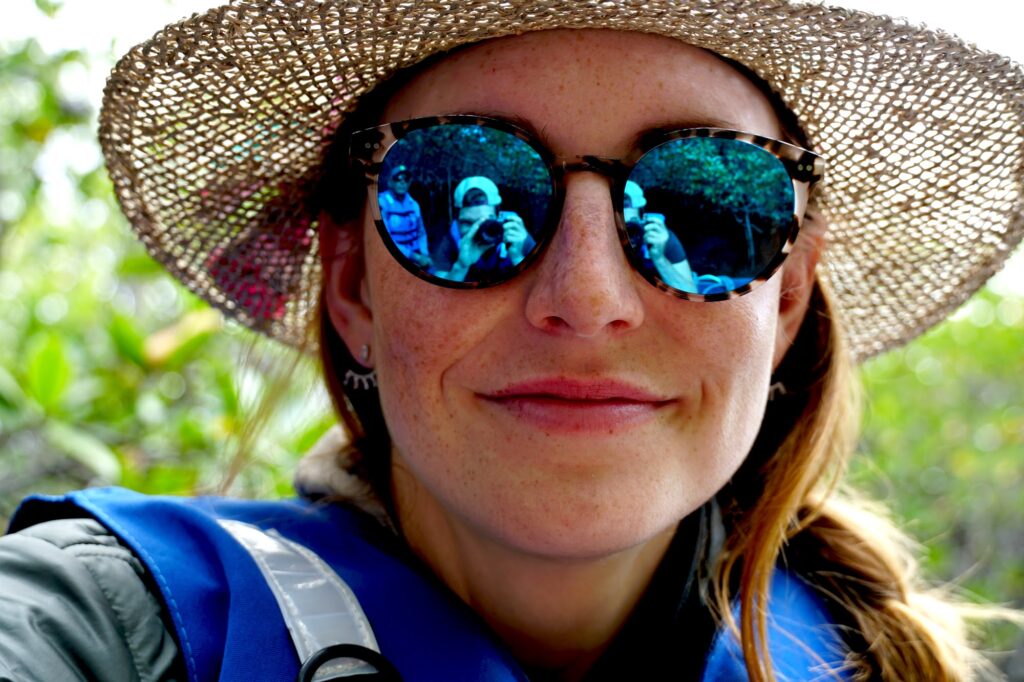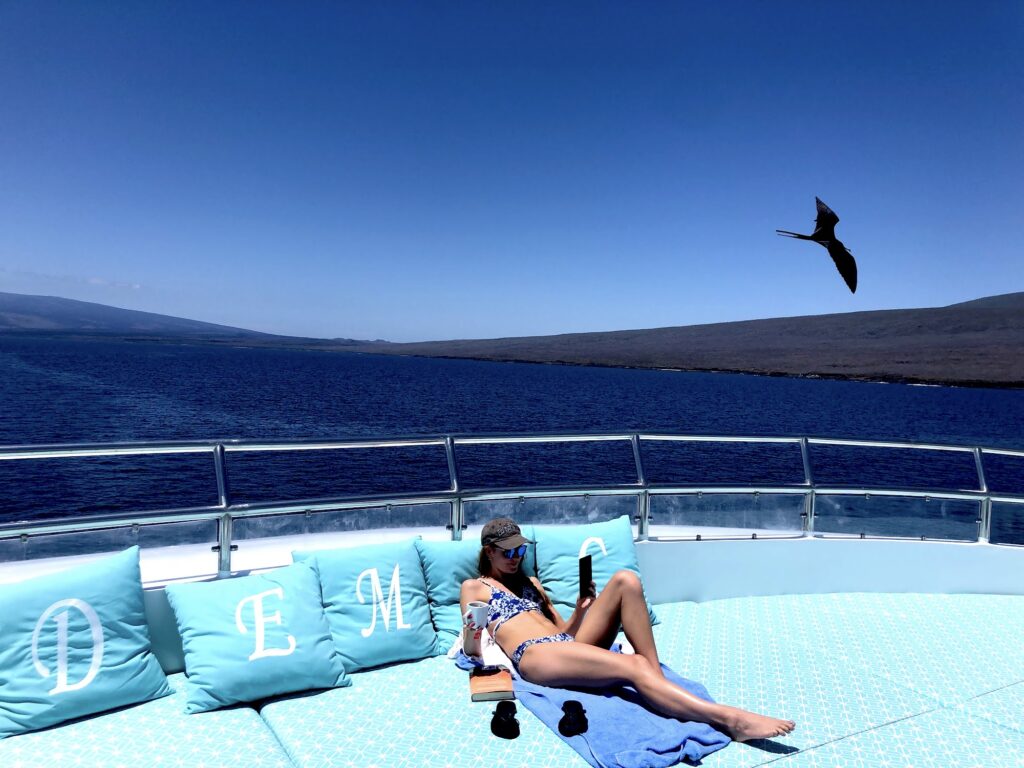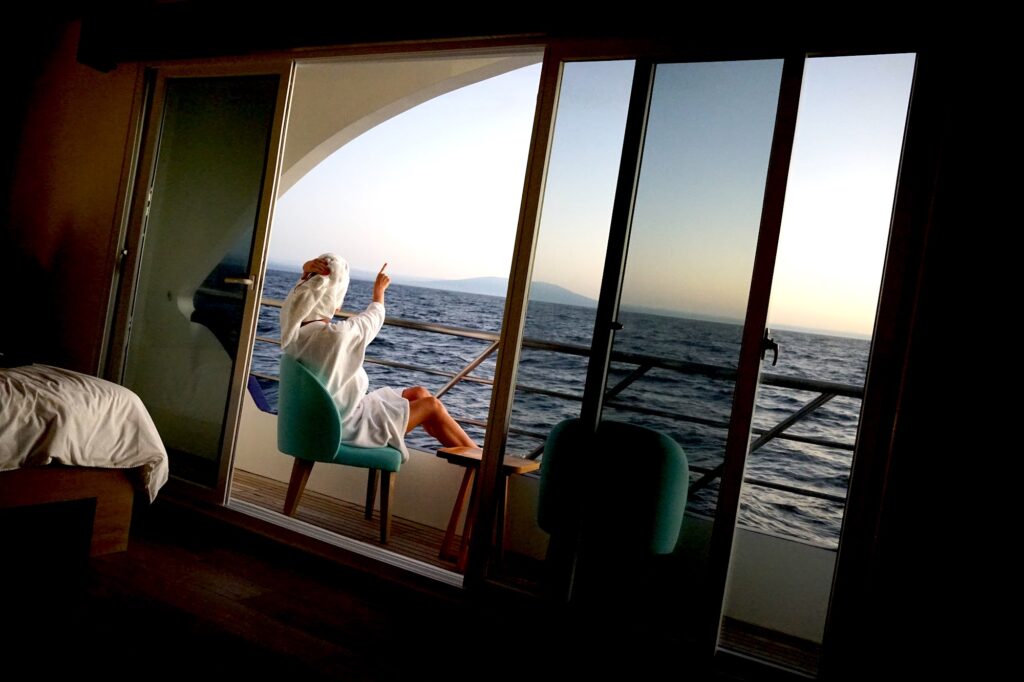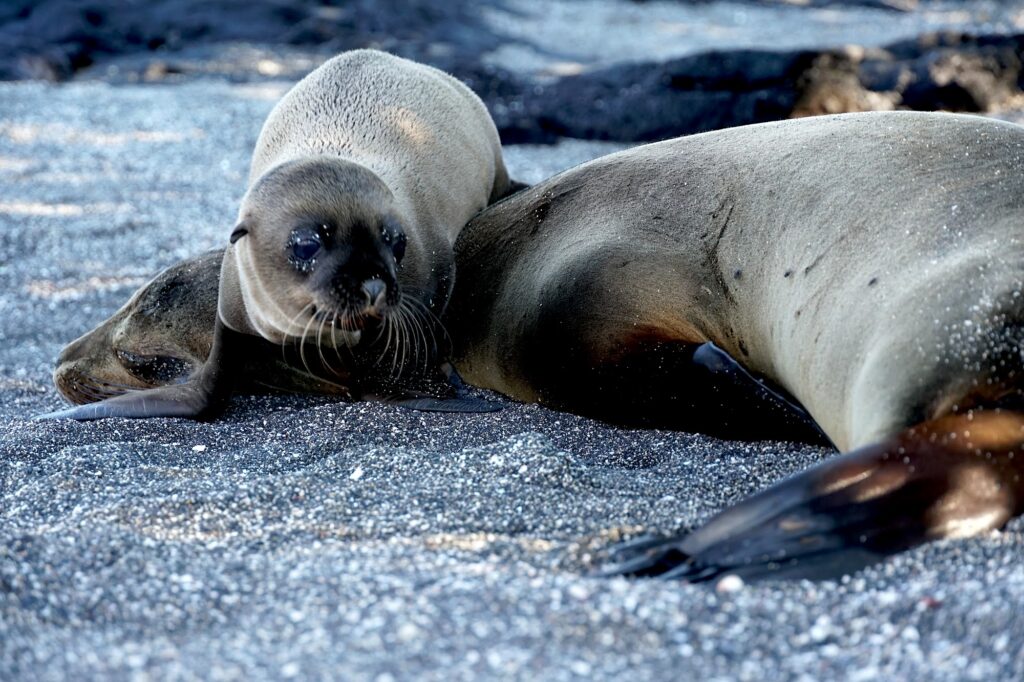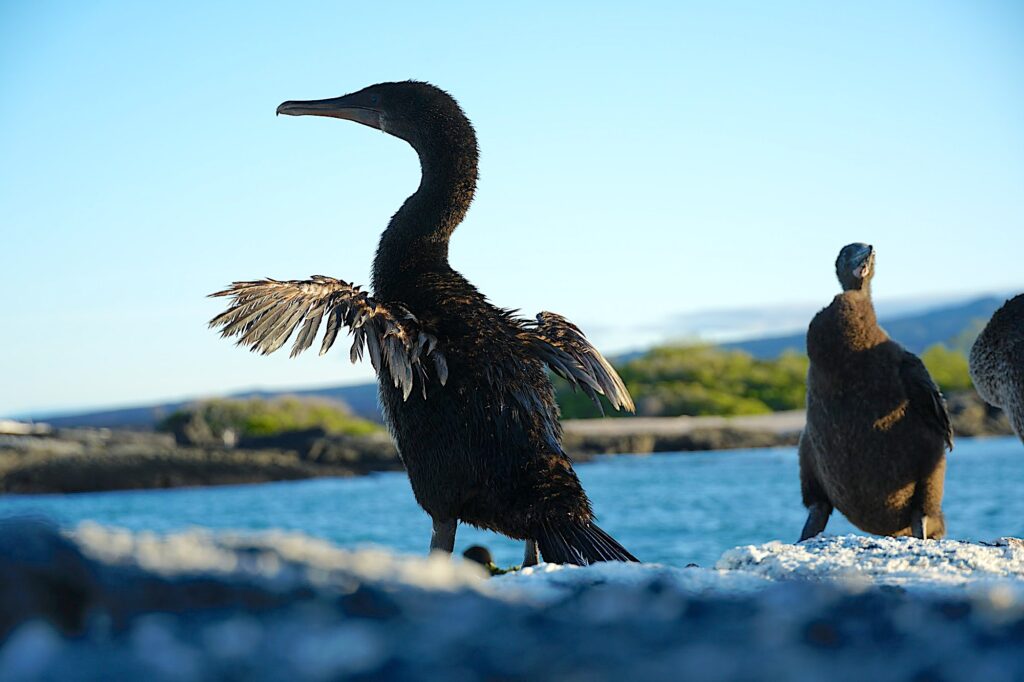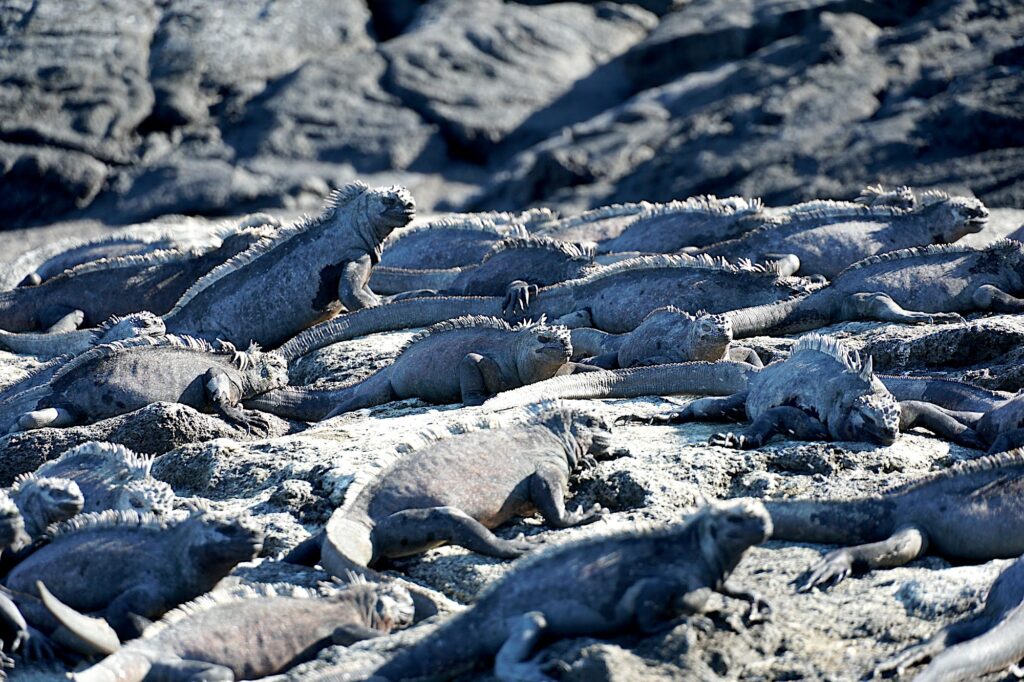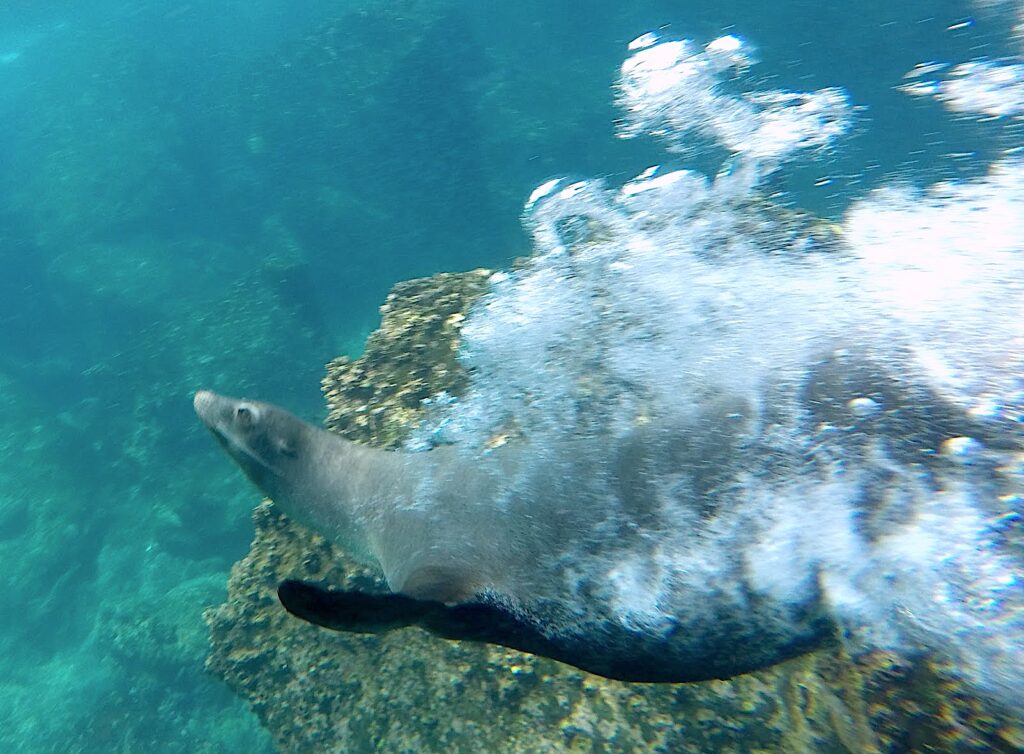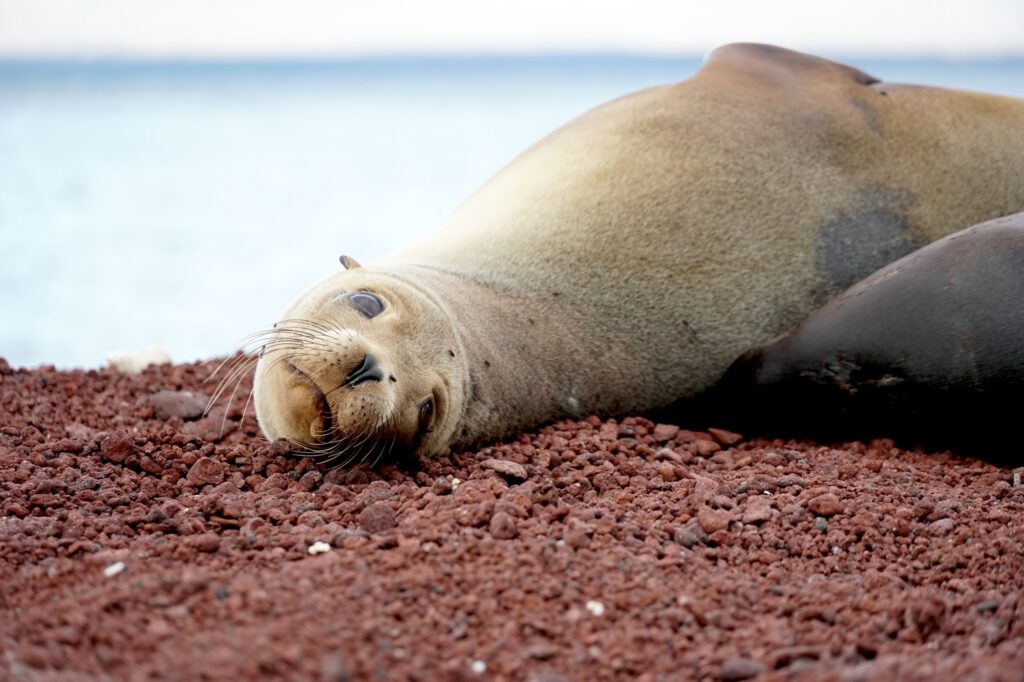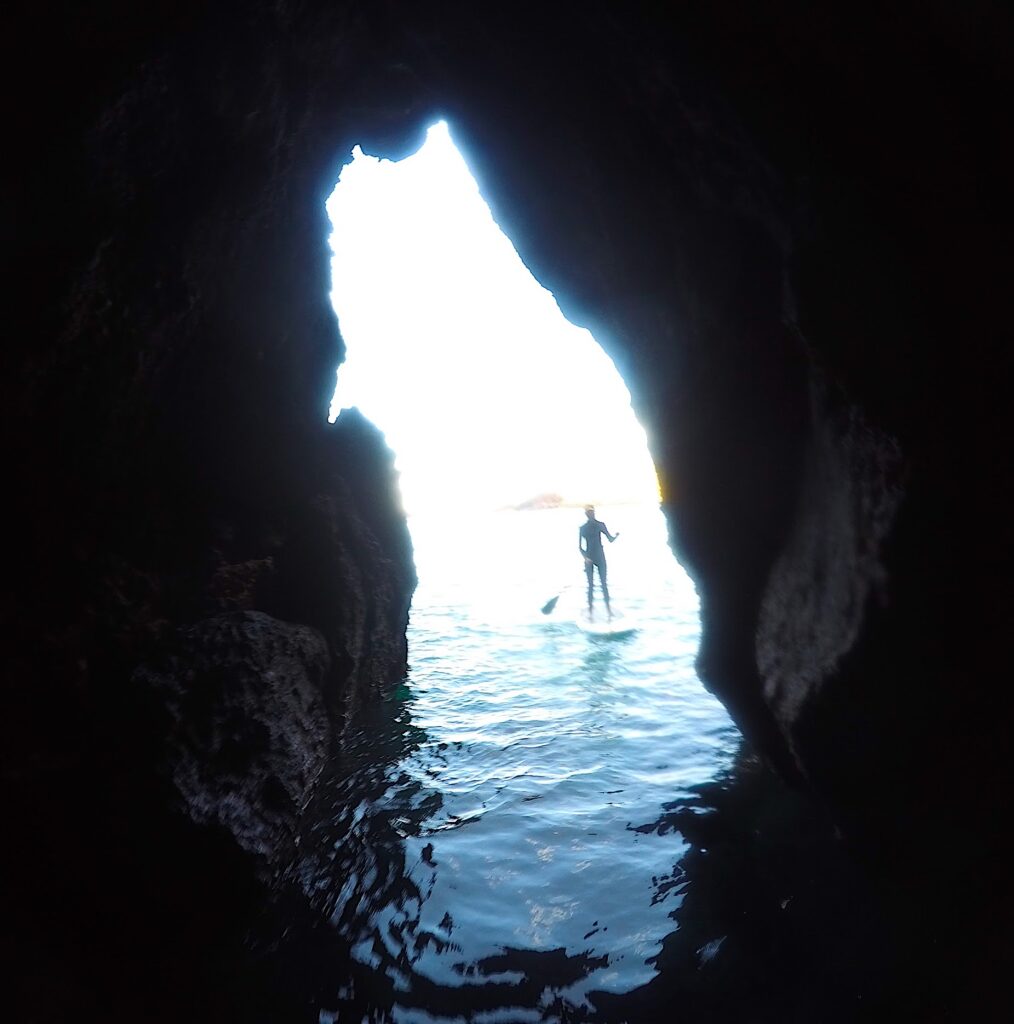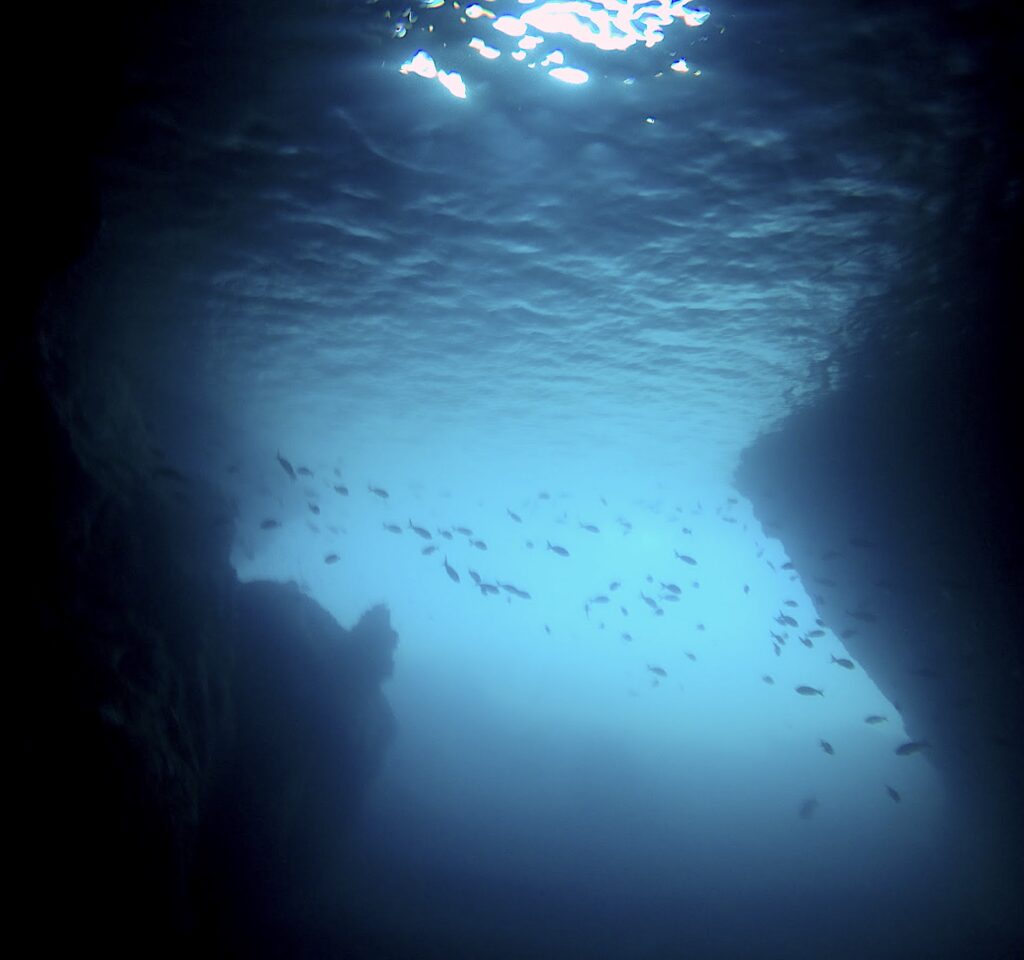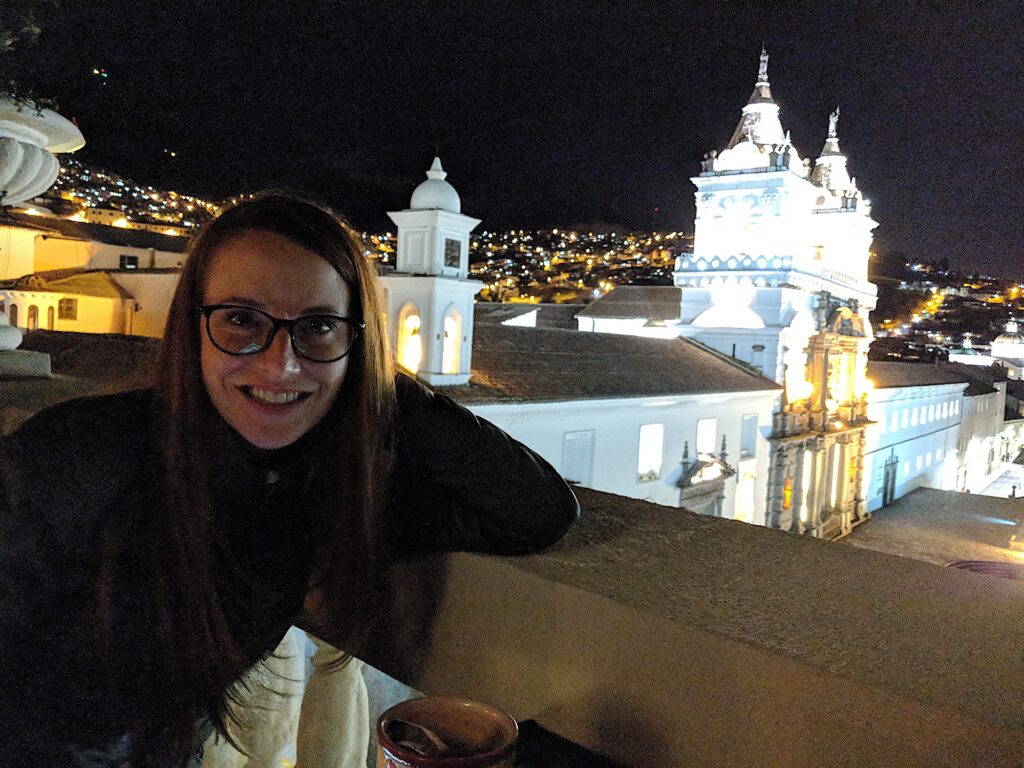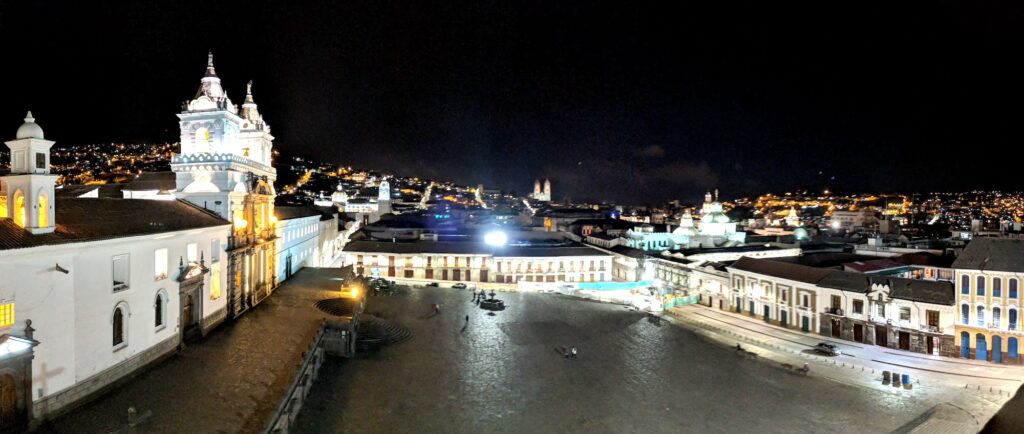Planning a honeymoon is like arriving at a Vegas buffet after a 100-mile bike ride. You are surrounded by available delicacies but just want to get some spaghetti in your belly fast. The stress of planning a wedding and arranging post-wedding logistics makes eating that spaghetti, e.g. booking a beachfront hotel and melting into the sand for two weeks, awfully tempting, but Tori and I were going to hold out for the crudités and escargots.
After a month of global rumination, visiting the Galapagos Islands percolated to the top of our list. Since our Tahiti trip, I’d been on a bit of a South Pacific bent and was totally inspired by the Galapagos episode of the BBC’s eponymous mini-series. Tori was excited to see the endemic animals and travel around the archipelago in a luxury yacht. Bingo.
We originally planned on visiting the Galapagos as part of a broader South American tour, but as soon as the Ecuador Lonely Planet guide appeared on my nightstand, I realized how much was packed into this little country. Ecuador is about the size of my home state of Colorado, but boasts beachy party towns, big cities, rainforests, 20,000-foot peaks, Incan ruins, and colonial history in addition to the famous Galapagos Islands. We quickly realized that we could spend 3 months much less 3 weeks exploring to even scratch the surface of this little country.
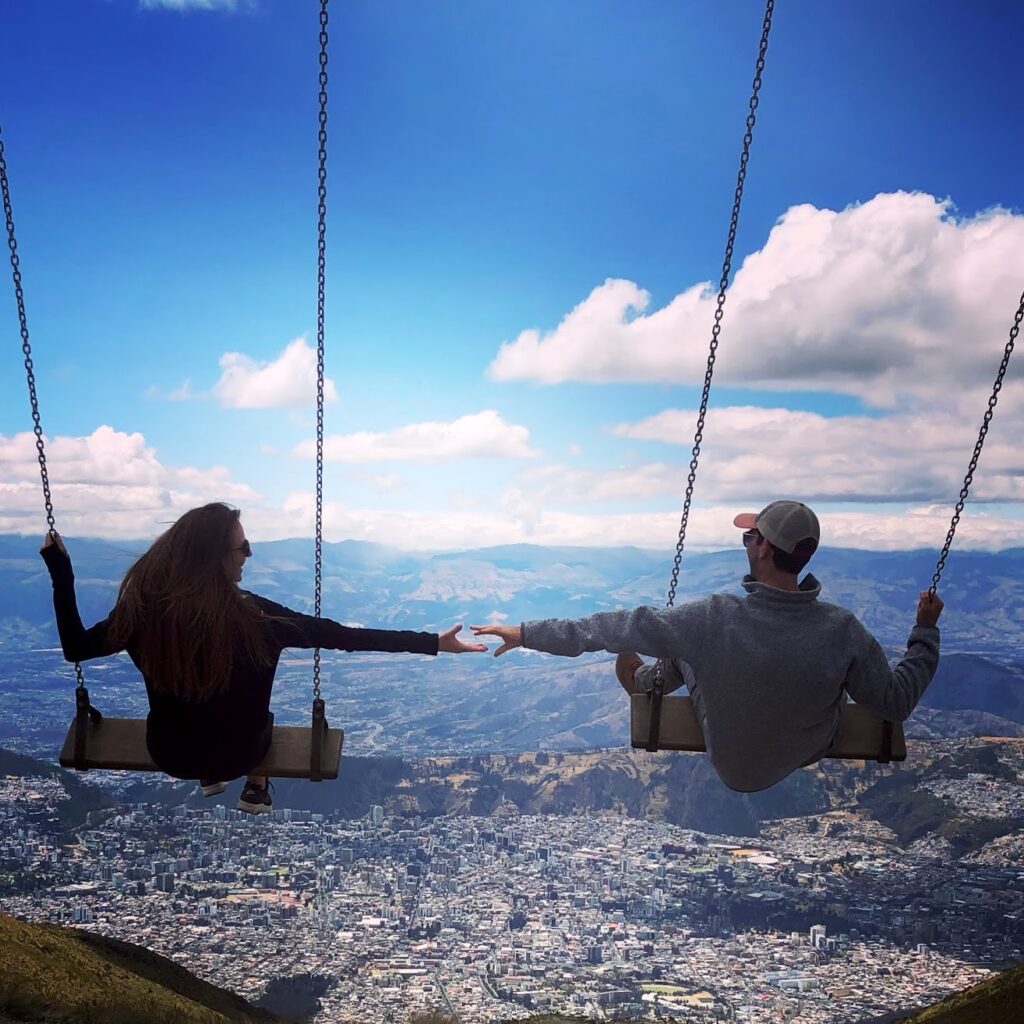
After a bit of planning and high-stakes negotiation, we landed on the following itinerary:
- 2 days in Quito (capital)
- 4 days in the Amazon (Napo Wildlife Center)
- 3 days in the Andes
- 2 days in Cotopaxi (national park home to Ecuador’s most famous volcano)
- 1 day in Quilotoa (beautiful mountain lake)
- 2 days in Banos (spa town just above the Amazon)
- 1 day in Otavalo (tacky tourist market)
- 8 days in Galapagos (Endemic)
This left us short the coast (we do live in California after all), the best-preserved Incan and colonial ruins (Cuenca and Ingapirca), the largest volcano (Chimborazo), the river delta (Guayaquil and environs), and more, but we were generally happy were we landed. If we had to do it all again, we would run it back as planned with the exception of deleting our day at Otavalo.
Quito
Day 0: setting up camp in la ronda
Quito is a neat town. Situated at 9,350 feet between seven monstrous volcanos with its Spanish colonial architecture perfectly preserved, simply walking around town is treat. We selected La Ronda neighborhood as our home base due to its proximity to the historic center of Quito.
Day 1: getting our bearings on the hop-on bus and fine-dining Ecuador-style
At the recommendation of an Ecuadorean friend, we bought tickets to the hop-on tourist bus and spent the day taking in the city. Highlights included a personal tour of the Iglesia y Convento de San Francisco, a huge religious complex that still houses the region’s Franciscan monks, and dinner a Zazu, a truly spectacular restaurant refined all my expectations of fine dining.
Day 2: Climbing Ruco Pichincha
Back in 2005, someone decided to string a gondola, the TelefériQo, halfway up one of the volcanos surrounding Quito. This provides a nice starting point for a hike/scramble up to the summit of Ruco Pichincha, which tops out at a lung-busting 15,407 feet. While the hike itself is only 6 miles round trip, but the elevation, exposure, grade, and challenging pathfinding near the summit meant that you should have been far more prepared than we were. Tori would not recommend climbing in one’s mom’s old tennis shoes to a friend :-).
If you have more time and are more prepared, you can significantly extend the climb to Wawa Pichincha (15,696 feet), but one was enough for us and we were back to the top of the gondola in about three and half hours in time for a nice nap back at our hotel and a delicious dinner of locro, an Ecuadorean potato stew.
Napo Wildlife Center
Day 3: The voyage to the Napo Wildlife Center
Door to door, Quito to the Napo Wildlife Center is over 6 hours. We flew from Quito to Coca, motored 2 hrs down the Napo River in a large pirogue, and finally hopped in a canoe powered by our two guides to follow Anangu creek to our lodge. Notably, the Napo river was dotted with drilling rigs, Chevron-marked barges, midstream processing plants, and other signs of exploitation. While technically, most of the Ecuadorean Amazon is a national park, the government got a little more flexible once oil was discovered within. Pink river dolphins, anacondas, and other animals used to swim far up the river, but the constant stream of activity has put pressure on their habit and this special place on earth.
Day 4: Stood up by scarlet Macaws
Tori has never been so excited for at 5:30 AM wake-up call on vacation. We were due at the clay-lick at sunrise to catch the parrots indulging in their favorite mineral treat. It was amazing to watch the parrots circle, and fly from tree to tree before building consensus to finally dive down for a taste, only to be spooked back to the trees with the snap of a twig. Unfortunately, the scarlet macaws did not feel so charitable. After lying in wait for hours and catching glimpses of their angular silhouettes circling overhead, we packed up our bags and headed back for lunch.
That evening, we took a night hike after a brief rainstorm. Luckily, the always-prepared Napo wildlife center provided rubber boots to keep our ankles safe from curious anacondas and bullet ants. The Amazon is far more alive by night than by day. Stumbling across a giant scorpion/spider combo did not leave Tori sleeping well that night after we got back.
Day 5: Competitive Birdwatching
We spent the morning atop a Kapok tree scanning the horizon for spider monkeys, howler monkeys, birds of all sorts, sloths, and anything else that lives in the the canopy of the Amazon. Neither Tori nor I entered the festivities as particularly enthusiastic birders, but we left with a lifetime hobby. There is something strangely satisfying about sitting in a tree canopy with binoculars and finally spotting a toucan that was in your field of view the whole time.
In the afternoon, we paddled around Anangu Lagoon in search of the arapaima, a 10-foot-long, 400-pound, air-breathing freshwater fish. Yes, such a thing does exist and yes, we did find them. Photos really don’t do the experience justice of seeing a giant scaled creature emerge from the depths and expose a giant back before slipping below the surface of the black lagoon.
Andes
Day 6: Third time’s the charm or Welcome to the Andes
After a magnificent stay in the Amazon, our time had come to move on. While Coca is only a couple hundred miles from Quito, the overland route is full of slow, winding switchbacks so we flew back to save time. However, saving time flying is predicated on being able to actually land in Quito. The airport sits on a plateau 9,200 feet above sea level surrounded by a half dozen volcanoes that drive ripping crosswinds across the runway and hold visibility destroying clouds overhead. Landing a small plane is difficult to say the least. Gusts nearly blew us off the runway on the first attempt and I knew we were in for a ride when I heard the engines wind back up and felt the pilot yank on the elevator. We ascended into a cloudy whiteout for another try and I just prayed that the pilot knew where all of those volcanoes were.
The second try was no better. As holes opened up in the clouds, we tried to spot landmarks and figure out where the hell we were going. The first retry took close to an hour and I knew that our little puddle jumper didn’t have much fuel on onboard. Was the pilot scoping out a highway landing down valley? Yes, he was. Over the radio in Spanish, “Crackle…yeah, we’re going to try one more time and then we need to land in Latacunga”. Cue panicking Gringos. This would have been awfully inconvenient for us as we had planned to meet a driver in Quito, but c’est la vie.
Fortunately, our Top Gun pilot put the plane down in Quito on the third attempt. I let him know if broken Spanish that Maverick and Ice Man would be proud and he responded that that was a close one. Glad he was confident.
Despite arriving two hours late, we found our driver patiently waiting at the terminal. The road to Cotopaxi National Park is literally a thousand years old, so it requires a pre-booked 4×4 to access. After driving south for a few hours on the congested Panamerican Highway, we spotted Cotopaxi for the first time. What a sight! The nearly 20k foot volcano emerges out of nowhere and dominates the skyline.
At Machachi, we turned west and began the big ascent up to the park. The scenery was incredible. The Andean people on the west side of the valley enjoy a seemingly idyllic existence growing corn and raising cows alongside an ancient Inca road overlooking one of the most spectacular vistas on the planet. Our breaths were taken away when we arrived at our hotel, Hacienda Los Mortinos. The mission-style building sits at the feet of Cotopaxi and the air is so clear that you see the mountains of Colombia to the north. Carlos gave us a warm welcome and served up a delicious dinner before we called it a night.
Day 7: Visiting the Cotopaxi Refugio
In the morning, we awoke to epic views that stretched north to the Colombian border. Tori was itching for some equestrian action, so we saddled up and rode horses through the environs for some big views and impromptu llama herding. That afternoon, Patricio, a local guide, taught us far-ranging lessons on the local Inca ruins, the source of Guitig water, and the eruption cycles of Cotopaxi. We then took advantage of the beautiful day and took a casual hike up to the snow line at 16,500 feet before returning to the hacienda with a rare Andean Condor sighting fresh in our minds. Over dinner, we enjoyed conversation with a French couple reeling from the gilets jaunes protestors and got a look inside the mind of the gendarme captain responsible for maintaining order amidst the chaos.
Day 8: Lapping Quilotoa
The next morning we reunited with Patricio for a lap around Lake Quilotoa, a spectacular Andean caldera (perhaps more stunning than Askja in Iceland?). On the drive there, we enjoyed big views across the other side of the valley and saw how many of the Andrean people still lived. While Patricio’s face on the east side of the Pan-American highway is rich and fertile, the west side is barren and windswept. Hunched-over shepherds coaxed their bleating flock over thousand-year-old Incan terraces and farmers navigated elaborate paths up and down their hillside fields. Life totally changed with the aspect.
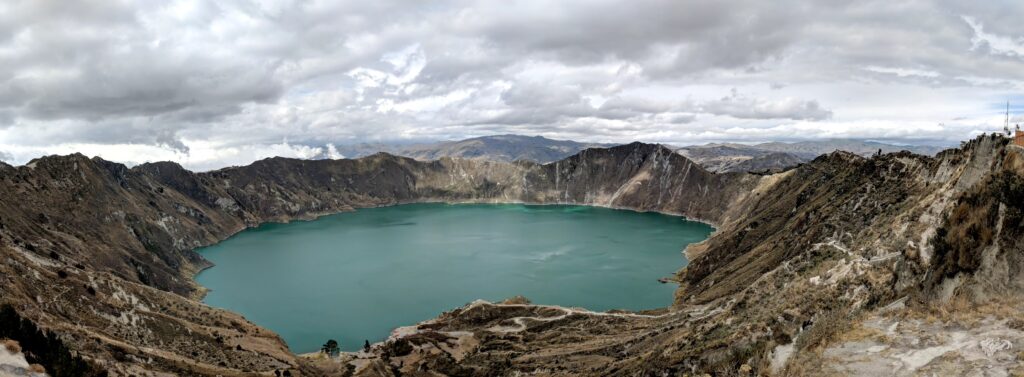
After the 12-mile hike around the lake, Patricio took us to Luna Volcán, a fancy spa in Baños. Transitioning from winding our way through nomadic looking villages to kitschy luxury was a bit disorienting, but we were ready for a couple days of relaxation after all that hiking.
Baños
Day 9: Relaxing in Baños
Baños was relaxing. Hot tubs, massages, and incredible views from our tacky honeymoon suite. Luna Volcan is without a doubt a beautiful place but the vibe is some kind of Nash equilibrium between Hugh Heffner and J. R. R. Tolkien.
Day 10: Enough relaxing
After almost two full days of soaking, we decided we had relaxed enough. We hopped on the bus back to Quito, bought all the best snacks from vendors along the way, and laughed the drive away to a couple of cheesy Mexican dramas.
Otavalo
Day 11: How not to be a tourist
Our last day in mainland Ecuador was a miss. Normally, we are skeptical of tourist markets and would choose to skip. However, we kept hearing again and again that we had to visit the Otavalo market–on the plane, in our hotel, from other tourists, and so on. We knew that we had to squeeze in a trip somehow, so signed up for a tour advertised on one of those flyers on display in hotels. We ended up stuck in a bus and shuttled from cheesy tourist trap to cheesy tourist trap. By the time we made it to Otavalo, we were a little jaded, but the market still disappointed. While I’m sure an enthusiast could pick out unique vegetables and spices or find high-quality woven goods, we mostly saw identical made-in-China chachkies on display. I was reminded of my experience in Beijing where I first learned where all of these handicrafts from around the world come from. But despite the setback, we made it home, visited a beautiful lake, and made it back to Quito to prepare for the big trip to the Galápagos.
Galápagos Islands
Day 12: St. Mary’s crabs in Bahia de Barcas
Another early wakeup had us back at the airport and flying to the Galápagos. Fortunately, our 737 (R.I.P. Boeing) handled the winds without complaint and we arrived on Isla Baltra by mid-morning. There, we were greeted by iguanas lounging outside the gate, sea lions lying across the sidewalk, and a sky full of diving birds. We knew we had arrived in a special place.
We met our guide (Hi Ruly!) and our group, loaded the boat, and spent the afternoon at Bahía de Barcos watching the curious Lightfoot crabs scurrying over the exposed rock and playing chicken with breaking waves and spying a few flamingos in bathing in the lagoon. Even this heavily trafficked little beachhead was full of life. I’ve read all kinds of stories about what the world was like before humans arrived, but now were we living it. It’s one thing to read that piles of 2-foot lobsters used to wash ashore in Massachusetts or that Passenger Pigeons once blackened the air when they migrated, but it’s quite another to see complex life thriving in every available niche without competition from the world’s top predator.
Day 13: hammerhead spotted in Genevosa
We awoke in Genevosa for our first full day in the Galápagos. After decadent breakfast (everything is decadent on the Endemic), we ventured ashore and enjoyed our first of many nature walks. Life was everywhere. The flora was laden with boobies, herons, frigate birds, finches, and plenty of other winged creatures. The sand was crisscrossed with small trenches left by iguana tails and sea lion barks permeated the air. Every island pool was full of fish. We see in the Galápagos that the default state of the world is alive.
In the afternoon, we snorkeled in the bay and discovered that life in the Galápagos is just as resilient underwater. While visibility is relatively poor in the nutrient-rich water, rich schools of fish took shelter under every overhanging rock ledge and dozens of giant rays circled beneath. While hammerhead sharks are rare in these waters, we even spotted a loner slip past.
Day 14: Tortoise invasion on Santa Cruz
The famous Galápagos tortoises were nearly hunted to extinction by 19th-century mariners stopping for provisions. Fortunately, the Ecuadorean and British governments stepped in to help and established a number of breeding centers across the archipelago to help repopulate the islands. We visited one of the larger centers on Santa Cruz island and couldn’t round a corner without one of these living dinosaurs in sight. Unfortunately, this tortoise concentration does not extend beyond the boundaries of the protected areas and conservationists estimates that hundreds of years of work will be required to restore the range of the Galápagos tortoise.
We spent the afternoon motoring to Santiago, one of the newer islands in the archipelago. Life barely hangs on there with scrubby cacti reaching their roots through the exposed lava and little soil accumulated to support more life. With time, Santiago will transform into one of its more vibrant neighbors before the volcanic cone weathers away, rain ceases to fall, and the desert returns. Ashes to ashes…
Day 15: Paradise found on Isabella
Every expedition in the Galápagos is highly curated. This is critical. As much as I would like to explore more widely, the Galápagos is one of the last wild places on earth and needs zealous protection. That said, this means that the hikes are often only a mile or so and if your personality requires exercise, you could get restless on tour. Fortunately, we finally got a reasonable walk in and climbed to the top of Sierra Negra volcano, which erupted in 2018 and covered the crater with a fresh coat of lava.
After our hike, we wandered through Puerto Villamil gawking at dozens of flamingos, laughing at their transformation to flying snakes when they took to air, and enjoying some beachside shots. I fell totally under Puerto Villamil’s spell and would heretically recommend a Galápagos traveler consider staying here for a week or so rather than the full tour. Isabella and Fernandina are both spectacular and a land stay would open up far more opportunities to connect with locals and choose your own adventure.
Day 16: Penguins at last on isabella
Isabella is a huge island. Overnight, we wrapped around the west side and made two stops in Bahía Isabelle and Bahía Urvina. Unlike the islands closer to Santa Cruz, we were on our own on Isabella. We hiked through mountains of marine iguanas, caught sea lions napping in mangroves, and caught our first glimpse of penguins. These little birds can swim! I tried to capture them skipping across the surface of the water with their funny little butterfly stoke on CMOS, but they were just too darn fast. We also encountered giant sea turtles for the first time while snorkeling. They are slow and don’t seem to mind humans, so I just snorkeled alongside as they lazed about the sea floor.
Day 17: Baby sea lions on Punta Espinosa
We finally arrived at Fernandina, the most remote of the Galápagos archipelago. She did not disappoint. Fernandina also happens to be one of the best-preserved islands because its banks are paved with a layer of marine iguanas. Not only do these creatures look intimidating, but they let salty sneezes rip every few minutes. The marauding mariners of yore believed that they were spitting poison and couldn’t muster the courage to come ashore. This twist of fate left Fernandina blistering with life. By this point, I had a bit of photo fatigue, so we just watched and enjoyed.
Day 18: There can be only one beach master on Buccaneer Bay
As our Galápagos tour came to a close, my camera trigger finger became weary. We encountered no fewer amazing creatures toward the end of the trip than toward the beginning, but we found ourselves enjoying rather than capturing the moment. For our ultimate non-transit day, we anchored in Buccaneer Bay as buccaneers of the time did to seek respite from the elements and hide treasure in the plethora of caves eroded into the islands. Sea lions also like these caves and I had the pleasure of playing with one underwater as he charged me head-on.
The life of a male sea lion is brutish and uncertain. One beach can only sustain a single male, so as soon as they reach adolescence, they become locked in an existential struggle for survival that results in cycles of attacks and recovery in attempts to conquer the limited number of beaches. While I have nothing on film, we witnessed one of these mêlées from a dozen feet away as two massive males slid onto the beach locked in combat. After thrashing around for a bit and sending us scattering, they re-entered the water and continued the fray below depths. Later, we found the loser alone and nursing his bloody wounds on the beach.
Day 19: Farewell to baby sea lions on Mosquera Island
Before disembarking and beginning the trip back to the mainland, we stopped on a sliver of sand that sea lions love to use as day care. Baby sea lions waited impatiently as their mothers hunted for sustenance. Some of these pups looked weeks old and mistook us for their mothers, whimpering and waddling towards us as Tori dreamt of taking one home and raising it as her own.
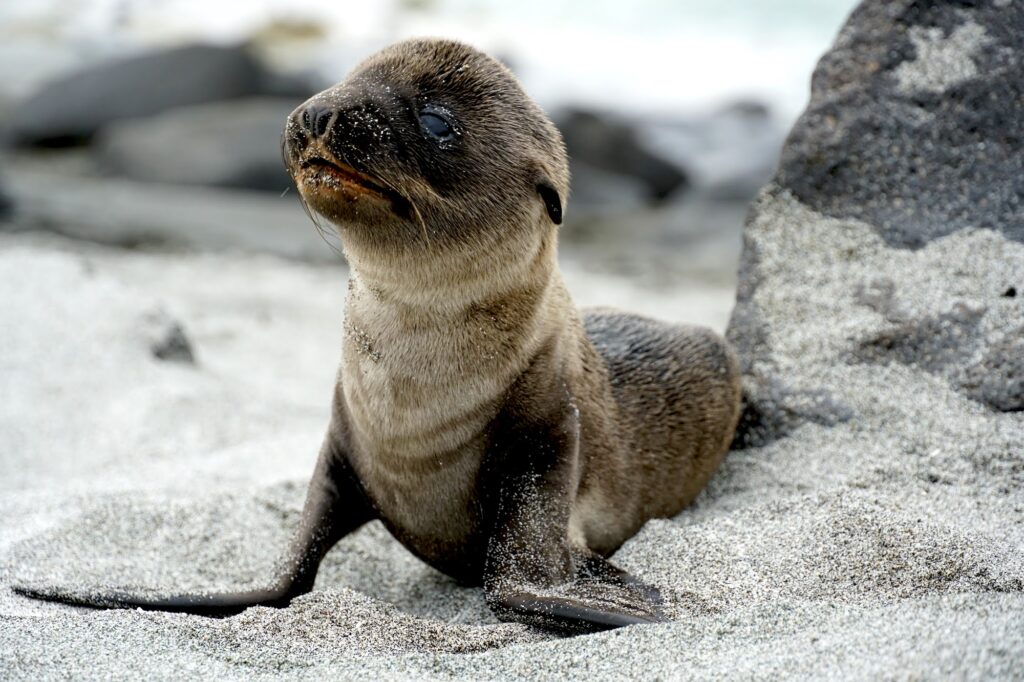
Day 20: Goodbye, Ecuador
After a quick flight back from the Galápagos, we returned to Quito one last time. We said goodbye over fancy tapas at the magnificent Hotel Plaza Grande and shared a drink with a ex-ex-pat family that moved back to Ecuador after a couple decades in Texas. Who knows? Maybe we will follow in their footsteps. Thanks for the amazing honeymoon, Ecuador. I hope we’ll be back.
